NGC

Copyright by WikiSky.org, WikiSky's snapshot tool



Copyright by WikiSky.org, WikiSky's snapshot tool

The left somewhat elongated part is cataloged under IC 1537.

Jschulman555, CC BY-SA 4.0, via Wikimedia Commons
At the top is NGC 83.
To the left is NGC 985 with galaxy IC 1546 below it.
Even further left the narrow horizontal galaxy is NGC 86.
In the center is NGC 90 and below it NGC 93. Together they form Arp 65.
In the lower left corner is NGC 96.

Jschulman555, CC BY-SA 4.0, via Wikimedia Commons
At the top is NGC 83.
To the left is NGC 985 with galaxy IC 1546 below it.
Even further left the narrow horizontal galaxy is NGC 86.
In the center is NGC 90 and below it NGC 93. Together they form Arp 65.
In the lower left corner is NGC 96.

Jschulman555, CC BY-SA 4.0, via Wikimedia Commons
At the top is NGC 83.
To the left is NGC 985 with galaxy IC 1546 below it.
Even further left the narrow horizontal galaxy is NGC 86.
In the center is NGC 90 and below it NGC 93 (together they form Arp 65).
In the lower left corner is NGC 96.

Jschulman555, CC BY-SA 4.0, via Wikimedia Commons
At the top is NGC 83.
To the left is NGC 985 with galaxy IC 1546 below it.
Even further left the narrow horizontal galaxy is NGC 86.
In the center is NGC 90 and below it NGC 93. Together they form Arp 65.
In the lower left corner is NGC 96.

ESO, CC BY 4.0, via Wikimedia Commons, Original-Link
The galaxy group consists of the galaxies NGC 87 (upper right), NGC 88 (center), NGC 89 (lower) and NGC 92 (upper left). Together they form Robert's Quartet.

ESO, CC BY 4.0, via Wikimedia Commons, Original-Link
The galaxy group consists of the galaxies NGC 87 (upper right), NGC 88 (center), NGC 89 (lower) and NGC 92 (upper left). Together they form Robert's Quartet.

ESO, CC BY 4.0, via Wikimedia Commons, Original-Link
The galaxy group consists of the galaxies NGC 87 (upper right), NGC 88 (center), NGC 89 (lower) and NGC 92 (upper left). Together they form Robert's Quartet.

Jschulman555, CC BY-SA 4.0, via Wikimedia Commons
At the top is NGC 83.
To the left is NGC 985 with galaxy IC 1546 below it.
Even further left the narrow horizontal galaxy is NGC 86.
In the center is NGC 90 and below it NGC 93. Together they form Arp 65.
In the lower left corner is NGC 96.

ESO, CC BY 4.0, via Wikimedia Commons, Original-Link
The galaxy group consists of the galaxies NGC 87 (upper right), NGC 88 (center), NGC 89 (lower) and NGC 92 (upper left). Together they form Robert's Quartet.

Jschulman555, CC BY-SA 4.0, via Wikimedia Commons
At the top is NGC 83.
To the left is NGC 985 with galaxy IC 1546 below it.
Even further left the narrow horizontal galaxy is NGC 86.
In the center is NGC 90 and below it NGC 93. Together they form Arp 65.
In the lower left corner is NGC 96.

Jschulman555, CC BY-SA 4.0, via Wikimedia Commons
At the top is NGC 83.
To the left is NGC 985 with galaxy IC 1546 below it.
Even further left the narrow horizontal galaxy is NGC 86.
In the center is NGC 90 and below it NGC 93. Together they form Arp 65.
In the lower left corner is NGC 96.

In the center of the picture is Sh2-173.
In the lower right corner is a very small Sh2-172.
In the upper left corner you can see a part of Sh2-177.
At the bottom of the edge are the star clusters NGC 103 (center) and NGC 136 (left).

Martin Bernardi, CC BY-SA 4.0, via Wikimedia Commons
The cloud is the small Magellanic Cloud NGC 292.
The globular cluster above is NGC 104 (47 Tucanae).
The spherical cluster on the left is NGC 362 (C104).
In the cloud there is also NGC 346 (upper big blue spot) and NGC 371 (lower blue spot).
The star cluster NGC 371 is surrounded by the emission nebula N76A.

In the center of the picture is Sh2-173.
In the lower right corner is a very small Sh2-172.
In the upper left corner you can see a part of Sh2-177.
At the bottom of the edge are the star clusters NGC 103 (center) and NGC 136 (left).

Copyright by Legacy Surveys / D. Lang (Perimeter Institute), CC BY 4.0


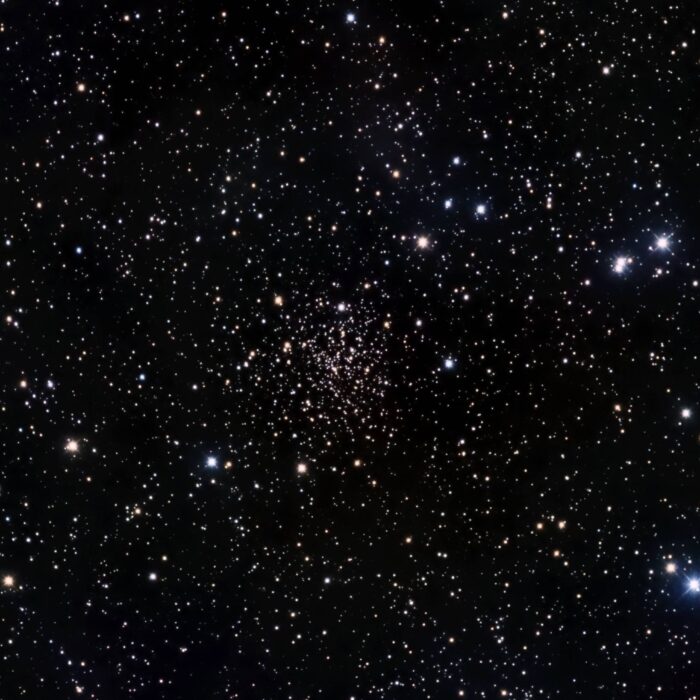
Is located close to Polaris.

Starhopper, CC BY-SA 4.0, via Wikimedia Commons
The galaxy to the left of Andromeda in the image of M31.


Adam Block/Mount Lemmon SkyCenter/University of Arizona, CC BY-SA 3.0 US, via Wikimedia Commons

Starhopper, CC BY-SA 4.0, via Wikimedia Commons
The galaxy to the right of Andromeda in the image of M31.

Starhopper, CC BY-SA 4.0, via Wikimedia Commons

Hewholooks, CC BY-SA 3.0, via Wikimedia Commons
The blue reflection nebula is vdB 4.
The dark nebula above is LDN 1302.

On the left edge the galaxy NGC 255 is still visible.


In the upper left is the star cluster NGC 288.
In the center is NGC 253 (C65).

NGC 247 can be seen in the center.

Adam Block/Mount Lemmon SkyCenter/University of Arizona, CC BY-SA 3.0 US, via Wikimedia Commons

Chuck Ayoub, CC BY-SA 4.0, via Wikimedia Commons
The nebula is NGC 281.
In the center is the open cluster IC 1590, which is causing the nebula to glow.
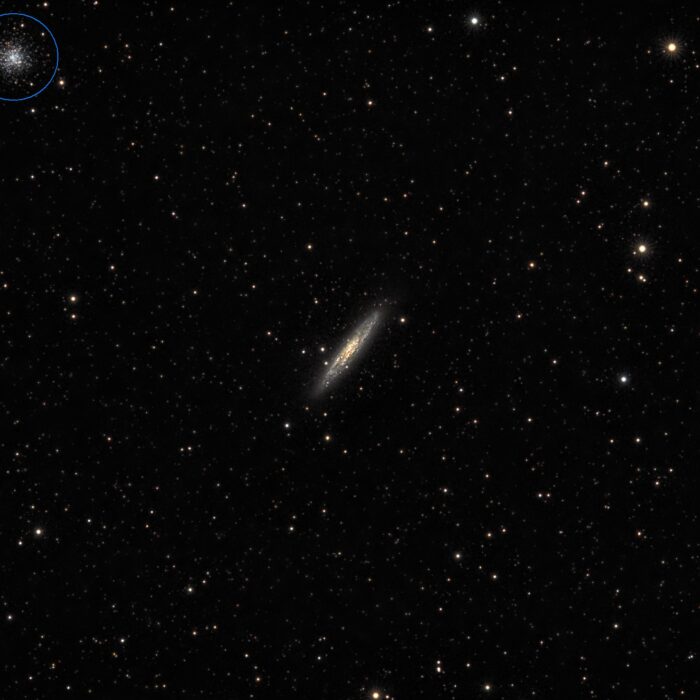
In the upper left is the star cluster NGC 288.
In the center is NGC 253 (C65).

Adam Block/ChileScope, CC BY-SA 4.0, via Wikimedia Commons

Martin Bernardi, CC BY-SA 4.0, via Wikimedia Commons
The cloud is the small Magellanic Cloud NGC 292.
The globular cluster above is NGC 104 (47 Tucanae).
The globular star cluster to the left is NGC 362 (C104).
In the cloud there is also NGC 346 (upper big blue spot) and NGC 371 (lower blue spot).
The star cluster NGC 371 is surrounded by the emission nebula N76A.


Judy Schmidt from Fresh Meadows, NY, USA, CC BY 2.0, via Wikimedia Commons

Copyright by WikiSky.org, WikiSky's snapshot tool
At the end of the spiral arm is the irregular galaxy PGC 3627.

Martin Bernardi, CC BY-SA 4.0, via Wikimedia Commons
The cloud is the small Magellanic Cloud NGC 292.
The globular cluster above is NGC 104 (47 Tucanae).
The globular cluster to the left is NGC 362 (C104).
In the cloud there is also NGC 346 (upper big blue spot) and NGC 371 (lower blue spot).
The star cluster NGC 371 is surrounded by the emission nebula N76A.
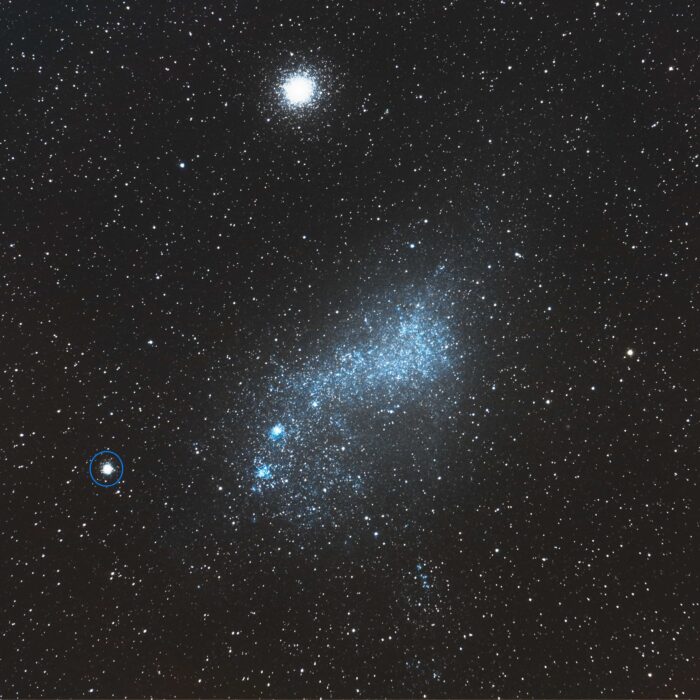
Martin Bernardi, CC BY-SA 4.0, via Wikimedia Commons
The cloud is the small Magellanic cloud NGC 292.
The globular cluster above is NGC 104 (47 Tucanae).
The globular cluster to the left is NGC 362 (C104).
In the cloud there is also NGC 346 (upper big blue spot) and NGC 371 (lower blue spot).
The star cluster NGC 371 is surrounded by the emission nebula N76A.

Martin Bernardi, CC BY-SA 4.0, via Wikimedia Commons
The cloud is the small Magellanic cloud NGC 292.
The globular cluster above is NGC 104 (47 Tucanae).
The globular cluster to the left is NGC 362 (C104).
In the cloud there is also NGC 346 (upper big blue spot) and NGC 371 (lower blue spot).
The star cluster NGC 371 is surrounded by the emission nebula N76A.

The star cluster on the upper left is C13 (NGC 457).
In the lower right is NGC 436.

Copyright by WikiSky.org, WikiSky's snapshot tool
The galaxy to the left of NGC 455 is PGC 4583.
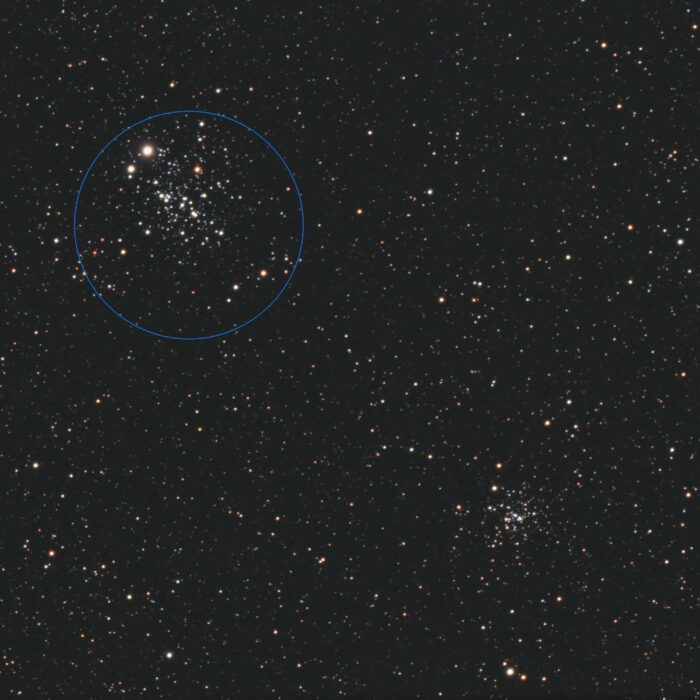
The star cluster on the upper left is C13 (NGC 457).
Bottom right is NGC 436.

On the left is NGC 474.
To the right is NGC 470.
Together they form the galaxy pair Arp 227, with the center located in NGC 474.
On the lower right is the galaxy NGC 467.
The three galaxies form the galaxy trio KTG 5.
The center of the galaxy group is referred to as Abell 227.

On the left is NGC 474.
To the right is NGC 470.
Together they form the galaxy pair Arp 227, with the center located in NGC 474.
On the lower right is the galaxy NGC 467.
The three galaxies form the galaxy trio KTG 5.
The center of the galaxy group is referred to as Abell 227.

On the left is NGC 474.
To the right is NGC 470.
Together they form the galaxy pair Arp 227, with the center located in NGC 474.
On the lower right is the galaxy NGC 467.
The three galaxies form the galaxy trio KTG 5.
The center of the galaxy group is referred to as Abell 227.


Copyright by WikiSky.org, WikiSky's snapshot tool


Jschulman555, CC BY-SA 4.0, via Wikimedia Commons

Copyright by WikiSky.org, WikiSky's snapshot tool

Copyright by WikiSky.org, WikiSky's snapshot tool

Copyright by WikiSky.org, WikiSky's snapshot tool
NGC 541 is a member of the galaxy cluster Abell 194.
The small blue galaxy to the left of NGC 541 is named Minkowski's Object.
Diagonally above it on the left is the pair of galaxies Arp 308 (NGC 545 above, NGC 547 below).

The dark cloud next to it is LDN 1325.



The emission nebula is located in the galaxy M33.

The small red nebula area directly below the center is NGC 595.
In the upper right of the galaxy, the small nebula area NGC 604 can be seen.

The emission nebula is located at the edge of the galaxy M33.

Copyright by Legacy Surveys / D. Lang (Perimeter Institute), CC BY 4.0 (nachbearbeitet mit Gimp)
The bright galaxy at the left edge of the image is NGC 623.
Directly to the right is NGC 619.
The galaxy on the right is NGC 612.
In the lower right corner is PGC 5807 and in the center of the image is PGC 5862.


Copyright by Legacy Surveys / D. Lang (Perimeter Institute), CC BY 4.0 (nachbearbeitet mit Gimp)
The bright galaxy at the left edge of the image is NGC 623.
Directly to the right is NGC 619.
The galaxy on the right is NGC 612.
In the lower right corner is PGC 5807 and in the center of the image is PGC 5862.

Copyright by Legacy Surveys / D. Lang (Perimeter Institute), CC BY 4.0 (nachbearbeitet mit Gimp)
The bright galaxy at the left edge of the image is NGC 623.
Just to the right of it is NGC 619.
The galaxy on the right is NGC 612.
In the lower right corner is PGC 5807 and in the center of the image is PGC 5862.


Copyright by Legacy Surveys / D. Lang (Perimeter Institute), CC BY 4.0
The large spiral galaxy is NGC 646-1, and the small one on the left spiral arm is PGC 6014 (NGC 646-2).


On the left the star cluster is NGC 659.
In the center the large Star cluster is NGC 663.
In the lower right is the Star cluster NGC 654 with the reflection nebula vdB 6.

On the left the star cluster is NGC 659.
In the center the large star cluster is NGC 663.
In the lower right is the star cluster NGC 654 with the reflection nebula vdB 6.


Hewholooks, CC BY-SA 3.0, via Wikimedia Commons
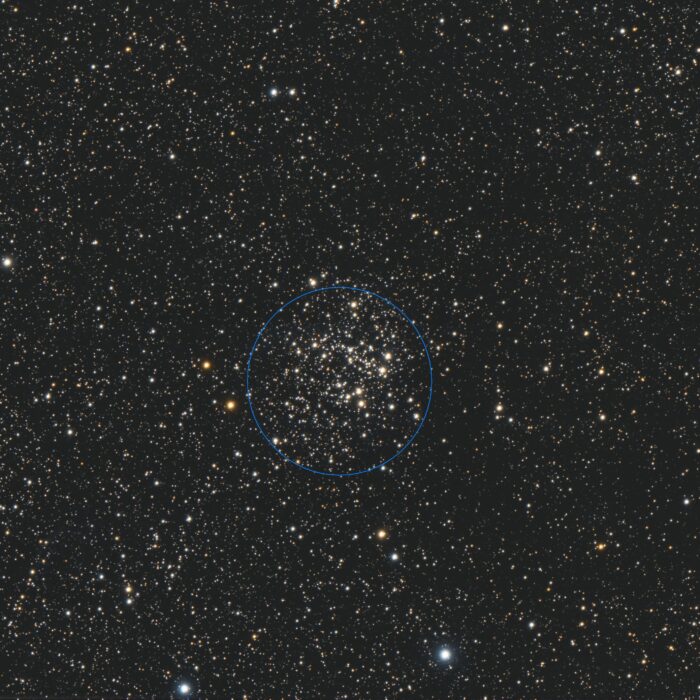
On the left the star cluster is NGC 659.
In the center the large star cluster is NGC 663.
In the lower right is the star cluster NGC 654 with the reflection nebula vdB 6.

KPNO/NOIRLab/NSF/AURA Acknowledgments:
PI: M T. Patterson (New Mexico State University)
Image processing: Travis Rector (University of Alaska Anchorage), Mahdi Zamani & Davide de Martin, CC BY 4.0
The galaxy on the upper right is NGC 672.
The galaxy on the lower left is IC 1727.

To the right of the center of the image is the elliptical galaxy NGC 680.
Directly to the right is NGC 678.
Left below the center of the image is IC 167 (Arp 31) and diagonally right below it is NGC 691.
At the top left of the screen is NGC 697 (NGC 674).

To the right of the center of the image is the elliptical galaxy NGC 680.
Directly to the right is NGC 678.
Left below the center of the image is IC 167 (Arp 31) and diagonally right below it is NGC 691.
At the top left of the screen is NGC 697 (NGC 674).

To the right of the center of the image is the elliptical galaxy NGC 680.
Directly to the right is NGC 678.
Left below the center of the image is IC 167 (Arp 31) and diagonally right below it is NGC 691.
At the top left of the screen is NGC 697 (NGC 674).

To the right of the center of the image is the elliptical galaxy NGC 680.
Directly to the right is NGC 678.
Left below the center of the image is IC 167 (Arp 31) and diagonally right below it is NGC 691.
At the top left of the screen is NGC 697 (NGC 674).

Copyright by WikiSky.org, WikiSky's snapshot tool


The large galaxy in the center of the image is NGC 772.
The small galaxy below is NGC 770.
Together they form the interacting pair of glaxies Arp78.

The right star cluster is NGC 869, the left one is NGC 884.
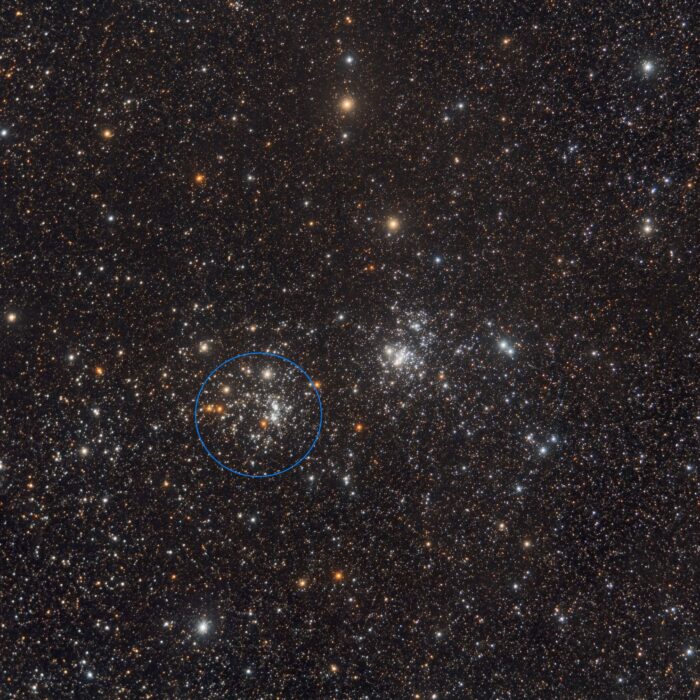
The right star cluster is NGC 869, the left one is NGC 884.

Hewholooks, CC BY-SA 3.0, via Wikimedia Commons

Nicocarver, CC BY-SA 4.0, via Wikimedia Commons
The mouth of the fish (small blue nebula) was discovered first and is called NGC 896.
The bright blue spot in the center of the Heart Nebula is Mel 15 (Collinder 26).
In the center of the Soul Nebula, the bright brown nebula is IC 1871.
The small nebula to the left of the Heart Nebula is Sh2-196. In between are very faintly visible, close together Sh2-192, Sh2-193 and Sh2-194.
The small nebula to the left of the Soul Nebula is Sh2-201.
The small nebula to the lower right of the Soul Nebula is Sh2-198.



Copyright by Legacy Surveys / D. Lang (Perimeter Institute), CC BY 4.0
In the center of the image is NGC 1024.
On the left edge are NGC 1028 (upper galaxy) and NGC 1029 (lower galaxy).
On the right edge, PGC 1385855 can be seen.

Nicocarver, CC BY-SA 4.0, via Wikimedia Commons
The mouth of the fish (small blue nebula) was first discovered and is named NGC 896.
The bright blue spot in the center of the Heart Nebula is Mel 15 (Collinder 26).
In the center of the Soul Nebula, the bright brown nebula is IC 1871.
The small nebula to the left of the Heart Nebula is Sh2-196. Between them, very faintly visible, close together are Sh2-192, Sh2-193 and Sh2-194.
The small nebula to the left of the Soul Nebula is Sh2-201.
The small nebula to the lower right of the Soul Nebula is Sh2-198.

Copyright by Legacy Surveys / D. Lang (Perimeter Institute), CC BY 4.0
In the upper right corner is NGC 1035.
On the left is NGC 1052.
At the bottom of the image is NGC 1042.
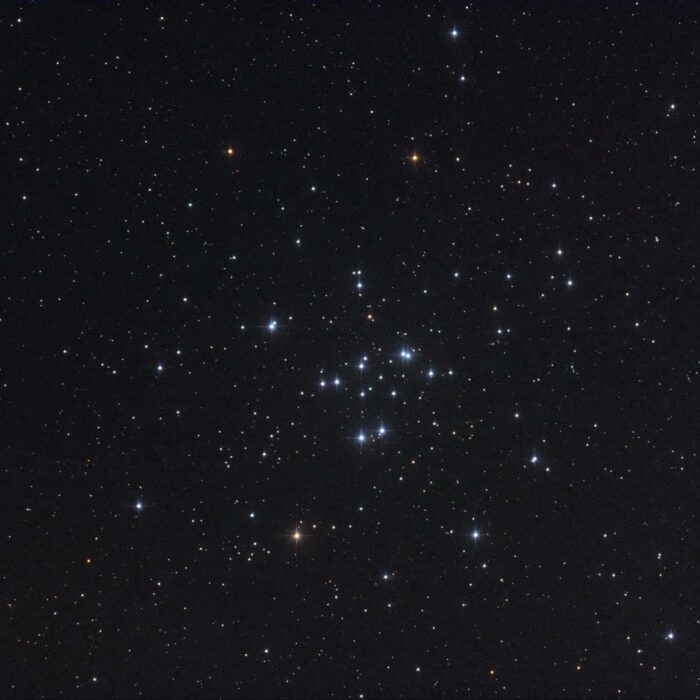
Starhopper, CC BY-SA 4.0, via Wikimedia Commons

Copyright by Legacy Surveys / D. Lang (Perimeter Institute), CC BY 4.0
In the upper right corner is NGC 1035.
On the left is NGC 1052.
At the bottom of the image is NGC 1042.

Copyright by Legacy Surveys / D. Lang (Perimeter Institute), CC BY 4.0
In the upper right corner is NGC 1035.
On the left is NGC 1052.
At the bottom of the image is NGC 1042.

M77 can be seen below.

Above is the galaxy NGC 1055.

Adam Block/Mount Lemmon SkyCenter/University of Arizona, CC BY-SA 3.0 US, via Wikimedia Commons

The small white dot in the right spiral arm is NGC 1097A.

Copyright by WikiSky.org, WikiSky's snapshot tool

Copyright by Legacy Surveys / D. Lang (Perimeter Institute), CC BY 4.0
On the left is NGC 1134, on the right is PGC 10907.

Hubble ESA, CC BY 2.0, via Wikimedia Commons


The small galaxy at the left end of the spiral arm is NGC 1232A (PGC 11834).


Copyright by Legacy Surveys / D. Lang (Perimeter Institute), CC BY 4.0
NGC 1253 is the right galaxy, NGC 1253A (PGC 12053) the left one.
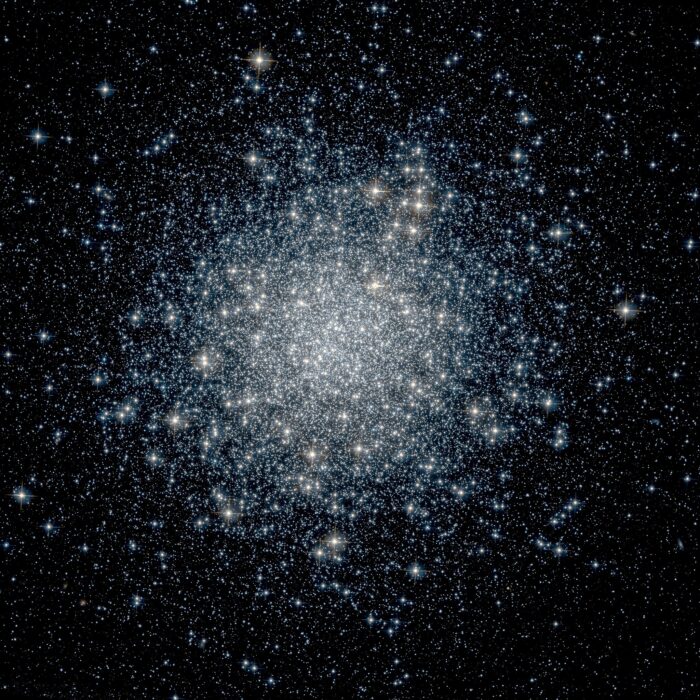
Lithopsian, CC BY-SA 4.0, via Wikimedia Commons

Marie-Lou Gendron-Marsolais (Université de Montréal), Julie Hlavacek-Larrondo (Université de Montréal), Maxime Pivin Lapointe, CC BY 4.0, via Wikimedia Commons



NGC 1313A is visible in the lower left corner.

On the right the large galaxy is NGC 1316 (Arp 154).
Directly to the left is NGC 1317.
Centered on the left edge is NGC 1326.
Below that in the left corner is the pair of galaxies NGC 1326A (top) and NGC 1326B (bottom).

On the right the large galaxy is NGC 1316 (Arp 154).
Directly to the left is NGC 1317.
Centered on the left edge is NGC 1326.
Below that in the left corner is the pair of galaxies NGC 1326A (top) and NGC 1326B (bottom).

On the right the large galaxy is NGC 1316 (Arp 154).
Directly to the left is NGC 1317.
Centered on the left edge is NGC 1326.
Below that in the left corner is the pair of galaxies NGC 1326A (top) and NGC 1326B (bottom).

On the right the large galaxy is NGC 1316 (Arp 154).
Directly to the left is NGC 1317.
Centered on the left edge is NGC 1326.
Below that in the left corner is the pair of galaxies NGC 1326A (top) and NGC 1326B (bottom).

On the right the large galaxy is NGC 1316 (Arp 154).
Directly to the left is NGC 1317.
Centered on the left edge is NGC 1326.
Below that in the left corner is the pair of galaxies NGC 1326A (top) and NGC 1326B (bottom).

In the center the blue bright nebula is NGC 1333.
The dark cloud immediately to the right is Barnard 205.
Diagonally right above, the small blue reflection nebula, is vdB 13.
Far right out, the blue nebula is vdB 16.
The dark cloud to the left is Barnard 204 with the cloud Barnard 206 at the bottom.
Above these clouds is Barnard 203 and again to the left of it, toward vdB 13 is Barnard 203.

Above, the left blue nebula is vdB 18.
Bottom right star cluster is NGC 1342 (Mel 21).

Copyright by Legacy Surveys / D. Lang (Perimeter Institute), CC BY 4.0
The small galaxy at the bottom interacting with NGC 1347 is PGC 816443.

Copyright by Legacy Surveys / D. Lang (Perimeter Institute), CC BY 4.0


SteveCameronBird, CC BY-SA 4.0, via Wikimedia Commons

On the left edge NGC 1365 can be seen.
On the right the large galaxy is NGC 1399 with the galaxy NGC 1404 above it.
In the lower right corner is NGC 1380 with the optical galaxy pair NGC 1374 and NGC 1375 to its left.
To the right of the center of the image is NGC 1387.

On the left edge NGC 1365 can be seen.
On the right the large galaxy is NGC 1399 with the galaxy NGC 1404 above it.
In the lower right corner is NGC 1380 with the optical galaxy pair NGC 1374 and NGC 1375 to its left.
To the right of the center of the image is NGC 1387.

Adam Block, CC BY-SA 4.0, via Wikimedia Commons

On the left edge NGC 1365 can be seen.
On the right the large galaxy is NGC 1399 with the galaxy NGC 1404 above it.
In the lower right corner is NGC 1380 with the optical galaxy pair NGC 1374 and NGC 1375 to its left.
To the right of the center of the image is NGC 1387.

On the left edge NGC 1365 can be seen.
On the right the large galaxy is NGC 1399 with the galaxy NGC 1404 above it.
In the lower right corner is NGC 1380 with the optical galaxy pair NGC 1374 and NGC 1375 to its left.
To the right of the center of the image is NGC 1387.

Judy Schmidt from USA, CC BY 2.0, via Wikimedia Commons
The lower galaxy is NGC 1409, the upper one NGC 1410.

Judy Schmidt from USA, CC BY 2.0, via Wikimedia Commons
The lower galaxy is NGC 1409, the upper one NGC 1410.

Starhopper, CC BY-SA 4.0, via Wikimedia Commons
The asterism is M45 (Pleiades).
The reflection nebula around the rightmost star (Electra) is called vdB 20, the one around the upper star (Maia) vdB 21, around the lower star (Merope) vdB 22 and the nebula around the star in the middle (Alcyone) vdB 23.
Near Merope there is a very small nebula known as Barnard's Merope Nebula (IC 349).
The complete nebular region around Merope is NGC 1435 (Merope Nebula).
The nebula around the upper star Maia is known as NGC 1432 (Maia Nebula).
The faint nebula above the middle star (Alcyone) is IC 1990.

Copyright by Legacy Surveys / D. Lang (Perimeter Institute), CC BY 4.0

Starhopper, CC BY-SA 4.0, via Wikimedia Commons
The asterism is M45 (Pleiades).
The reflection nebula around the rightmost star (Electra) is called vdB 20, the one around the upper star (Maia) vdB 21, around the lower star (Merope) vdB 22 and the nebula around the star in the middle (Alcyone) vdB 23.
Near Merope there is a very small nebula known as Barnard's Merope Nebula (IC 349).
The complete nebular region around Merope is NGC 1435 (Merope Nebula).
The nebula around the upper star Maia is known as NGC 1432 (Maia Nebula).
The faint nebula above the middle star (Alcyone) is IC 1990.

Copyright by Legacy Surveys / D. Lang (Perimeter Institute), CC BY 4.0

Chuck Ayoub, CC BY-SA 4.0, via Wikimedia Commons

Adam Block/Mount Lemmon SkyCenter/University of Arizona, CC BY-SA 4.0, via Wikimedia Commons
The galaxy to the left is PGC 14314.

Stephen Rahn from Macon, GA, USA, CC0, via Wikimedia Commons


The Kemble cascade passes once obliquely through the image.
At the bottom of the asterism is NGC 1502.

Copyright by Legacy Surveys / D. Lang (Perimeter Institute), CC BY 4.0

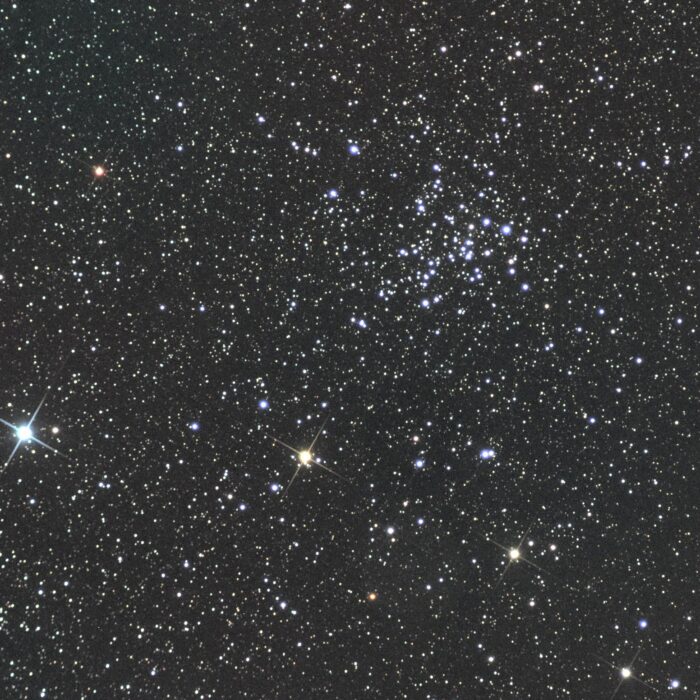
Egres73, CC BY-SA 4.0, via Wikimedia Commons


Adam Block/Mount Lemmon SkyCenter/University of Arizona, CC BY-SA 4.0, via Wikimedia Commons


Copyright by WikiSky.org, WikiSky's snapshot tool
In the center of the image is NGC 1553.
Above it is NGC 1549.
In the lower right is NGC 1546.
On the lower left, the slim galaxy, is IC 2058.

Copyright by WikiSky.org, WikiSky's snapshot tool
In the center of the image is NGC 1553.
Above it is NGC 1549.
In the lower right is NGC 1546.
On the lower left, the slim galaxy, is IC 2058.

Copyright by WikiSky.org, WikiSky's snapshot tool
In the center of the image is NGC 1553.
Above it is NGC 1549.
In the lower right is NGC 1546.
On the lower left, the slim galaxy, is IC 2058.

Sh2-239 is located in the lower left embedded in the dark nebula LDN 1551.
The dark nebula in the center is LDN 1543.
The veil connecting the two dark nebulae is LDN 1546.
Top right the bright one right next to the star Tau Tauri is NGC 1555 (Hind's Variable Nebula, Sh2-238, vdB 28).
The nebula around it is Be 84.
To the right of NGC 1555 is the double star system NGC 1554 (visible in large view) and below it the bright star is HD 27560.




In the center of the image is NGC 1579.
Obliquely above it on the right is IC 2067.
The distance for IC 2067 is taken to be that of NGC 1579, assuming that the two are in conjunction.

Copyright by Legacy Surveys / D. Lang (Perimeter Institute), CC BY 4.0

Copyright by WikiSky.org, WikiSky's snapshot tool

Copyright by Legacy Surveys / D. Lang (Perimeter Institute), CC BY 4.0

The star cluster contain the largest magnetic field ever measured from a star.

The bright star is Aldebran.
At upper left is star cluster NGC 1647 (Mel 26).


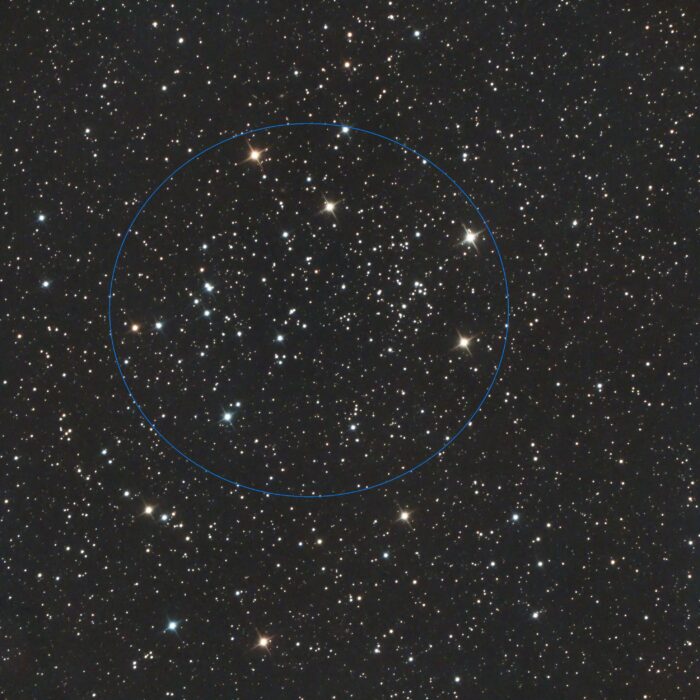
NGC 1746 is an asterism formed by the bright large stars.
In the center of NGC 1746 are the two overlapping star clusters NGC 1750 (center left) and NGC 1758 (center right).

NGC 1746 is an asterism formed by the bright large stars.
In the center of NGC 1746 are the two overlapping star clusters NGC 1750 (center left) and NGC 1758 (center right).

NGC 1746 is an asterism formed by the bright large stars.
In the center of NGC 1746 are the two overlapping star clusters NGC 1750 (center left) and NGC 1758 (center right).

The large nebula area is divided into NGC 1760 (long slim nebula on the right), NGC 1763 (large nebula in the center), NGC 1769 (lower right), and NGC 1773 (small nebula at the bottom).
In the center of this nebula area is the star cluster NGC 1761.
To the left below the center of the image is the spherical Star cluster NGC 1783.

The large nebula area is divided into NGC 1760 (long slim nebula on the right), NGC 1763 (large nebula in the center), NGC 1769 (lower right), and NGC 1773 (small nebula at the bottom).
In the center of this nebula area is the star cluster NGC 1761.
To the left below the center of the image is the spherical Star cluster NGC 1783.

The large nebula area is divided into NGC 1760 (long slim nebula on the right), NGC 1763 (large nebula in the center), NGC 1769 (lower right), and NGC 1773 (small nebula at the bottom).
In the center of this nebula area is the star cluster NGC 1761.
To the left below the center of the image is the spherical Star cluster NGC 1783.

The large nebula area is divided into NGC 1760 (long slim nebula on the right), NGC 1763 (large nebula in the center), NGC 1769 (lower right), and NGC 1773 (small nebula at the bottom).
In the center of this nebula area is the star cluster NGC 1761.
To the left below the center of the image is the spherical Star cluster NGC 1783.

The large nebula area is divided into NGC 1760 (long slim nebula on the right), NGC 1763 (large nebula in the center), NGC 1769 (lower right), and NGC 1773 (small nebula at the bottom).
In the center of this nebula area is the star cluster NGC 1761.
To the left below the center of the image is the spherical Star cluster NGC 1783.

The large nebula area is divided into NGC 1760 (long slim nebula on the right), NGC 1763 (large nebula in the center), NGC 1769 (lower right), and NGC 1773 (small nebula at the bottom).
In the center of this nebula area is the star cluster NGC 1761.
To the left below the center of the image is the spherical Star cluster NGC 1783.

To the right of the blue reflection nebula NGC 1788, the thinner part of the dark nebula is LDN 1616, the large tail is LDN 1615.

ESO, CC BY 4.0, via Wikimedia Commons, Original-Link





Copyright by WikiSky.org, WikiSky's snapshot tool (nachbearbeitet mit PixInsight und Gimp)
The star cluster right above is NGC 1810.
The star cluster above left is KMHK 507.
The star cluster left below is composed of BRHT 27a and BRHT 27b.
The small star cluster right below is BSDL 486.

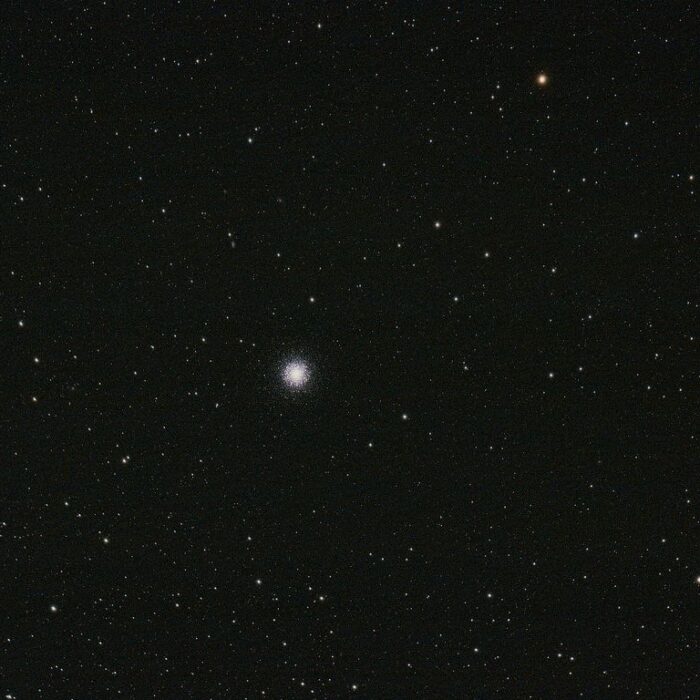


NASA Hubble, CC BY 2.0, via Wikimedia Commons
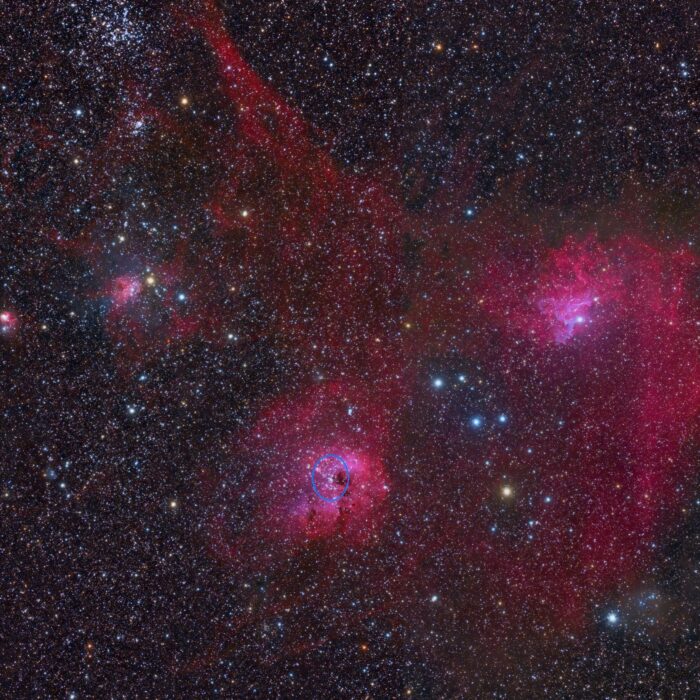
On the right the bright nebular section is IC 405 with the reflection nebula vdB 34.
Below is IC 410 with the embedded open star cluster NGC 1893.
At the lower left is very faintly visible vdB 39.
Left center the larger nebula is IC 417 and left beside it the small nebula is NGC 1931 (Fly Nebula). Together with the rest of the nebulae they form the large nebula area Sh2-230.
In the upper left corner you can still see M38.
Directly below the small star cluster is NGC 1907.
Between IC 405 and IC 410 lies Melotte 31.
Melotte 31 consists of the six adjacent stars (18 Aur - top right, 19 Aur - top left, 17 Aur - center right, IQ Aur - center left, 16 Aur - bottom) and the stars in between. Harrington also included the star 14 Auriga (at the bottom of the image) and called the structure a Lacrosse racket (Harrington 4).


On the right the bright nebular section is IC 405 with the reflection nebula vdB 34.
Below is IC 410 with the embedded open star cluster NGC 1893.
At the lower left is very faintly visible vdB 39.
Left center the larger nebula is IC 417 and left beside it the small nebula is NGC 1931 (Fly Nebula). Together with the rest of the nebulae they form the large nebula area Sh2-230.
In the upper left corner you can still see M38.
Directly below the small star cluster is NGC 1907.
Between IC 405 and IC 410 lies Melotte 31.
Melotte 31 consists of the six adjacent stars (18 Aur - top right, 19 Aur - top left, 17 Aur - center right, IQ Aur - center left, 16 Aur - bottom) and the stars in between. Harrington also included the star 14 Auriga (at the bottom of the image) and called the structure a Lacrosse racket (Harrington 4).

Starhopper, CC BY-SA 4.0, via Wikimedia Commons

In the upper nebula, at the very top is the emission nebula/star cluster NGC 1929 with the emission nebula NGC 1934 directly below it.
To the right are the emission nebulae NGC 1935 and NGC 1936.
Below NGC 1934, the bright area is the star cluster with emission nebula NGC 1937.
The whole area is also called LHA 120-N 44.
To the right of it the nebular area is the star cluster IC 2128.
In the lower nebular area are the star clusters NGC 1955 (top), NGC 1968 (bottom center), and NGC 1974 (bottom).


In the upper nebula, at the very top is the emission nebula/star cluster NGC 1929 with the emission nebula NGC 1934 directly below it.
To the right are the emission nebulae NGC 1935 and NGC 1936.
Below NGC 1934, the bright area is the star cluster with emission nebula NGC 1937.
The whole area is also called LHA 120-N 44.
To the right of it the nebular area is the star cluster IC 2128.
In the lower nebular area are the star clusters NGC 1955 (top), NGC 1968 (bottom center), and NGC 1974 (bottom).

In the upper nebula, at the very top is the emission nebula/star cluster NGC 1929 with the emission nebula NGC 1934 directly below it.
To the right are the emission nebulae NGC 1935 and NGC 1936.
Below NGC 1934, the bright area is the star cluster with emission nebula NGC 1937.
The whole area is also called LHA 120-N 44.
To the right of it the nebular area is the star cluster IC 2128.
In the lower nebular area are the star clusters NGC 1955 (top), NGC 1968 (bottom center), and NGC 1974 (bottom).

In the upper nebula, at the very top is the emission nebula/star cluster NGC 1929 with the emission nebula NGC 1934 directly below it.
To the right are the emission nebulae NGC 1935 and NGC 1936.
Below NGC 1934, the bright area is the star cluster with emission nebula NGC 1937.
The whole area is also called LHA 120-N 44.
To the right of it the nebular area is the star cluster IC 2128.
In the lower nebular area are the star clusters NGC 1955 (top), NGC 1968 (bottom center), and NGC 1974 (bottom).

In the upper nebula, at the very top is the emission nebula/star cluster NGC 1929 with the emission nebula NGC 1934 directly below it.
To the right are the emission nebulae NGC 1935 and NGC 1936.
Below NGC 1934, the bright area is the star cluster with emission nebula NGC 1937.
The whole area is also called LHA 120-N 44.
To the right of it the nebular area is the star cluster IC 2128.
In the lower nebular area are the star clusters NGC 1955 (top), NGC 1968 (bottom center), and NGC 1974 (bottom).

This Sharpless object has been removed from the BFS catalog (updated Sh2 catalog) for HII nebulae.

In the upper nebula, at the very top is the emission nebula/star cluster NGC 1929 with the emission nebula NGC 1934 directly below it.
To the right are the emission nebulae NGC 1935 and NGC 1936.
Below NGC 1934, the bright area is the star cluster with emission nebula NGC 1937.
The whole area is also called LHA 120-N 44.
To the right of it the nebular area is the star cluster IC 2128.
In the lower nebular area are the star clusters NGC 1955 (top), NGC 1968 (bottom center), and NGC 1974 (bottom).

Starhopper, CC BY-SA 4.0, via Wikimedia Commons

The galaxy to the left is UGC 3342.
Below that is UGC 3344.
In the lower left corner are the galaxies UGC 3349A (right) and UGC 3349 (left).

In the upper nebula, at the very top is the emission nebula/star cluster NGC 1929 with the emission nebula NGC 1934 directly below it.
To the right are the emission nebulae NGC 1935 and NGC 1936.
Below NGC 1934, the bright area is the star cluster with emission nebula NGC 1937.
The whole area is also called LHA 120-N 44.
To the right of it the nebular area is the star cluster IC 2128.
In the lower nebular area are the star clusters NGC 1955 (top), NGC 1968 (bottom center), and NGC 1974 (bottom).

Above the purple blue nebula is Sh2-279 (Running-Man Nebula) consisting of the star clusters NGC 1973 (upper blue star), NGC 1975 (right blue star), and NGC 1977 (the three stars next to each other).
Below the large nebula is the Orion Nebula (M42), with the small protruding nebula above referred to as M43.
To the left below M42, the star cluster, is NGC 1980.
To the right of Sh2-279 (Running-Man Nebula) is the reflection nebula IC 420 (vdB 44).
To the right of M42 is the reflection nebula vdB 42 and towards the left edge, at the level of the lower end of M42, is vdb 54.
At the lower edge NGC 1999 is still visible.

In the upper nebula, at the very top is the emission nebula/star cluster NGC 1929 with the emission nebula NGC 1934 directly below it.
To the right are the emission nebulae NGC 1935 and NGC 1936.
Below NGC 1934, the bright area is the star cluster with emission nebula NGC 1937.
The whole area is also called LHA 120-N 44.
To the right of it the nebular area is the star cluster IC 2128.
In the lower nebular area are the star clusters NGC 1955 (top), NGC 1968 (bottom center), and NGC 1974 (bottom).

Above the purple blue nebula is Sh2-279 (Running-Man Nebula) consisting of the star clusters NGC 1973 (upper blue star), NGC 1975 (right blue star) and NGC 1977 (the three stars next to each other).
Below the large nebula is the Orion Nebula (M42), where above the small protruding nebula is called M43.
To the left below M42, the star cluster, is NGC 1980.
To the right of Sh2-279 (Running-Man Nebula) is the reflection nebula IC 420 (vdB 44).
To the right of M42 is the Reflection Nebula vdB 42 and towards the left edge, at the level of the lower end of M42, is vdb 54.
At the lower edge NGC 1999 is still visible.

Above the purple blue nebula is Sh2-279 (Running-Man Nebula) consisting of the star clusters NGC 1973 (upper blue star), NGC 1975 (right blue star), and NGC 1977 (the three stars next to each other).
Below the large nebula is the Orion Nebula (M42), with the small protruding nebula above referred to as M43.
To the left below M42, the star cluster, is NGC 1980.
To the right of Sh2-279 (Running-Man Nebula) is the reflection nebula IC 420 (vdB 44).
To the right of M42 is the Reflection Nebula vdB 42 and towards the left edge, at the level of the lower end of M42, is vdb 54.
At the lower edge NGC 1999 is still visible.

Above the purple blue nebula is Sh2-279 (Running-Man Nebula) consisting of the star clusters NGC 1973 (upper blue star), NGC 1975 (right blue star) and NGC 1977 (the three stars next to each other).
Below the large nebula is the Orion Nebula (M42), where above the small protruding nebula is called M43.
To the left below M42, the star cluster, is NGC 1980.
To the right of Sh2-279 (Running-Man Nebula) is the reflection nebula IC 420 (vdB 44).
To the right of M42 is the Reflection Nebula vdB 42 and towards the left edge, at the level of the lower end of M42, is vdb 54.
At the lower edge NGC 1999 is still visible.

Copyright by WikiSky.org, WikiSky's snapshot tool
Top left is NGC 1985.
Bottom right is vdB 45.

Adam Block/Mount Lemmon SkyCenter/University of Arizona, CC BY-SA 4.0, via Wikimedia Commons
The two jets below NGC 1999 (blue nebula) are Herbig-Haro 1+2.
The dark nebula above is IC 427.

At the bottom left is Star cluster NGC 2004 and diagonally right above it at the beginning of the nebular region are the two star clusters NGC 2011 (top) and NGC 2021 (bottom).
Above lies the emission nebula with the star cluster NGC 2014 and to the right of it the bright "bubble" is NGC 2020. Together they are called the Cosmic Reef.
Below the white nebula consists of three areas NGC 2029 (left), NGC 2032 (center) and NGC 2035 (right). Directly to the right the small red-white nebula is NGC 2040.
Below the last nebula field in the lower right is the star cluster NGC 2053.

At the bottom left is Star cluster NGC 2004 and diagonally right above it at the beginning of the nebular region are the two star clusters NGC 2011 (top) and NGC 2021 (bottom).
Above lies the emission nebula with the star cluster NGC 2014 and to the right of it the bright "bubble" is NGC 2020. Together they are called the Cosmic Reef.
Below the white nebula consists of three areas NGC 2029 (left), NGC 2032 (center) and NGC 2035 (right). Directly to the right the small red-white nebula is NGC 2040.
Below the last nebula field in the lower right is the star cluster NGC 2053.

At the bottom left is Star cluster NGC 2004 and diagonally right above it at the beginning of the nebular region are the two star clusters NGC 2011 (top) and NGC 2021 (bottom).
Above lies the emission nebula with the star cluster NGC 2014 and to the right of it the bright "bubble" is NGC 2020. Together they are called the Cosmic Reef.
Below the white nebula consists of three areas NGC 2029 (left), NGC 2032 (center) and NGC 2035 (right). Directly to the right the small red-white nebula is NGC 2040.
Below the last nebula field in the lower right is the star cluster NGC 2053.

At the bottom left is Star cluster NGC 2004 and diagonally right above it at the beginning of the nebular region are the two star clusters NGC 2011 (top) and NGC 2021 (bottom).
Above lies the emission nebula with the star cluster NGC 2014 and to the right of it the bright "bubble" is NGC 2020. Together they are called the Cosmic Reef.
Below the white nebula consists of three areas NGC 2029 (left), NGC 2032 (center) and NGC 2035 (right). Directly to the right the small red-white nebula is NGC 2040.
Below the last nebula field in the lower right is the star cluster NGC 2053.

At the bottom left is Star cluster NGC 2004 and diagonally right above it at the beginning of the nebular region are the two star clusters NGC 2011 (top) and NGC 2021 (bottom).
Above lies the emission nebula with the star cluster NGC 2014 and to the right of it the bright "bubble" is NGC 2020. Together they are called the Cosmic Reef.
Below the white nebula consists of three areas NGC 2029 (left), NGC 2032 (center) and NGC 2035 (right). Directly to the right the small red-white nebula is NGC 2040.
Below the last nebula field in the lower right is the star cluster NGC 2053.


Stephanh, CC BY-SA 4.0, via Wikimedia Commons
On the left the big bright nebula is the Flame Nebula NGC 2024.
To the left is vdB 51 and again above it is vdB 50.
Through the large emission nebula IC 434 the Horsehead Nebula (Barnard 33) becomes visible.
Directly left of the Horsehead Nebula the blue reflection nebula is NGC 2023.
Below the Horsehead Nebula lies vdB 57.

Stephanh, CC BY-SA 4.0, via Wikimedia Commons
On the left the big bright nebula is the Flame Nebula NGC 2024.
To the left is vdB 51 and again above it is vdB 50.
Through the large emission nebula IC 434 the Horsehead Nebula (Barnard 33) becomes visible.
Directly left of the Horsehead Nebula the blue reflection nebula is NGC 2023.
Below the Horsehead Nebula lies vdB 57.

At the bottom left is Star cluster NGC 2004 and diagonally right above it at the beginning of the nebular region are the two star clusters NGC 2011 (top) and NGC 2021 (bottom).
Above lies the emission nebula with the star cluster NGC 2014 and to the right of it the bright "bubble" is NGC 2020. Together they are called the Cosmic Reef.
Below the white nebula consists of three areas NGC 2029 (left), NGC 2032 (center) and NGC 2035 (right). Directly to the right the small red-white nebula is NGC 2040.
Below the last nebula field in the lower right is the star cluster NGC 2053.

Copyright by WikiSky.org, WikiSky's snapshot tool
NGC 2030 is an emission nebula in the Large Magellanic Cloud. In the center is the supernova remnant SNR B0535-66.0.

At the bottom left is Star cluster NGC 2004 and diagonally right above it at the beginning of the nebular region are the two star clusters NGC 2011 (top) and NGC 2021 (bottom).
Above lies the emission nebula with the star cluster NGC 2014 and to the right of it the bright "bubble" is NGC 2020. Together they are called the Cosmic Reef.
Below the white nebula consists of three areas NGC 2029 (left), NGC 2032 (center) and NGC 2035 (right). Directly to the right the small red-white nebula is NGC 2040.
Below the last nebula field in the lower right is the star cluster NGC 2053.

At the bottom left is Star cluster NGC 2004 and diagonally right above it at the beginning of the nebular region are the two star clusters NGC 2011 (top) and NGC 2021 (bottom).
Above lies the emission nebula with the star cluster NGC 2014 and to the right of it the bright "bubble" is NGC 2020. Together they are called the Cosmic Reef.
Below the white nebula consists of three areas NGC 2029 (left), NGC 2032 (center) and NGC 2035 (right). Directly to the right the small red-white nebula is NGC 2040.
Below the last nebula field in the lower right is the star cluster NGC 2053.

At the bottom left is Star cluster NGC 2004 and diagonally right above it at the beginning of the nebular region are the two star clusters NGC 2011 (top) and NGC 2021 (bottom).
Above lies the emission nebula with the star cluster NGC 2014 and to the right of it the bright "bubble" is NGC 2020. Together they are called the Cosmic Reef.
Below the white nebula consists of three areas NGC 2029 (left), NGC 2032 (center) and NGC 2035 (right). Directly to the right the small red-white nebula is NGC 2040.
Below the last nebula field in the lower right is the star cluster NGC 2053.

In the center is the Tarantula Nebula NGC 2070 and above it is the star cluster NGC 2044 above which in turn is the supernova SN 1987A. To the left is star cluster NGC 2042, and to the right is the star cluster NGC 2050.
Diagonally to the upper right, the bright nebula, is the small emission nebula NGC 2048.
Below the Tarantula Nebula, the white dot, is the star cluster NGC 2100.
To the right of the Tarantula Nebula is the emission nebula NGC 2074 and directly below it, in the black hole, is the open star cluster NGC 2081 surrounded by nebulae.
Next to it the second of the three clouds is a collection of the emission nebulae NGC 2077, NGC 2080, NGC 2085, NGC 2086 and IC 2145 and to the right of it, the third cloud is a collection of the emission nebulae NGC 2078, NGC 2079, NGC 2083, NGC 2084 and NGC 2084e.

In the center is the Tarantula Nebula NGC 2070 and above it is the star cluster NGC 2044 above which in turn is the supernova SN 1987A. To the left is star cluster NGC 2042, and to the right is the star cluster NGC 2050.
Diagonally to the upper right, the bright nebula, is the small emission nebula NGC 2048.
Below the Tarantula Nebula, the white dot, is the star cluster NGC 2100.
To the right of the Tarantula Nebula is the emission nebula NGC 2074 and directly below it, in the black hole, is the open star cluster NGC 2081 surrounded by nebulae.
Next to it the second of the three clouds is a collection of the emission nebulae NGC 2077, NGC 2080, NGC 2085, NGC 2086 and IC 2145 and to the right of it, the third cloud is a collection of the emission nebulae NGC 2078, NGC 2079, NGC 2083, NGC 2084 and NGC 2084e.

In the center is the Tarantula Nebula NGC 2070 and above it is the star cluster NGC 2044 above which in turn is the supernova SN 1987A. To the left is star cluster NGC 2042, and to the right is the star cluster NGC 2050.
Diagonally to the upper right, the bright nebula, is the small emission nebula NGC 2048.
Below the Tarantula Nebula, the white dot, is the star cluster NGC 2100.
To the right of the Tarantula Nebula is the emission nebula NGC 2074 and directly below it, in the black hole, is the open star cluster NGC 2081 surrounded by nebulae.
Next to it the second of the three clouds is a collection of the emission nebulae NGC 2077, NGC 2080, NGC 2085, NGC 2086 and IC 2145 and to the right of it, the third cloud is a collection of the emission nebulae NGC 2078, NGC 2079, NGC 2083, NGC 2084 and NGC 2084e.

In the center is the Tarantula Nebula NGC 2070 and above it is the star cluster NGC 2044 above which in turn is the supernova SN 1987A. To the left is star cluster NGC 2042, and to the right is the star cluster NGC 2050.
Diagonally to the upper right, the bright nebula, is the small emission nebula NGC 2048.
Below the Tarantula Nebula, the white dot, is the star cluster NGC 2100.
To the right of the Tarantula Nebula is the emission nebula NGC 2074 and directly below it, in the black hole, is the open star cluster NGC 2081 surrounded by nebulae.
Next to it the second of the three clouds is a collection of the emission nebulae NGC 2077, NGC 2080, NGC 2085, NGC 2086 and IC 2145 and to the right of it, the third cloud is a collection of the emission nebulae NGC 2078, NGC 2079, NGC 2083, NGC 2084 and NGC 2084e.

At the bottom left is Star cluster NGC 2004 and diagonally right above it at the beginning of the nebular region are the two star clusters NGC 2011 (top) and NGC 2021 (bottom).
Above lies the emission nebula with the star cluster NGC 2014 and to the right of it the bright "bubble" is NGC 2020. Together they are called the Cosmic Reef.
Below the white nebula consists of three areas NGC 2029 (left), NGC 2032 (center) and NGC 2035 (right). Directly to the right the small red-white nebula is NGC 2040.
Below the last nebula field in the lower right is the star cluster NGC 2053.

In the center the large reflection nebula is M78.
Adjacent to it on the right is the reflection nebula NGC 2064.
Diagonally above to the left is adjacent NGC 2067.
To the left of the reflection nebula is NGC 2071.

In the center the large reflection nebula is M78.
Adjacent to it on the right is the reflection nebula NGC 2064.
Diagonally above to the left is adjacent NGC 2067.
To the left of the reflection nebula is NGC 2071.

In the center the large reflection nebula is M78.
Adjacent to it on the right is the reflection nebula NGC 2064.
Diagonally above on the left is NGC 2067.
To the left of the reflection nebula is NGC 2071.

In the center is the Tarantula Nebula NGC 2070 and above it is the Star cluster NGC 2044 above which in turn is the supernova SN 1987A. To the left is star cluster NGC 2042, and to the right is star cluster NGC 2050.
Diagonally to the upper right, the bright nebula, is the small emission nebula NGC 2048.
Below the Tarantula Nebula, the white dot, is the star cluster NGC 2100.
To the right of the Tarantula Nebula is the emission nebula NGC 2074 and directly below it, in the black hole, is the open star cluster NGC 2081 surrounded by nebulae.
Next to it the second of the three clouds is a collection of the emission nebulae NGC 2077, NGC 2080, NGC 2085, NGC 2086 and IC 2145 and to the right of it, the third cloud is a collection of the emission nebulae NGC 2078, NGC 2079, NGC 2083, NGC 2084 and NGC 2084e.
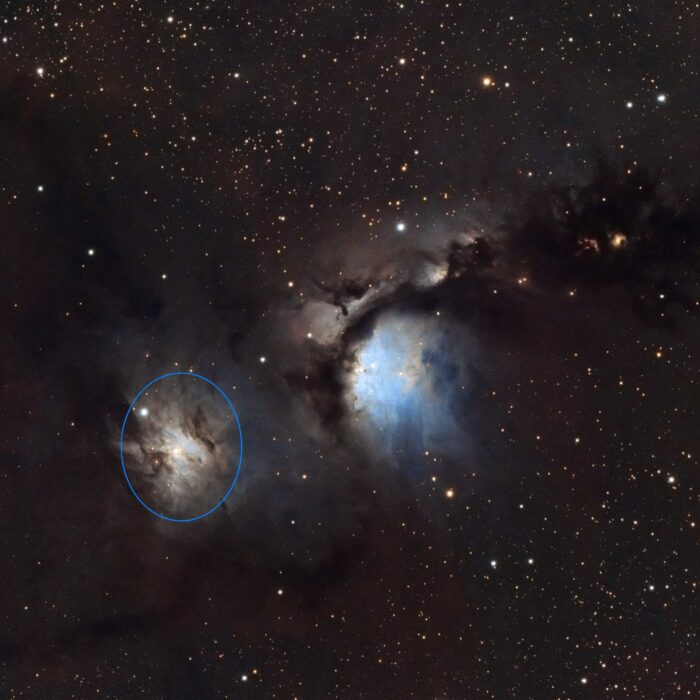
In the center the large reflection nebula is M78.
Adjacent to it on the right is the reflection nebula NGC 2064.
Diagonally above to the left is adjacent NGC 2067.
To the left of the reflection nebula is NGC 2071.

In the center is the Tarantula Nebula NGC 2070 and above it is the star cluster NGC 2044 above which in turn is the supernova SN 1987A. To the left is star cluster NGC 2042, and to the right is the star cluster NGC 2050.
Diagonally to the upper right, the bright nebula, is the small emission nebula NGC 2048.
Below the Tarantula Nebula, the white dot, is the star cluster NGC 2100.
To the right of the Tarantula Nebula is the emission nebula NGC 2074 and directly below it, in the black hole, is the open star cluster NGC 2081 surrounded by nebulae.
Next to it the second of the three clouds is a collection of the emission nebulae NGC 2077, NGC 2080, NGC 2085, NGC 2086 and IC 2145 and to the right of it, the third cloud is a collection of the emission nebulae NGC 2078, NGC 2079, NGC 2083, NGC 2084 and NGC 2084e.

In the center is the Tarantula Nebula NGC 2070 and above it is the star cluster NGC 2044 above which in turn is the supernova SN 1987A. To the left is star cluster NGC 2042, and to the right is the star cluster NGC 2050.
Diagonally to the upper right, the bright nebula, is the small emission nebula NGC 2048.
Below the Tarantula Nebula, the white dot, is the star cluster NGC 2100.
To the right of the Tarantula Nebula is the emission nebula NGC 2074 and directly below it, in the black hole, is the open star cluster NGC 2081 surrounded by nebulae.
Next to it the second of the three clouds is a collection of the emission nebulae NGC 2077, NGC 2080, NGC 2085, NGC 2086 and IC 2145 and to the right of it, the third cloud is a collection of the emission nebulae NGC 2078, NGC 2079, NGC 2083, NGC 2084 and NGC 2084e.


Starhopper, CC BY-SA 4.0, via Wikimedia Commons

In the center is the Tarantula Nebula NGC 2070 and above it is the star cluster NGC 2044 above which in turn is the supernova SN 1987A. To the left is star cluster NGC 2042, and to the right is the star cluster NGC 2050.
Diagonally to the upper right, the bright nebula, is the small emission nebula NGC 2048.
Below the Tarantula Nebula, the white dot, is the star cluster NGC 2100.
To the right of the Tarantula Nebula is the emission nebula NGC 2074 and directly below it, in the black hole, is the open star cluster NGC 2081 surrounded by nebulae.
Next to it the second of the three clouds is a collection of the emission nebulae NGC 2077, NGC 2080, NGC 2085, NGC 2086 and IC 2145 and to the right of it, the third cloud is a collection of the emission nebulae NGC 2078, NGC 2079, NGC 2083, NGC 2084 and NGC 2084e.


Copyright by WikiSky.org, WikiSky's snapshot tool

The galaxy at the lower right edge is NGC 2146A.

Copyright by WikiSky.org, WikiSky's snapshot tool
The left reflection nebula is NGC 2149.
The blue reflection nebula on the right is vdB 66.

Starhopper, CC BY-SA 4.0, via Wikimedia Commons
In the center the open cluster is M35.
The small star cluster on the right below is NGC 2158.

In the center of the image is the reflection nebula NGC 2182. Above it the small blue, gold brown reflection nebula is NGC 2183, directly above it the wider blue reflection nebula NGC 2185 and above it the reflection nebula vdB 74.
Below the three bright blue areas are the reflection nebula NGC 2170 (left), vdB 69 (center) and vdB 68 (right). Below the bright blue star is NGC 2167, which was mistakenly included in the catalog.
Left of the three blue areas the violet nebula is LBN 999.
On the right is the reflection nebula vdB 70 embedded in the violet nebula LBN 990.
The dark nebula to the left of vdB 70 is LDN 1646.
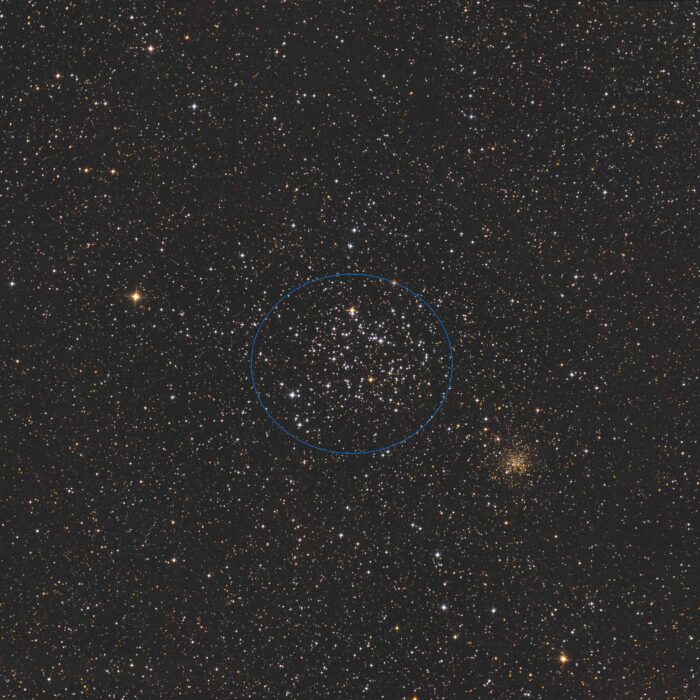
Starhopper, CC BY-SA 4.0, via Wikimedia Commons
In the center of the open cluster is M35.
The small star cluster right below is NGC 2158.

The shape of the pile is reminiscent of the number 37.

In the center of the image is the reflection nebula NGC 2182. Above it the small blue, gold brown reflection nebula is NGC 2183, directly above it the wider blue reflection nebula NGC 2185 and above it the reflection nebula vdB 74.
Below the three bright blue areas are the reflection nebula NGC 2170 (left), vdB 69 (center) and vdB 68 (right). Below the bright blue star is NGC 2167, which was mistakenly included in the catalog.
Left of the three blue areas the violet nebula is LBN 999.
On the right is the reflection nebula vdB 70 embedded in the violet nebula LBN 990.
The dark nebula to the left of vdB 70 is LDN 1646.

In the center is the Monkey Head Nebula NGC 2174 (Sh2-252) with the open cluster NGC 2175. Part of NGC 2174 is cataloged as IC 2159.
Sh2-247 is visible in the upper left.

In the center is the Monkey Head Nebula NGC 2174 (Sh2-252) with the open cluster NGC 2175. Part of NGC 2174 is cataloged as IC 2159.
Sh2-247 is visible in the upper left.

In the center of the image is the reflection nebula NGC 2182. Above it the small blue, gold brown reflection nebula is NGC 2183, directly above it the wider blue reflection nebula NGC 2185 and above it the reflection nebula vdB 74.
Below the three bright blue areas are the reflection nebula NGC 2170 (left), vdB 69 (center) and vdB 68 (right). Below the bright blue star is NGC 2167, which was mistakenly included in the catalog.
Left of the three blue areas the violet nebula is LBN 999.
On the right is the reflection nebula vdB 70 embedded in the violet nebula LBN 990.
The dark nebula to the left of vdB 70 is LDN 1646.

In the center of the image is the reflection nebula NGC 2182. Above it the small blue, gold brown reflection nebula is NGC 2183, directly above it the wider blue reflection nebula NGC 2185 and above it the reflection nebula vdB 74.
Below the three bright blue areas are the reflection nebula NGC 2170 (left), vdB 69 (center) and vdB 68 (right). Below the bright blue star is NGC 2167, which was mistakenly included in the catalog.
Left of the three blue areas the violet nebula is LBN 999.
On the right is the reflection nebula vdB 70 embedded in the violet nebula LBN 990.
The dark nebula to the left of vdB 70 is LDN 1646.

In the center of the image is the reflection nebula NGC 2182. Above it the small blue, gold brown reflection nebula is NGC 2183, directly above it the wider blue reflection nebula NGC 2185 and above it the reflection nebula vdB 74.
Below the three bright blue areas are the reflection nebula NGC 2170 (left), vdB 69 (center) and vdB 68 (right). Below the bright blue star is NGC 2167, which was mistakenly included in the catalog.
Left of the three blue areas the violet nebula is LBN 999.
On the right is the reflection nebula vdB 70 embedded in the violet nebula LBN 990.
The dark nebula to the left of vdB 70 is LDN 1646.


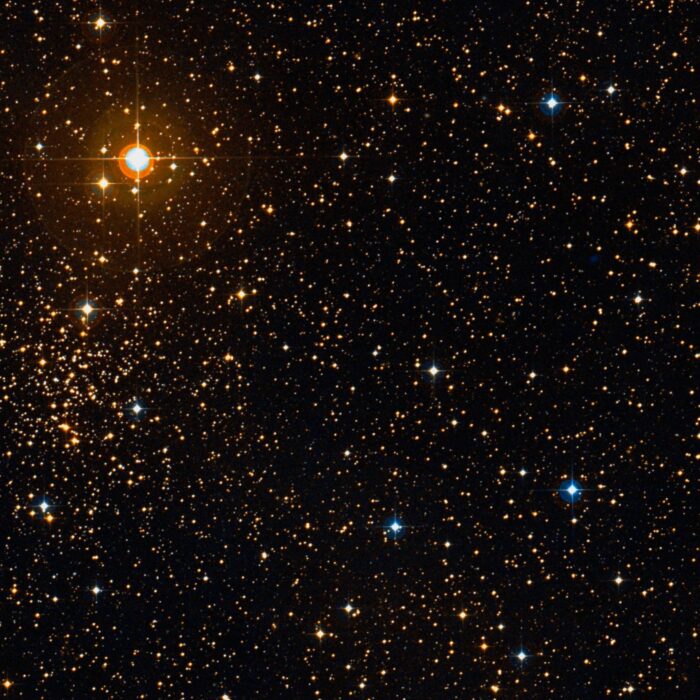
Copyright by WikiSky.org, WikiSky's snapshot tool

The right galaxy is NGC 2207, the left one is IC 2163.

Copyright by WikiSky.org, WikiSky's snapshot tool (nachbearbeitet mit PixInsight und Gimp)

Copyright by WikiSky.org, WikiSky's snapshot tool


The star cluster in the center of the Rosette Nebula (C49, Sh2-275) is NGC 2244.

Copyright by WikiSky.org, WikiSky's snapshot tool

Copyright by WikiSky.org, WikiSky's snapshot tool

The star cluster in the center of the Rosette Nebula (C49, Sh2-275) is NGC 2244.

The big blue nebula is IC 447 / IC 2169. It contains the three reflection nebulae vdB 76, 77 and 78.
Above it the reflection nebula is IC 446 / IC 2167. it contains the reflection nebula vdB 79.
On the left the two blue nebulae are NGC 2245 (below) and NGC 2247 (vdB 82).

The big blue nebula is IC 447 / IC 2169. It contains the three reflection nebulae vdB 76, 77 and 78.
Above it the reflection nebula is IC 446 / IC 2167. it contains the reflection nebula vdB 79.
On the left the two blue nebulae are NGC 2245 (below) and NGC 2247 (vdB 82).
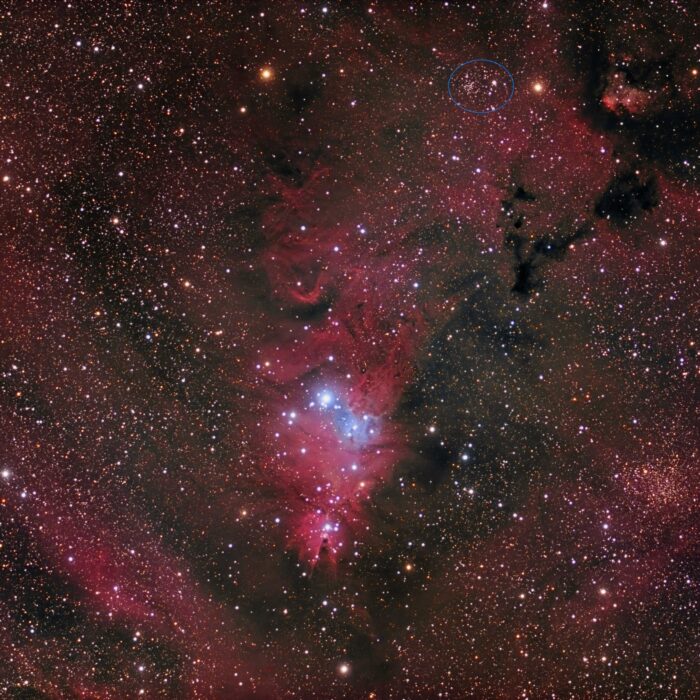
NGC 2264 consists of a variety of objects: The Cone Nebula is the small dark cone centered at the bottom of the image, and above it extends the Christmas Tree Star cluster whose stars form a triangle with the apex facing the Cone Nebula.
The Christmas Tree Star cluster lies within the emission nebula Sh2-273.
At the top center is NGC 2259, the star cluster to the right of NGC 2264 is TR 5.
The bright spot in the trunk of the Christmas tree star cluster is the star system S Monocerotis.
The area around the trunk of the Christmas tree star cluster is often called the Snowflake Cluster because there are many stars converging as spokes to form a point, which looks like a snowflake.
To the right of the tree trunk is an area of nebula above the blue nebula, which is called the Fox Fur Nebula because it looks like a stole of fox fur.


NGC 2264 consists of a variety of objects: The Cone Nebula is the small dark cone centered at the bottom of the image, and above it extends the Christmas Tree Star cluster whose stars form a triangle with the apex facing the Cone Nebula.
The Christmas Tree Star cluster lies within the emission nebula Sh2-273.
At the top center is NGC 2259, the star cluster to the right of NGC 2264 is TR 5.
The bright spot in the trunk of the Christmas tree star cluster is the star system S Monocerotis.
The area around the trunk of the Christmas tree star cluster is often called the Snowflake Cluster because there are many stars converging as spokes to form a point, which looks like a snowflake.
To the right of the tree trunk is an area of nebula above the blue nebula, which is called the Fox Fur Nebula because it looks like a stole of fox fur.

Copyright by WikiSky.org, WikiSky's snapshot tool

In the center of the image is the lenticular galaxy NGC 2300.
To its right is NGC 2276.
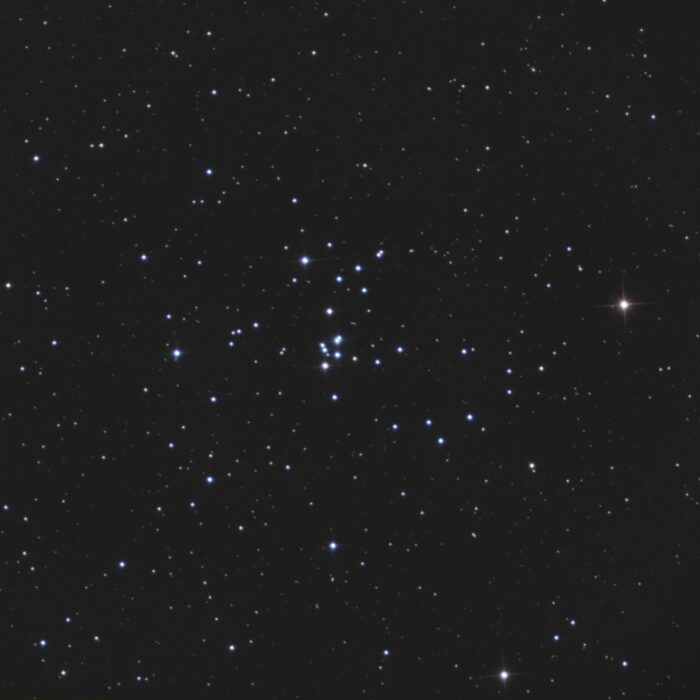


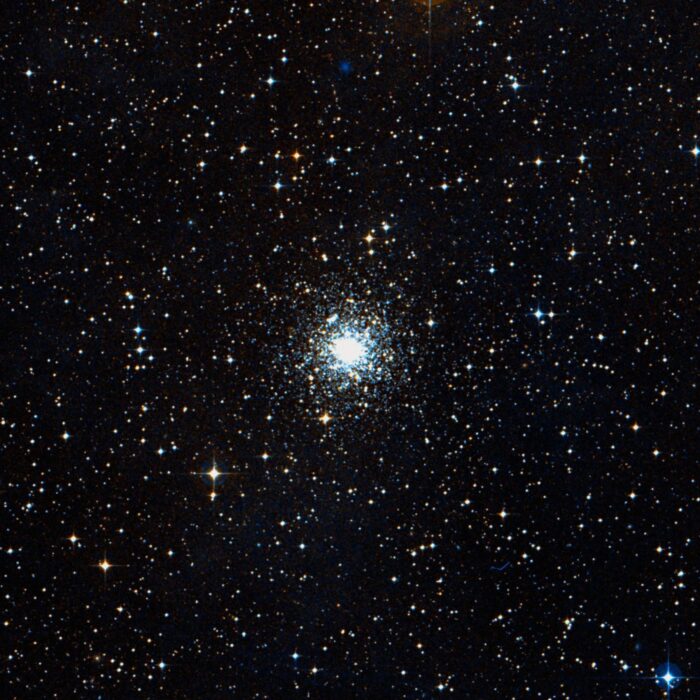
Copyright by WikiSky.org, WikiSky's snapshot tool

In the center of the image is the lenticular galaxy NGC 2300.
To its right is NGC 2276.


Copyright by WikiSky.org, WikiSky's snapshot tool

Copyright by WikiSky.org, WikiSky's snapshot tool

At the bottom left is vdB 87.
Vertically above it, towards the upper edge, is NGC 2316 and to its right NGC 2313.
At the left edge in the center you can still see the foothills of M50.
At the top of the image is NGC 2309 (Mel 56).
In the center of the image is BFS 63.
Diagonally to the right above this nebula is Sh2-291.
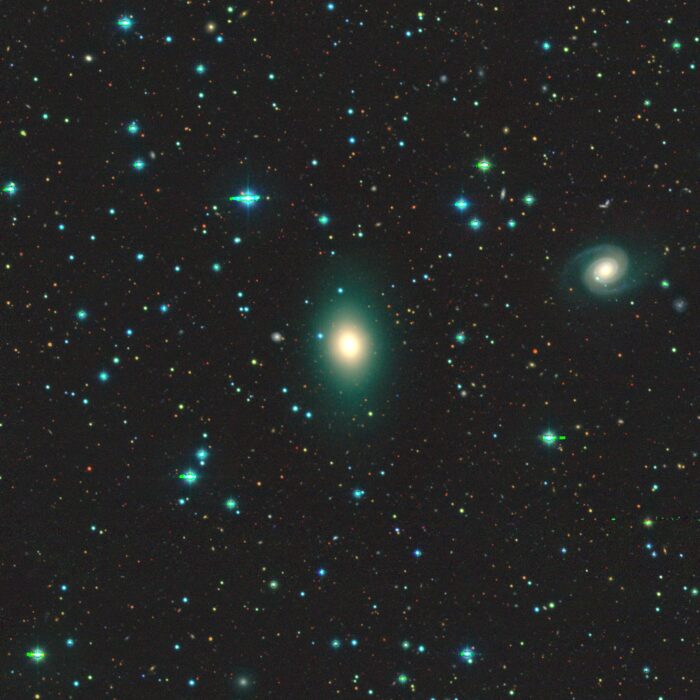
Copyright by Legacy Surveys / D. Lang (Perimeter Institute), CC BY 4.0
The galaxy to the right is IC 2174.

At the bottom left is vdB 87.
Vertically above it, toward the upper edge, is NGC 2316 and to its right is NGC 2313.
At the left edge in the center you can still see the foothills of M50.
At the top of the image is NGC 2309 (Mel 56).
In the center of the image is BFS 63.
Diagonally to the right above this nebula is Sh2-291.

In the center is NGC 2320.
On the left is NGC 2326.

Starhopper, CC BY-SA 4.0, via Wikimedia Commons
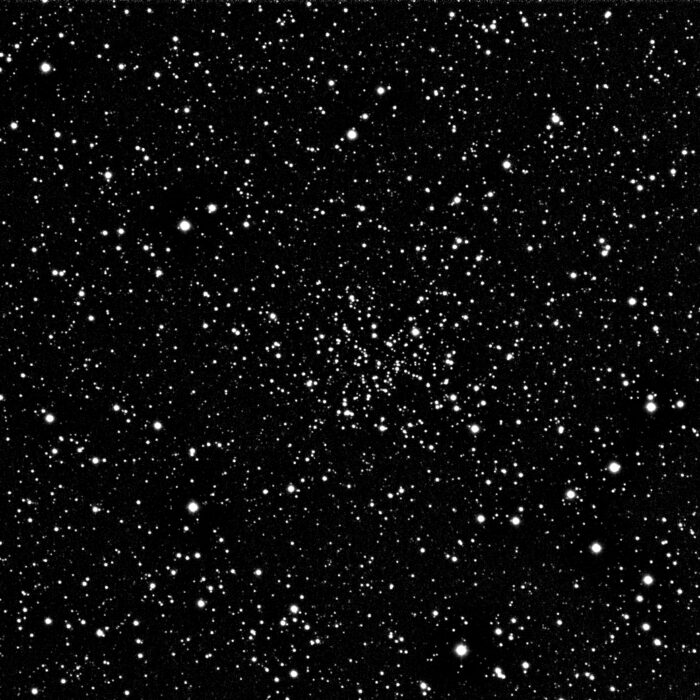

In the center is NGC 2320.
On the left is NGC 2326.

Even though IC 2177 is called the Gull Nebula, IC 2177 is not the complete nebula, but only the head, with the bright star HD 53367 in the center.
The wings are the nebula Sh2-296.
Just to the right of the head is very small planetary nebula PK 223-2.1.
Below it are the two nebulae Sh2-293 (the larger one) and Sh2-295 (the smaller one).
To the left of the two small nebulae, in the dark indentation in the wing, is the reflection nebula NGC 2327. Directly below it the cluster of stars with nebula is vdB 92.
To the left of it in the blue area near the bright stars is vdB 95.
Down at the wing tip, the bright yellow nebula, is Sh2-297.
At the upper wing (upper edge of the yellow nebula), is the star cluster NGC 2335.
The star cluster NGC 2343 is to the left of the head in the blue area.
Even further to the left, before the bright yellow area starts, is the star cluster NGC 2353. The bright yellow nebula at the upper left is Sh2-294.
The yellow area to the left of the lower wing is the carbon star W Canis Majoris.

Even though IC 2177 is called the Gull Nebula, IC 2177 is not the complete nebula, but only the head, with the bright star HD 53367 in the center.
The wings are the nebula Sh2-296.
Just to the right of the head is very small planetary nebula PK 223-2.1.
Below it are the two nebulae Sh2-293 (the larger one) and Sh2-295 (the smaller one).
To the left of the two small nebulae, in the dark indentation in the wing, is the reflection nebula NGC 2327. Directly below it the cluster of stars with nebula is vdB 92.
To the left of it in the blue area near the bright stars is vdB 95.
Down at the wing tip, the bright yellow nebula, is Sh2-297.
At the upper wing (upper edge of the yellow nebula), is the star cluster NGC 2335.
The star cluster NGC 2343 is to the left of the head in the blue area.
Even further to the left, before the bright yellow area starts, is the star cluster NGC 2353. The bright yellow nebula at the upper left is Sh2-294.
The yellow area to the left of the lower wing is the carbon star W Canis Majoris.

The large galaxy at the top is NGC 2336.
At the bottom is IC 467.

Even though IC 2177 is called the Gull Nebula, IC 2177 is not the complete nebula, but only the head, with the bright star HD 53367 in the center.
The wings are the nebula Sh2-296.
Just to the right of the head is very small planetary nebula PK 223-2.1.
Below it are the two nebulae Sh2-293 (the larger one) and Sh2-295 (the smaller one).
To the left of the two small nebulae, in the dark indentation in the wing, is the reflection nebula NGC 2327. Directly below it the cluster of stars with nebula is vdB 92.
To the left of it in the blue area near the bright stars is vdB 95.
Down at the wing tip, the bright yellow nebula, is Sh2-297.
At the upper wing (upper edge of the yellow nebula), is the star cluster NGC 2335.
The star cluster NGC 2343 is to the left of the head in the blue area.
Even further to the left, before the bright yellow area starts, is the star cluster NGC 2353. The bright yellow nebula at the upper left is Sh2-294.
The yellow area to the left of the lower wing is the carbon star W Canis Majoris.

Copyright by WikiSky.org, WikiSky's snapshot tool

Adam Block/Mount Lemmon SkyCenter/University of Arizona, CC BY-SA 4.0, via Wikimedia Commons

Even though IC 2177 is called the Gull Nebula, IC 2177 is not the complete nebula, but only the head, with the bright star HD 53367 in the center.
The wings are the nebula Sh2-296.
Just to the right of the head is very small planetary nebula PK 223-2.1.
Below it are the two nebulae Sh2-293 (the larger one) and Sh2-295 (the smaller one).
To the left of the two small nebulae, in the dark indentation in the wing, is the reflection nebula NGC 2327. Directly below it the cluster of stars with nebula is vdB 92.
To the left of it in the blue area near the bright stars is vdB 95.
Down at the wing tip, the bright yellow nebula, is Sh2-297.
At the upper wing (upper edge of the yellow nebula), is the star cluster NGC 2335.
The star cluster NGC 2343 is to the left of the head in the blue area.
Even further to the left, before the bright yellow area starts, is the star cluster NGC 2353. The bright yellow nebula at the upper left is Sh2-294.
The yellow area to the left of the lower wing is the carbon star W Canis Majoris.

Copyright by WikiSky.org, WikiSky's snapshot tool

Jschulman555, CC BY-SA 4.0, via Wikimedia Commons



The very small galaxy directly to the right is NGC 2363.

ESO/G. Beccari, CC BY 4.0, via Wikimedia Commons, Original-Link




The nebula in the center is the Snowman Nebula Sh2-302.
To the left is the star cluster NGC 2409.
To the right of the Snowman's head, the somewhat bluish star is vdB 97.

M46 is on the left edge of the image.
M47 is on the right.
The planetary nebula NGC 2438 (small blue nebula) is in the foreground and does not belong to M46. (According to recent studies, it could be that the planetary nebula does interargue with the star cluster and has the same distance. (https://arxiv.org/pdf/0710.2900.pdf)
Just above M46 is the planetary nebula Minkowski 1-18 (visible only with high image magnification).
Between M46 and M47 (slightly below) is the open cluster NGC 2425.
Above M47 is the open star cluster NGC 2423.
In the lower right corner is the star cluster NGC 2414.

Copyright by WikiSky.org, WikiSky's snapshot tool



Copyright by WikiSky.org, WikiSky's snapshot tool

M46 is at the left edge of the image.
M47 is on the right.
The planetary nebula NGC 2438 (small blue nebula) is in the foreground and does not belong to M46. (According to recent investigations, it could be that the planetary nebula interferes with the star cluster after all and has the same distance. (https://arxiv.org/pdf/0710.2900.pdf)
Just above M46 is the planetary nebula Minkowski 1-18 (visible only with high image magnification).
Between M46 and M47 (slightly below) is the open cluster NGC 2425.
Above M47 is the open cluster NGC 2423.
In the lower right corner is the star cluster NGC 2414.
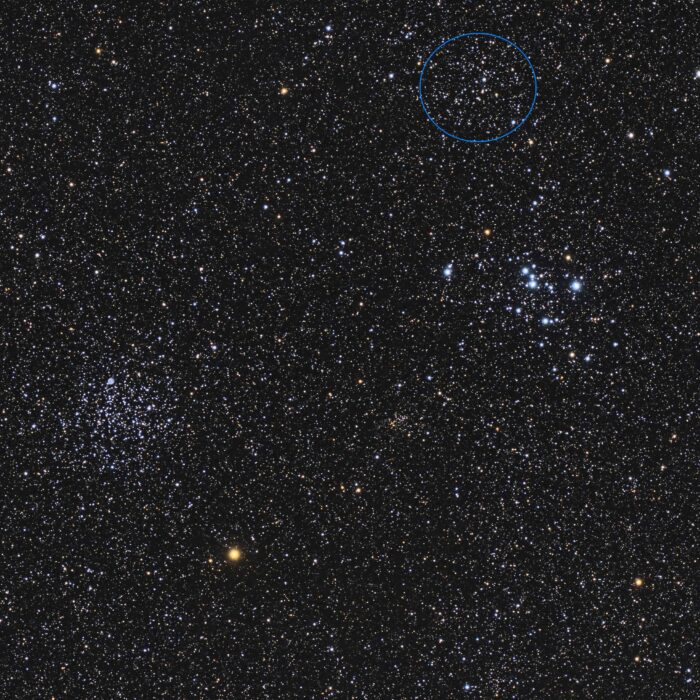
M46 is on the left edge of the image.
M47 is on the right.
The planetary nebula NGC 2438 (small blue nebula) is in the foreground and does not belong to M46. (According to recent studies, it could be that the planetary nebula does interargue with the star cluster and has the same distance. (https://arxiv.org/pdf/0710.2900.pdf)
Just above M46 is the planetary nebula Minkowski 1-18 (visible only with high image magnification).
Between M46 and M47 (slightly below) is the open cluster NGC 2425.
Above M47 is the open star cluster NGC 2423.
In the lower right corner is the star cluster NGC 2414.

M46 is on the left edge of the image.
M47 is on the right.
The planetary nebula NGC 2438 (small blue nebula) is in the foreground and does not belong to M46. (According to recent studies, it could be that the planetary nebula does interargue with the star cluster and has the same distance. (https://arxiv.org/pdf/0710.2900.pdf)
Just above M46 is the planetary nebula Minkowski 1-18 (visible only with high image magnification).
Between M46 and M47 (slightly below) is the open cluster NGC 2425.
Above M47 is the open star cluster NGC 2423.
In the lower right corner is the star cluster NGC 2414.

On the lower left, the spiral galaxy NGC 2427 can be seen.
On the right the large star cluster is Mel 66 (the oldest known open cluster).
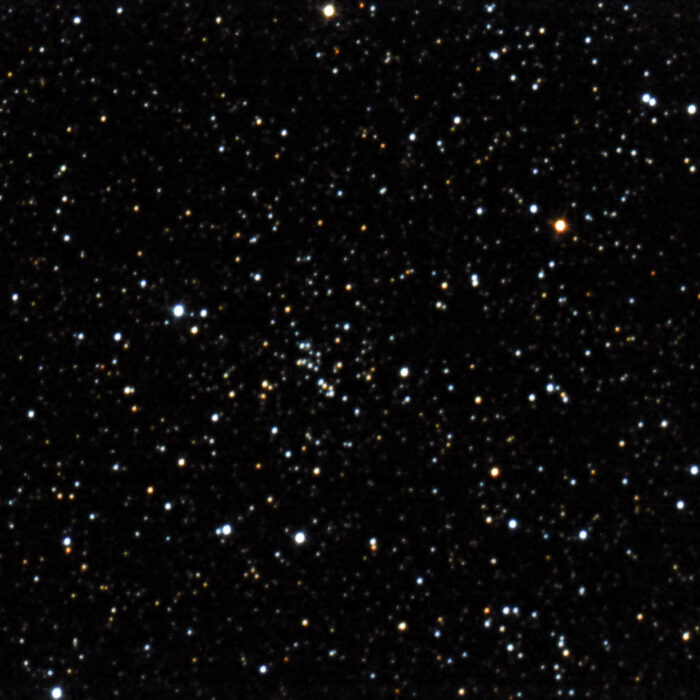
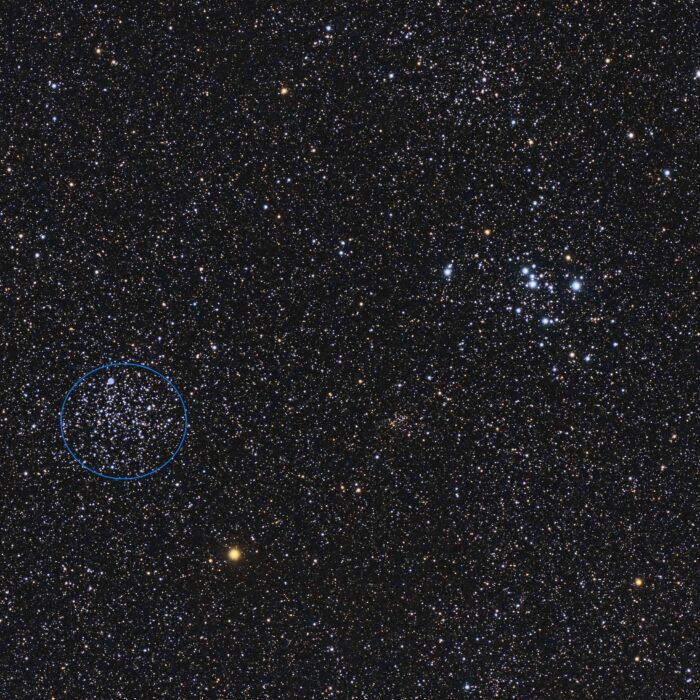
M46 is at the left edge of the image.
M47 is on the right.
The planetary nebula NGC 2438 (small blue nebula) is in the foreground and does not belong to M46. (According to recent investigations, it could be that the planetary nebula interferes with the star cluster after all and has the same distance. (https://arxiv.org/pdf/0710.2900.pdf)
Just above M46 is the planetary nebula Minkowski 1-18 (visible only with high image magnification).
Between M46 and M47 (slightly below) is the open cluster NGC 2425.
Above M47 is the open cluster NGC 2423.
In the lower right corner is the star cluster NGC 2414.

Jschulman555, CC BY-SA 3.0, via Wikimedia Commons
The beginning star cluster at the bottom of the image is M46.
The planetary nebula NGC 2438 (blue nebula in the center) is in the foreground and does not belong to M46. (According to recent investigations, it could be that the planetary nebula does interargue with the Star cluster and has the same distance. (https://arxiv.org/pdf/0710.2900.pdf)
In the upper left corner is OH 231.8+4.2 (Calabash Nebula Rotten Egg Nebula).
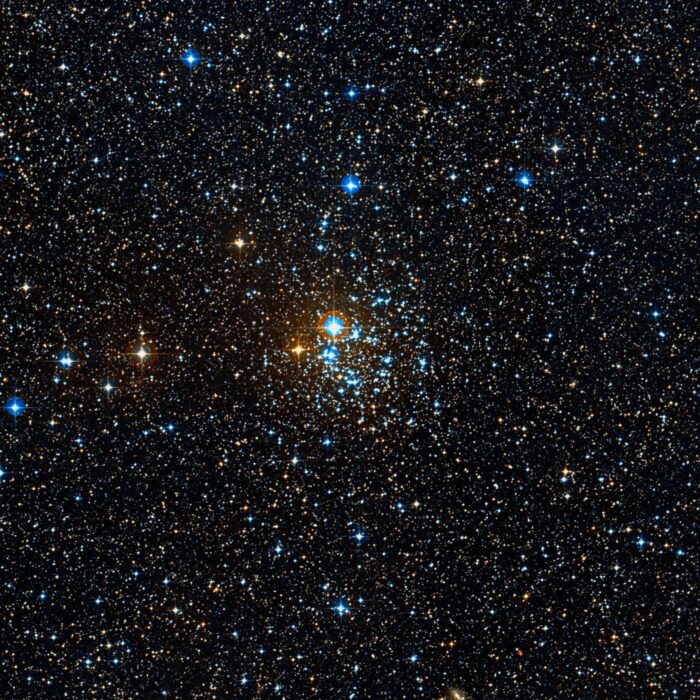
Copyright by WikiSky.org, WikiSky's snapshot tool

Adam Block/Mount Lemmon SkyCenter/University of Arizona, CC BY-SA 4.0, via Wikimedia Commons



Above is the open cluster NGC 2451 below is the star cluster C71 (NGC 2477).
The bright star to the right of NGC 2477 is HD 64503.

Judy Schmidt, CC BY 2.0, via Wikimedia Commons

Copyright by WikiSky.org, WikiSky's snapshot tool

The complete nebula is Sh2-311.
The lower bright region is the star forming area with the open cluster NGC 2467.

Above is the open cluster NGC 2451 below is the star cluster C71 (NGC 2477).
The bright star to the right of NGC 2477 is HD 64503.

Copyright by WikiSky.org, WikiSky's snapshot tool
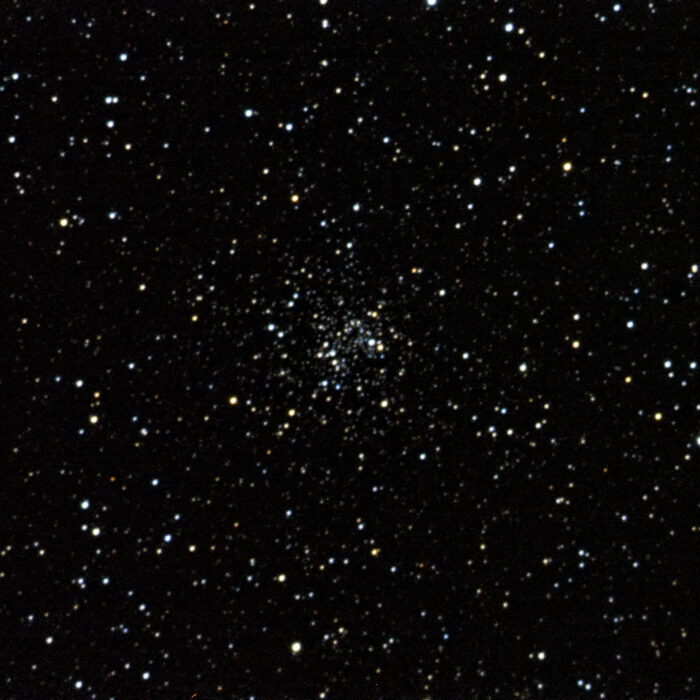

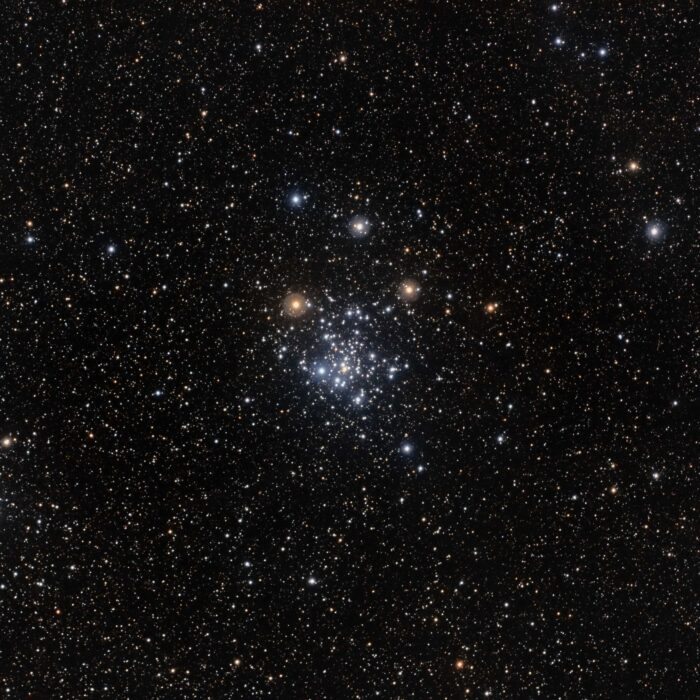

To the right is NGC 2523B.

In the center is the galaxy NGC 2537.
To the left is the galaxy NGC 2537A.

In the center is the galaxy NGC 2537.
To the left of it is the galaxy NGC 2537A.
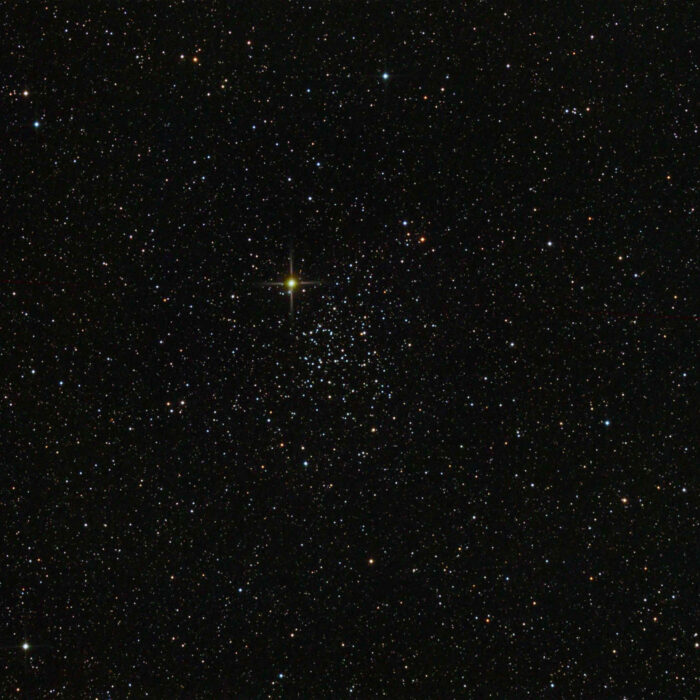


Giuseppe Donatiello from Oria (Brindisi), Italy, CC0, via Wikimedia Commons


At the bottom edge is NGC 2567.
At the upper right edge is NGC 2571.
To the left of it is NGC 2580.

At the bottom edge is NGC 2567.
At the upper right edge is NGC 2571.
To the left of it, NGC 2580 can be seen.

The large nebula is RCW 20.
The small nebula above is NGC 2579 (Gum 11).
The foothills of RCW19 can still be seen at the lower edge.

At the bottom edge is NGC 2567.
At the upper right edge is NGC 2571.
To the left of it, NGC 2580 can be seen.

Copyright by WikiSky.org, WikiSky's snapshot tool


Copyright by WikiSky.org, WikiSky's snapshot tool

Copyright by WikiSky.org, WikiSky's snapshot tool
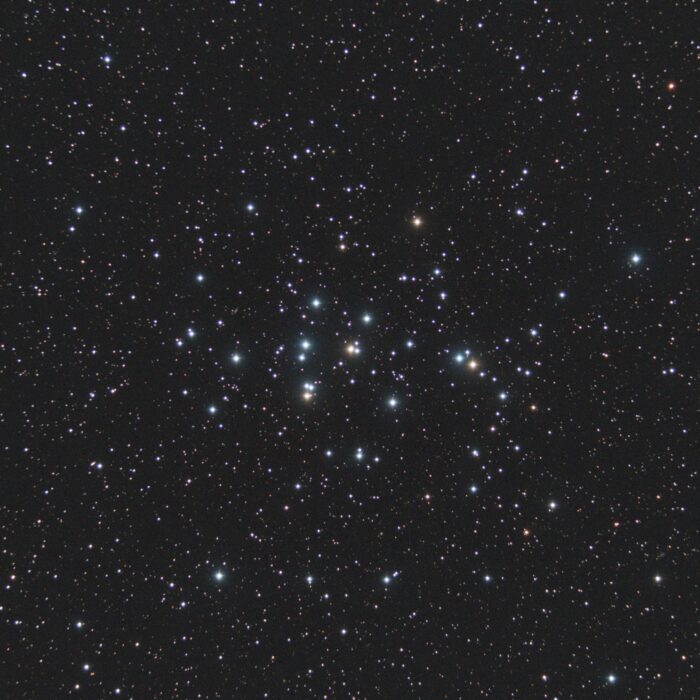

The upper galaxy is NGC 2633.
Below is the galaxy NGC 2634 below which is NGC 2634A.

The upper galaxy is NGC 2633.
Below is the galaxy NGC 2634 under which lies NGC 2634A.

Copyright by WikiSky.org, WikiSky's snapshot tool


Copyright by WikiSky.org, WikiSky's snapshot tool

Copyright by WikiSky.org, WikiSky's snapshot tool
The bright star cluster at the bottom of the rim is IC 2395.
To the left is the star cluster NGC 2670.
To the right above IC 2395 the yellow star cluster is NGC 2660.
In the upper right corner is the star cluster NGC 2659.

Copyright by WikiSky.org, WikiSky's snapshot tool
The bright star cluster at the bottom of the rim is IC 2395.
To the left of it is the star cluster NGC 2670.
To the right above IC 2395 the yellow star cluster is NGC 2660.
In the upper right corner is the star cluster NGC 2659.

Copyright by WikiSky.org, WikiSky's snapshot tool
The bright star cluster at the bottom of the rim is IC 2395.
To the left of it is the star cluster NGC 2670.
To the right above IC 2395 the yellow star cluster is NGC 2660.
In the upper right corner is Star cluster NGC 2659.

ESO/Digitized Sky Survey 2. Acknowledgement: Davide De Martin, CC BY 4.0, via Wikimedia Commons, Original-Link
The nebula in the center is Gum 15.
Bottom left the large nebula is RCW 33 To the right is the Star cluster NGC 2671.
Top right the large nebula is RCW 27 (BRAN 166) with the small planetary nebula Vo 3 (PN G260.1+00.2, PK 260+00.2).
The remains of the Vela supernova can still be seen in the lower right.

On the left you can still faintly see NGC 2693 and just below it as a small dot NGC 2694.

Starhopper, CC BY-SA 4.0, via Wikimedia Commons

Adam Block/Mount Lemmon SkyCenter/University of Arizona, CC BY-SA 4.0, via Wikimedia Commons


To the left, to the right of the lower brighter star, is the galaxy cluster Abell 738.
To the right of NGC 2715 is the galaxy cluster Abell 719.

Copyright by WikiSky.org, WikiSky's snapshot tool
To the left is NGC 2724.
To the right is Arp 202 consisting of galaxies NGC 2719 (above) and PGC 25284 (NGC 2719A - below).

Copyright by WikiSky.org, WikiSky's snapshot tool
The large galaxy on the right is NGC 2735, and the small one to the left is NGC 2735A.


In the upper right corner is NGC 2742.
In the lower left corner is NGC 2768.

In the upper right corner is NGC 2742.
In the lower left corner is NGC 2768.

Adam Block/Mount Lemmon SkyCenter/University of Arizona, CC BY-SA 3.0 US, via Wikimedia Commons



Judy Schmidt, CC BY 2.0, via Wikimedia Commons


Copyright by WikiSky.org, WikiSky's snapshot tool
In the open cluster NGC 2818A is the planetary nebula NGC 2818.
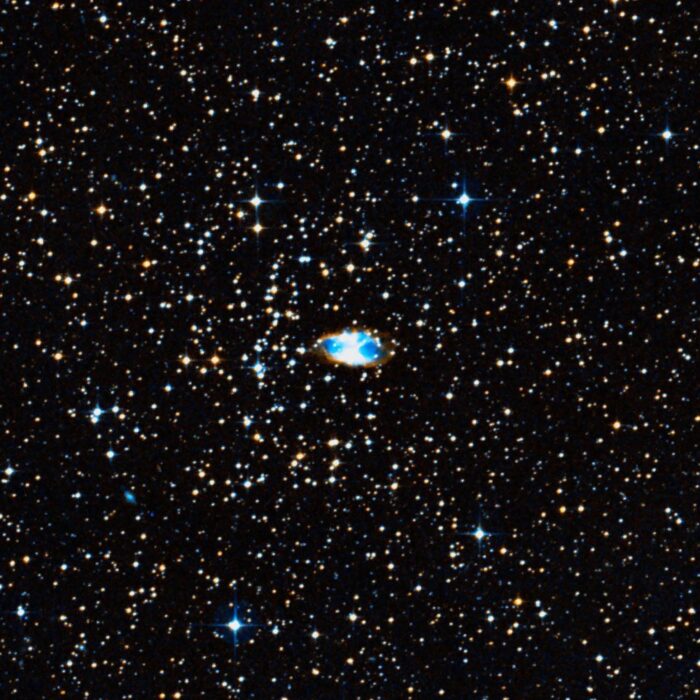
Copyright by WikiSky.org, WikiSky's snapshot tool
In the open cluster NGC 2818A is the planetary nebula NGC 2818.


Hewholooks, CC BY-SA 3.0, via Wikimedia Commons

At the top of the image NGC 2857 (Arp 1) can be seen.
Near the center of the image is NGC 2856 and diagonally to the right below it is NGC 2854. Together they form the galaxy pair Arp 285.

At the top of the image NGC 2857 (Arp 1) can be seen.
Near the center of the image is NGC 2856 and diagonally to the right below it is NGC 2854. Together they form the galaxy pair Arp 285.

At the top of the image NGC 2857 (Arp 1) can be seen.
Near the center of the image is NGC 2856 and diagonally to the right below it is NGC 2854. Together they form the galaxy pair Arp 285.



Judy Schmidt, CC BY 2.0, via Wikimedia Commons

Copyright by WikiSky.org, WikiSky's snapshot tool

Credit:ESO, CC BY 4.0, via Wikimedia Commons, Original-Link


Copyright by WikiSky.org, WikiSky's snapshot tool
To the right of the center of the image is the large galaxy NGC 2911 (Arp 232).
Diagonally below it on the left is NGC 2914 (Arp 137).

Copyright by WikiSky.org, WikiSky's snapshot tool
To the right of the center of the image is the large galaxy NGC 2911 (Arp 232).
Diagonally below it on the left is NGC 2914 (Arp 137).


Copyright by WikiSky.org, WikiSky's snapshot tool
The pair of galaxies at the top is Arp 129.
At the bottom is the galaxy triplet NGC 2944 (Arp 63).
At the end of the spiral arms are the galaxies PGC 1990710 (lower left) and PGC 27534 (right).

Copyright by WikiSky.org, WikiSky's snapshot tool


On the right is NGC 2985.
On the left is NGC 3027.


Based on the Cepheids present in NGC 3021, the expansion of the universe can be calculated very well.

On the right is NGC 2985.
On the left is NGC 3027.

Keesscherer, CC BY-SA 4.0, via Wikimedia Commons
In the center is M81.
On the right is M82.
The small galaxy in the upper left is NGC 3077.

Keesscherer, CC BY-SA 4.0, via Wikimedia Commons
In the center is M81.
On the right is M82.
The small galaxy in the upper left is NGC 3077.

Copyright by WikiSky.org, WikiSky's snapshot tool
The galaxy pair consists of galxie NGC 3068A (image center and NGC 3068B (PGC 87670 - oblique right below).

Keesscherer, CC BY-SA 4.0, via Wikimedia Commons
In the center is M81.
To the right is M82.
The small galaxy in the upper left is NGC 3077.

Copyright by WikiSky.org, WikiSky's snapshot tool
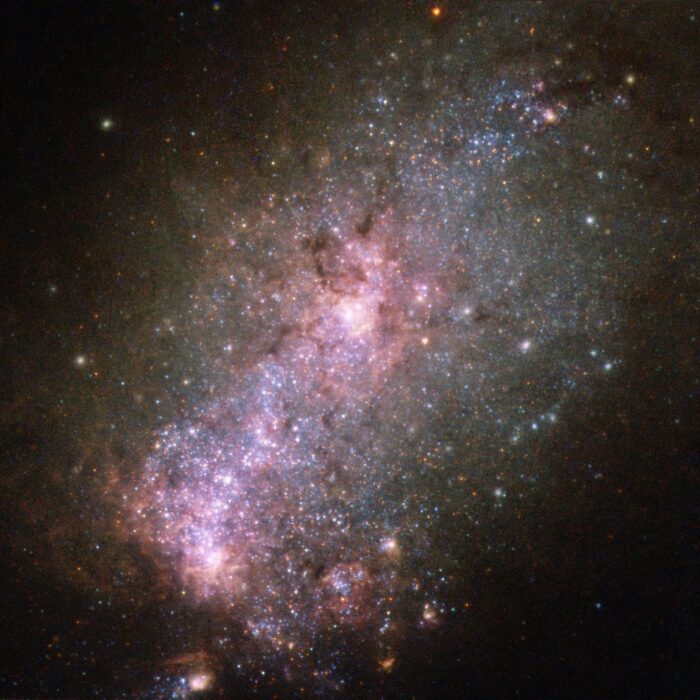



Adam Block/Mount Lemmon SkyCenter/University of Arizona, CC BY-SA 4.0, via Wikimedia Commons


Jschulman555, CC BY-SA 3.0, via Wikimedia Commons
On the left is NGC 3169.
To the right is NGC 3166.
The small galaxy on the right edge is NGC 3165.

Jschulman555, CC BY-SA 3.0, via Wikimedia Commons
On the left is NGC 3169.
To the right is NGC 3166.
The small galaxy on the right edge is NGC 3165.

Jschulman555, CC BY-SA 3.0, via Wikimedia Commons
On the left is NGC 3169.
To the right is NGC 3166.
The small galaxy on the right edge is NGC 3165.

Inside the galaxy they are the HII regions NGC 3180 (to the right of the dark area, which is to the right of the center) and NGC 3181 (small bright spot below the center at about 5 o'clock).
At the bottom the galaxy NGC 3179 can be seen very small.

At the top center is NGC 3193.
In the center diagonally left below is NGC 3190.
Right below is NGC 3187.
These three galaxies form the galaxy triplet Arp 316.
In the lower left is NGC 3185.
All four galaxies belong to the HCG 44 galaxy group.

At the top center is NGC 3193.
In the center diagonally left below is NGC 3190.
Right below is NGC 3187.
These three galaxies form the galaxy triplet Arp 316.
In the lower left is NGC 3185.
All four galaxies belong to the HCG 44 galaxy group.

At the top center is NGC 3193.
In the center diagonally left below is NGC 3190.
Right below is NGC 3187.
These three galaxies form the galaxy triplet Arp 316.
In the lower left is NGC 3185.
All four galaxies belong to the HCG 44 galaxy group.

At the top center is NGC 3193.
In the center diagonally left below is NGC 3190.
Right below is NGC 3187.
These three galaxies form the galaxy triplet Arp 316.
In the lower left is NGC 3185.
All four galaxies belong to the HCG 44 galaxy group.



Credit:ESO, CC BY 4.0, via Wikimedia Commons, Original-Link


solomon from USA, CC BY 2.0, via Wikimedia Commons

At the top is NGC 3226 at the bottom NGC 3227. Together they form Arp 94.
On the right edge, NGC 3222 can still be seen very small.

At the top is NGC 3226 at the bottom NGC 3227. Together they form Arp 94.
On the right edge, NGC 3222 can still be seen very small.

Copyright by WikiSky.org, WikiSky's snapshot tool


The complete nebula area on the right is Gum 29 (RCW 49).
The bright central red nebula is NGC 3247.
Directly above NGC 3247, the small bright delineated area, is Westerlund 2.
At the bottom of the rim is the open cluster IC 2581.
The nebula on the left edge is RCW 50.
The yellow star in the upper right is HD 90289.


Copyright by WikiSky.org, WikiSky's snapshot tool
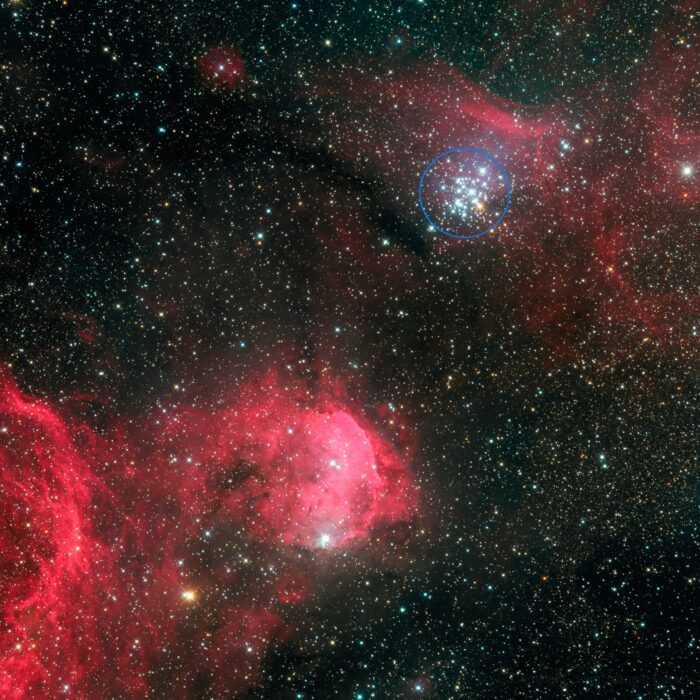
The bright nebula below with embedded Star cluster is NGC 3324 with the southern part IC 2599, collectively called the Gabriela Mistral Nebula.
The Star cluster obliquely above to the right is NGC 3293.
The nebula surrounding the star cluster is RCW 51 (Gum 30).

Copyright by WikiSky.org, WikiSky's snapshot tool

Directly in the center of the image is NGC 3312.
To the right of it NGC 3314 can be seen.
Above NGC 3312 is NGC 3311, above which is NGC 3309. Left above the two is NGC 3308. In contrast to NGC 3312 these three galaxies belong to Hydra galaxy cluster (Abell 1060). NGC 3312 is in the foreground. (https://de.wikipedia.org/wiki/Hydra-Galaxienhaufen)

Directly in the center of the image is NGC 3312.
To the right of it NGC 3314 can be seen.
Above NGC 3312 is NGC 3311, above which is NGC 3309. Left above the two is NGC 3308. In contrast to NGC 3312 these three galaxies belong to Hydra galaxy cluster (Abell 1060). NGC 3312 is in the foreground. (https://de.wikipedia.org/wiki/Hydra-Galaxienhaufen)


Directly in the center of the image is NGC 3312.
To the right of it NGC 3314 can be seen.
Above NGC 3312 is NGC 3311, above which is NGC 3309. Left above the two is NGC 3308. In contrast to NGC 3312 these three galaxies belong to Hydra galaxy cluster (Abell 1060). NGC 3312 is in the foreground. (https://de.wikipedia.org/wiki/Hydra-Galaxienhaufen)

Directly in the center of the image is NGC 3312.
To the right of it NGC 3314 can be seen.
Above NGC 3312 is NGC 3311, above which is NGC 3309. Left above the two is NGC 3308. In contrast to NGC 3312 these three galaxies belong to Hydra galaxy cluster (Abell 1060). NGC 3312 is in the foreground. (https://de.wikipedia.org/wiki/Hydra-Galaxienhaufen)

NASA, ESA, the Hubble Heritage (STScI/AURA)-ESA/Hubble Collaboration, and W. Keel (University of Alabama), CC BY 4.0
NGC 3314 consists of two galaxies, one behind the other in the same line of sight. The front one is 118 Mio. Ly. away, the back one 198 Mio. Ly. (https://de.wikipedia.org/wiki/NGC_3314)

The bright nebula below with embedded star cluster is NGC 3324 with the southern part IC 2599, collectively called the Gabriela Mistral Nebula.
The star cluster obliquely above to the right is NGC 3293.
The nebula surrounding the star cluster is RCW 51 (Gum 30).

Adam Block/Mount Lemmon SkyCenter/University of Arizona, CC BY-SA 3.0 US, via Wikimedia Commons

Carsten Frenzl from Deutschland, CC BY 2.0, via Wikimedia Commons

Anttler at English Wikipedia, Public domain, via Wikimedia Commons
The galaxy on the left is M95.
On the right is M96.


Anttler at English Wikipedia, Public domain, via Wikimedia Commons
The galaxy on the left is M95.
On the right is M96.

Copyright by WikiSky.org, WikiSky's snapshot tool

The small nebula in the upper right is NGC 3324 with IC 2599, collectively called the Gabriela Mistral Nebula.
The bright star in the center is Eta Carinae around which is the Homunculus Nebula (to the right of Eta Carinae is the Keyhole Nebula and directly next to it is the nebula "Defiant Finger" / "God's Birdie" / "The Finger of God".
Above NGC 3372 is RCW 52.


Below is M105.
Diagonally right above you can see the galaxy NGC 3384 (NGC 3371).
Diagonally left above you can see the galaxy NGC 3389 (NGC 3373).

Below is M105.
Diagonally right above you can see the galaxy NGC 3384 (NGC 3371).
Diagonally above on the left you can see the galaxy NGC 3389 (NGC 3373).

Below is M105.
Diagonally right above you can see the galaxy NGC 3384 (NGC 3371).
Diagonally above on the left you can see the galaxy NGC 3389 (NGC 3373).

Judy Schmidt from USA, CC BY 2.0, via Wikimedia Commons

Copyright by WikiSky.org, WikiSky's snapshot tool
In the center of the image is NGC 3414.
Above it NGC 3418 can be seen.
At the bottom of the image is PGC 32532.

Copyright by WikiSky.org, WikiSky's snapshot tool

Copyright by WikiSky.org, WikiSky's snapshot tool
The unusual spiral arm is created by PGC 32784 (small galaxy on the left) with which the galaxy is gravitationally bound.

Copyright by WikiSky.org, WikiSky's snapshot tool
The upper galaxy is NGC 3454, the lower one is NGC 3455.

Copyright by WikiSky.org, WikiSky's snapshot tool
The upper galaxy is NGC 3454, the lower is NGC 3455.

Copyright by WikiSky.org, WikiSky's snapshot tool (nachbearbeitet mit PixInsight und Gimp)
According to original RCW papers, the nebula area consists of three areas according to the coordinates: the nebula area in the center of the image (Gum 37) with the open star cluster NGC 3572 below, to the right of it the slightly longer nebula area (Gum 34a+b) with the reflection nebula NGC 3503, and at the bottom the slightly smaller fainter nebula area (Gum 35).
In the secondary description of the fonts the upper small nebula area (Gum 36) is also included as fourth.
At the right edge of the screen the foothills of the Carina nebula NGC 3372 are still visible.
The star cluster at the upper edge is the Wishing Well Cluster NGC 3532.
In the lower left corner is the bright nebula RCW 57 consisting of NGC 3576 (Gum 38a) and NGC 3603 (Gum 38b).

Copyright by WikiSky.org, WikiSky's snapshot tool

Judy Schmidt from Fresh Meadows, NY, USA, CC BY 2.0, via Wikimedia Commons

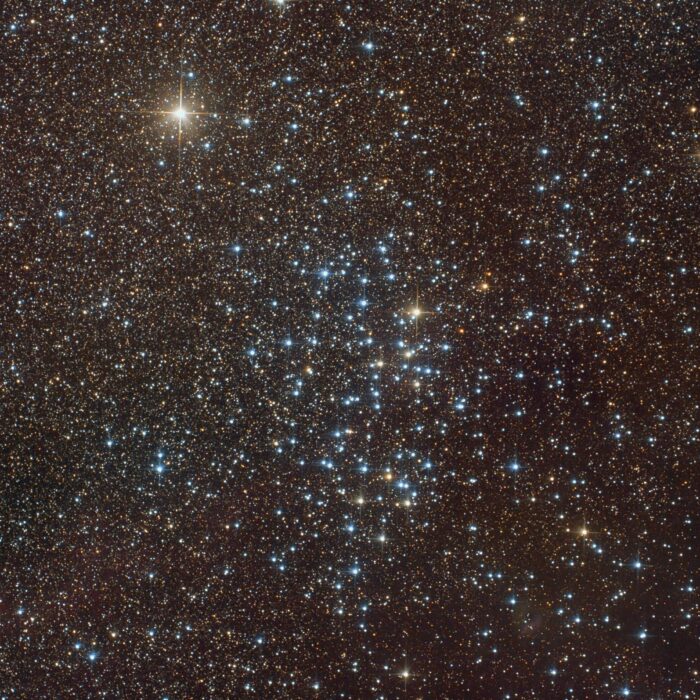
A section of NGC 3532 was the target for first light from the Hubble Space Telescope.

Starhopper, CC BY-SA 4.0, via Wikimedia Commons

Copyright by WikiSky.org, WikiSky's snapshot tool (nachbearbeitet mit PixInsight und Gimp)
According to original RCW papers, the nebula area consists of three areas according to the coordinates: the nebula area in the center of the image (Gum 37) with the open star cluster NGC 3572 below, to the right of it the slightly longer nebula area (Gum 34a+b) with the reflection nebula NGC 3503 and below it the slightly smaller fainter nebula area (Gum 35).
In the secondary description of the fonts the upper small nebula area (Gum 36) is also included as a fourth one.
At the right edge of the screen the foothills of the Carina nebula NGC 3372 are still visible.
The star cluster at the upper edge is the Wishing Well Cluster NGC 3532.
At the lower left of the screen is the bright nebula RCW 57 consisting of NGC 3576 (Gum 38a) and NGC 3603 (Gum 38b).

On the left is the emission nebula NGC 3603 (Gum 38b, RCW 57b).
The Statue of Liberty Nebula (Gum 38a, RCW 57a) consists of several nebulae:
NGC 3584 (the bright left nebula from the body).
NGC 3579 (the bright nebula right above the base)
NGC 3582 (the left nebula below the base)
NGC 3581 (the right nebula below the base)
NGC 3586 (the bright yellow nebula on the far left below the pedestal)
NGC 3576 (the small bright yellow nebula right below the pedestal)
The complete nebula area is designated RCW 57.


The image shows the core of NGC 3597.

On the left is the emission nebula NGC 3603 (Gum 38b, RCW 57b).
The Statue of Liberty Nebula (Gum 38a, RCW 57a) consists of several nebulae:
NGC 3584 (the bright left nebula from the body).
NGC 3579 (the bright nebula right above the base)
NGC 3582 (the left nebula below the base)
NGC 3581 (the right nebula below the base)
NGC 3586 (the bright yellow nebula on the far left below the pedestal)
NGC 3576 (the small bright yellow nebula right below the pedestal)
The complete nebula area is designated RCW 57.

Judy Schmidt, CC BY 2.0, via Wikimedia Commons


ESO and Joe DePasquale, CC BY 4.0, via Wikimedia Commons, Original-Link

Marekmazuch, CC BY-SA 4.0, via Wikimedia Commons
On the right is NGC 3628.
On the left is M66 and below it M65.
The three galaxies are called the Leo Triplet (Arp 317).


Marekmazuch, CC BY-SA 4.0, via Wikimedia Commons
On the right is NGC 3628.
On the left is M66 and below it M65.
The three galaxies are called the Leo Triplet (Arp 317).

Marekmazuch, CC BY-SA 4.0, via Wikimedia Commons
On the right is NGC 3628.
On the left is M66 and below that is M65.
The three galaxies are referred to as the Leo Triplet (Arp 317).


solomon from USA, CC BY 2.0, via Wikimedia Commons

Copyright by WikiSky.org, WikiSky's snapshot tool

Maddie Fragner/Adam Block/Mount Lemmon SkyCenter/University of Arizona, CC BY-SA 4.0, via Wikimedia Commons

Copyright by WikiSky.org, WikiSky's snapshot tool

At the top lies NGC 3686.
Below it lies NGC 3684.
Diagonally right below it is NGC 3681.
Diagonally below it on the left is NGC 3691.

At the top lies NGC 3686.
Below it lies NGC 3684.
Diagonally right below it is NGC 3681.
Diagonally below it on the left is NGC 3691.

At the top lies NGC 3686.
Below it lies NGC 3684.
Diagonally right below it is NGC 3681.
Diagonally below it on the left is NGC 3691.

At the top lies NGC 3686.
Below it lies NGC 3684.
Diagonally right below it is NGC 3681.
Diagonally below it on the left is NGC 3691.

ESO, CC BY 4.0, via Wikimedia Commons, Original-Link

Copyright by WikiSky.org, WikiSky's snapshot tool

KeithSteffens, CC BY-SA 4.0, via Wikimedia Commons
On the left is NGC 3718.
On the right is NGC 3729.
Above NGC 3718 the galaxy group Arp 322 / HCG 56 (galaxy group consisting of 5 galaxy) can be seen.

KeithSteffens, CC BY-SA 4.0, via Wikimedia Commons
On the left is NGC 3718.
On the right is NGC 3729.
Above NGC 3718 the galaxy group Arp 322 / HCG 56 (galaxy group consisting of 5 galaxy) can be seen.

Copyright by WikiSky.org, WikiSky's snapshot tool

Judy Schmidt, CC BY 2.0, via Wikimedia Commons
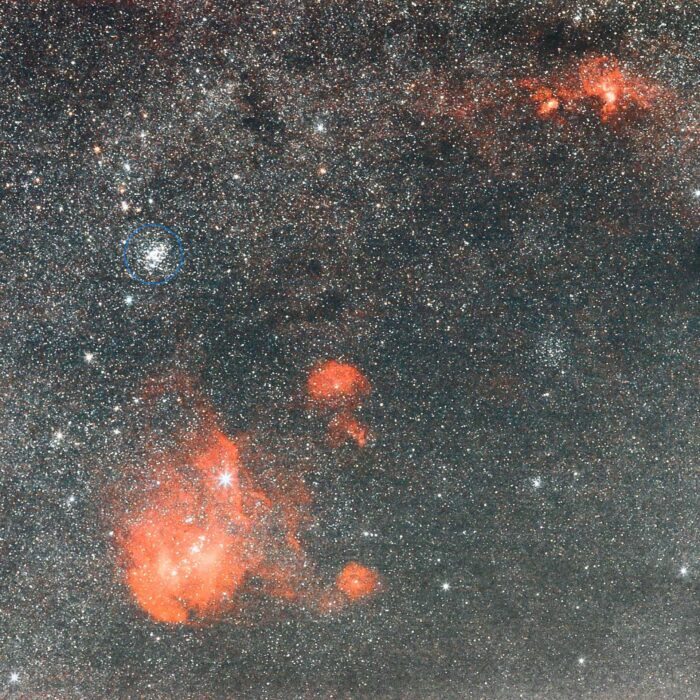
The upper part of the large nebula is IC 2944 (Running Chicken Nebula) with the embedded star cluster.
Diagonally left below is the emission nebula IC 2948.
The very bright star is Lambda Centauri.
Top right of IC 2944 is Gum 39 (Ced 116).
Directly below is IC 2872.
Bottom right is Gum 41 (RCW 61).
In the upper right are the nebulae NGC 3603 and NGC 3576.

Copyright by WikiSky.org, WikiSky's snapshot tool
The pair of galaxies consists of NGC 3769 (on the right and NGC 3769A (the small galaxy on the left).


Copyright by WikiSky.org, WikiSky's snapshot tool

Judy Schmidt, CC BY 2.0, via Wikimedia Commons
It is the brightest of the southern planetary nebulae. (https://en.wikipedia.org/wiki/NGC_3918)

Copyright by WikiSky.org, WikiSky's snapshot tool
The small galaxy directly above NGC 3921 is PGC 2491113.
The large galaxy at the top is NGC 3916.
The small galaxy just to the right of NGC 3921 is PGC 2489542.
The galaxy on the right edge is PGC 37013.


Adam Block/Mount Lemmon SkyCenter/University of Arizona, CC BY-SA 3.0, via Wikimedia Commons


Copyright by WikiSky's snapshot tool

Hewholooks, CC BY-SA 3.0, via Wikimedia Commons
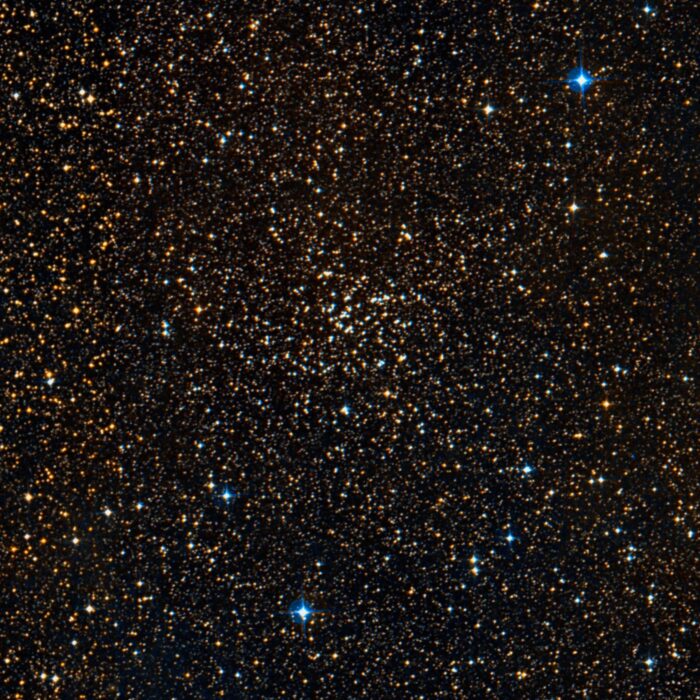
Copyright by WikiSky.org, WikiSky's snapshot tool

ESO, CC BY 4.0, via Wikimedia Commons, Original-Link

On the left in extension of M109 is UGC 6969.
Below is UGC 6940.
And at the very bottom of the image (between center and right edge) a part of UGC 6923 shimmers.

Copyright by WikiSky.org, WikiSky's snapshot tool

ESO, CC BY 3.0, via Wikimedia Commons, Original-Link

Judy Schmidt from Fresh Meadows, NY, USA, CC BY 2.0, via Wikimedia Commons

The lower galaxy is NGC 4038 (C60), the upper one is NGC 4039 (C61).

The lower galaxy is NGC 4038 (C60), the upper one is NGC 4039 (C61).

Jeffjnet (http://jeffjastro.com), CC BY-SA 3.0, via Wikimedia Commons

Jeffjnet (http://jeffjastro.com), CC BY-SA 3.0, via Wikimedia Commons


Right at the dark cloud is the Southern Cross.
At the lower right the emission nebulae IC 2948 and IC 2872 are visible and above them the bright point is the star cluster NGC 3766.
Directly left of the left star is the star cluster NGC 4852 and below this the bright point is the star cluster NGC 4755 (C94).
In the middle of the coal sack is the star cluster NGC 4609 (C98).
Above the lowest star is the star cluster NGC 4349.
Between the lowermost star and the emission nebulae is the star cluster NGC 4052 and above it is the star cluster NGC 4103.

Copyright by WikiSky.org, WikiSky's snapshot tool
NGC 4111 is in the center of the image.
The galaxy at the upper right edge of the image is PGC 38356.
Diagonally to the left above the center of the image is NGC 4117.
The small bright galaxy diagonally right below is NGC 4109.
In the lower right corner is PGC 38375.

Adam Block/Mount Lemmon SkyCenter/University of Arizona, CC BY-SA 4.0, via Wikimedia Commons
In the center of the image is NGC 4151.
Above it is NGC 4156.

Adam Block/Mount Lemmon SkyCenter/University of Arizona, CC BY-SA 4.0, via Wikimedia Commons
In the center of the image is NGC 4151.
Above it is NGC 4156.

Jschulman555, CC BY-SA 3.0, via Wikimedia Commons

The top galaxy is NGC 4173.
To the right of it is NGC 4169.
To the left of it is NGC 4175.
At the very bottom is NGC 4174.
The four galaxies form the galaxy group HCG 61.

The top galaxy is NGC 4173.
To the right of it is NGC 4169.
To the left of it is NGC 4175.
At the very bottom is NGC 4174.
The four galaxies form the galaxy group HCG 61.

The top galaxy is NGC 4173.
To the right of it is NGC 4169.
To the left of it is NGC 4175.
At the very bottom is NGC 4174.
The four galaxies form the galaxy group HCG 61.

The top galaxy is NGC 4173.
To the right of it is NGC 4169.
To the left of it is NGC 4175.
At the very bottom is NGC 4174.
The four galaxies form the galaxy group HCG 61.

At the very top center is IC 3059.
Right of it in the corner is NGC 4189.
Below it at the right edge is NGC 4193.
At the left edge is NGC 4222.
Diagonally right below is NGC 4116.
At the bottom center is NGC 4206.

Below in extension of M98 is the galaxy NGC 4186.
Diagonally right below M98 (the faint spot) is the galaxy NGC 4192A and just above this spot is even fainter VCC 79.

At the very top center is IC 3059.
Right of it in the corner is NGC 4189.
Below it at the right edge is NGC 4193.
At the left edge is NGC 4222.
Diagonally right below is NGC 4116.
At the bottom center is NGC 4206.

Copyright by WikiSky.org, WikiSky's snapshot tool

At the very top center is IC 3059.
Right of it in the corner is NGC 4189.
Below it at the right edge is NGC 4193.
At the left edge is NGC 4222.
Diagonally right below is NGC 4116.
At the bottom center is NGC 4206.

Ole Nielsen, CC BY-SA 2.5, via Wikimedia Commons

At the very top center is IC 3059.
Right of it in the corner is NGC 4189.
Below it at the right edge is NGC 4193.
At the left edge is NGC 4222.
Diagonally right below is NGC 4116.
At the bottom center is NGC 4206.

Hewholooks, CC BY-SA 3.0, via Wikimedia Commons
On the far left is M106.
The small galaxy next to it is NGC 4248.
On the lower right is the galaxy NGC 4217.

At the very top center is IC 3059.
Right of it in the corner is NGC 4189.
Below it at the right edge is NGC 4193.
At the left edge is NGC 4222.
Diagonally right below is NGC 4116.
At the bottom center is NGC 4206.



Hewholooks, CC BY-SA 3.0, via Wikimedia Commons
On the far left is M106.
The small galaxy next to it is NGC 4248.
On the lower right is the galaxy NGC 4217.


Hewholooks, CC BY-SA 3.0, via Wikimedia Commons
On the far left is M106.
The small galaxy next to it is NGC 4248.
On the lower right is the galaxy NGC 4217.

The two galaxies at the left edge of the image are NGC 4302 (left galaxy) and NGC 4298 (right galaxy).
The galaxy on the lower right is M99.

The two galaxies at the left edge of the image are NGC 4302 (left galaxy) and NGC 4298 (right galaxy).
The galaxy on the lower right is M99.

Oblique top left is the barred spiral galaxy NGC 4301.
Oblique top right is the galaxy NGC 4292.

The upper galaxy is M100.
The small one diagonally to the right below it is NGC 4312.


In the upper right corner you can see the quasar Markarian 205, but it is not related to NGC 4319.

The upper galaxy is M100.
The small one diagonally to the right below it is NGC 4312.

Copyright by WikiSky.org, WikiSky's snapshot tool
The left galaxy is NGC 4350, the right one is NGC 4340.

Right at the dark cloud is Crux.
To the lower right are the emission nebulae IC 2948 and IC 2872 and above them the bright spot is the star cluster NGC 3766.
Directly left of the left star is the star cluster NGC 4852 and below this the bright point is the star cluster NGC 4755 (C94).
In the middle of the coal sack is the star cluster NGC 4609 (C98).
Above the lowest star is the star cluster NGC 4349.
Between the lowest star and the emission nebulae is the star cluster NGC 4052 and above it is the star cluster NGC 4103.

Copyright by WikiSky.org, WikiSky's snapshot tool
The galaxy on the left is NGC 4350, the one on the right is NGC 4340.


The bright star is Gamma Muscae.
The dark cloud is the Dark Doodad Nebula.

Above M86 is the Galaxie NGC 4402.
Between M86 and M84 a bit below is the glaxia NGC 4387.
Below M84 almost at the edge is the elliptical galaxy IC 3303.
In the lower left corner there is the outlier of NGC 4425.

To the left is the galaxy NGC 4394.

Above M86 is the galaxy NGC 4402.
Above it on the left is M86 and above it on the right is M84.
Below M84 almost at the edge is the elliptical galaxy IC 3303.
At the very lower left edge you can still see the outlier of NGC 4425.

To the right is M85.


Above M86 is the galaxy NGC 4402.
Above it on the left is M86 and above it on the right is M84.
Below M84 almost at the edge is the elliptical galaxy IC 3303.
At the very lower left edge you can still see the outlier of NGC 4425.

Above M86 is the Galaxie NGC 4402.
Between M86 and M84 a bit below is the glaxia NGC 4387.
Below M84 almost at the edge is the elliptical galaxy IC 3303.
In the lower left corner there is the outlier of NGC 4425.

Adam Block/Mount Lemmon SkyCenter/University of Arizona in collaboration with Dr. David Martinez-Delgado (ARI), CC BY-SA 4.0, via Wikimedia Commons

Jschulman555, CC BY-SA 4.0, via Wikimedia Commons
The upper galaxy is NGC 4435 the lower one is NGC 4438.

Jschulman555, CC BY-SA 4.0, via Wikimedia Commons
The upper galaxy is NGC 4435 the lower one is NGC 4438.

Hewholooks, CC BY-SA 3.0, via Wikimedia Commons
The Markarian's Chain includes the following eight objects from lower right to upper left:
M84 (NGC 4374)
M86 (NGC 4406)
NGC 4435 above and NGC 4438 below (Eyes Galaxies)
NGC 4458 above and NGC 4461 below
NGC 4473
NGC 4477
Above M86 is NGC 4402 (not part of the chain).
Between M84 and M86 at the bottom of the rim is NGC 4387 (not belonging to the chain).


Adam Block/Mount Lemmon SkyCenter/University of Arizona, CC BY-SA 3.0 US, via Wikimedia Commons

Hewholooks, CC BY-SA 3.0, via Wikimedia Commons
The Markarian's Chain includes the following eight objects from lower right to upper left:
M84 (NGC 4374)
M86 (NGC 4406)
NGC 4435 above and NGC 4438 below (Eyes Galaxies)
NGC 4458 above and NGC 4461 below
NGC 4473
NGC 4477
Above M86 is NGC 4402 (not part of the chain).
Between M84 and M86 at the bottom of the rim is NGC 4387 (not belonging to the chain).

Together with the irregular galaxy UGC 7636 (diagonally left below the spot directly next to the star) M49 forms the entry Arp 134.

Hewholooks, CC BY-SA 3.0, via Wikimedia Commons
The Markarian's Chain includes the following eight objects from lower right to upper left:
M84 (NGC 4374)
M86 (NGC 4406)
NGC 4435 above and NGC 4438 below (Eyes Galaxies)
NGC 4458 above and NGC 4461 below
NGC 4473
NGC 4477
Above M86 is NGC 4402 (not part of the chain).
Between M84 and M86 at the bottom of the rim is NGC 4387 (not belonging to the chain).

Hewholooks, CC BY-SA 3.0, via Wikimedia Commons
The Markarian's Chain includes the following eight objects from lower right to upper left:
M84 (NGC 4374)
M86 (NGC 4406)
NGC 4435 above and NGC 4438 below (Eyes Galaxies)
NGC 4458 above and NGC 4461 below
NGC 4473
NGC 4477
Above M86 is NGC 4402 (not part of the chain).
Between M84 and M86 at the bottom of the rim is NGC 4387 (not belonging to the chain).

Jschulman555, CC BY-SA 3.0, via Wikimedia Commons
NGC 4485 and NGC 4490 together form the galaxy pair Arp 269.

M87 has a jet to the side, which is visible in different waves.
It is the galaxy where a photo of a black hole was first captured.

Jschulman555, CC BY-SA 3.0, via Wikimedia Commons
NGC 4485 and NGC 4490 together form the galaxy pair Arp 269.


Copyright by WikiSky.org, WikiSky's snapshot tool
This is an optical galaxy pair, since the irregular galaxy NGC 4496B, at 199 Mio. Ly., is much farther away than the foreground spiral galaxy NGC 4505 (NGC 4496A), at 75 Mio. Ly.

Bottom left is the galaxy NGC 4526.
Top right is the galaxy NGC 4535.


At the top is NGC 4533.
In the middle is NGC 4536.

At the bottom left is the galaxy NGC 4526.
At the top right is the galaxy NGC 4535.

At the top is NGC 4533.
In the middle is NGC 4536.

Jschulman555, CC BY-SA 4.0, via Wikimedia Commons
Above you can see the galaxy PGC 169575.
Directly below M91 is the galaxy PGC 169578.
On some images often the galaxy PGC 41978 can be seen in the lower left corner, which is not shown here anymore.



In the middle is NGC 4565.
The small galaxy on the lower left is NGC 4562.

At the top is the galaxy NGC 4564.
In the center is NGC 4567 / 4568.

In the center is NGC 4565.
The small galaxy in the lower left is NGC 4562.

The galaxy NGC 4564 can be seen at the top.
In the center is NGC 4567 / 4568.

Above M90 is the galaxy IC 3583.

The galaxy in the upper right is M91.

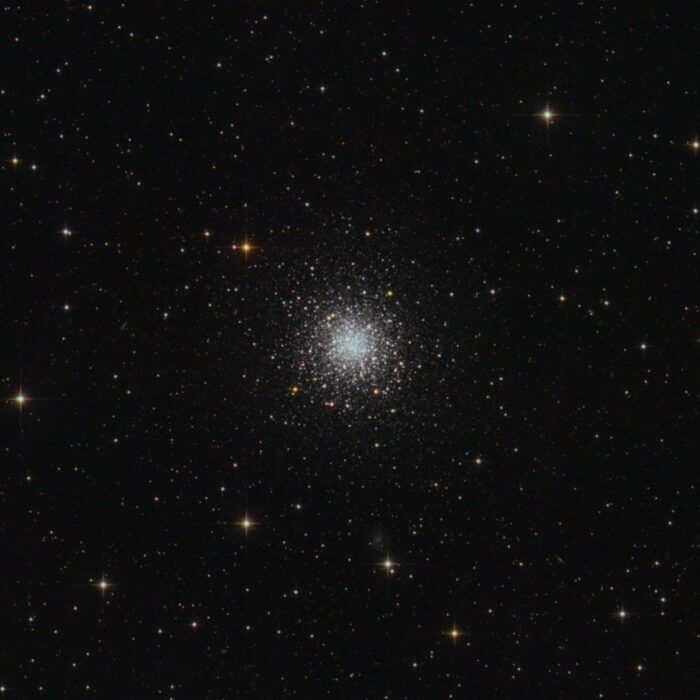

Judy Schmidt from Fresh Meadows, NY, USA, CC BY 2.0, via Wikimedia Commons


Directly at the dark cloud is Crux.
To the lower right are the emission nebulae IC 2948 and IC 2872 and above them the bright spot is the star cluster NGC 3766.
Directly left of the left star is the star cluster NGC 4852 and below this the bright point is the star cluster NGC 4755 (C94).
In the middle of the coal sack is the star cluster NGC 4609 (C98).
Above the lowest star is the star cluster NGC 4349.
Between the lowermost star and the emission nebulae is star cluster NGC 4052 and above it is star cluster NGC 4103.

Copyright by WikiSky.org, WikiSky's snapshot tool
In the center of the image is NGC 4615 (Arp 34).
Above it on the right is NGC 4613.
Below it on the right is NGC 4614.

Copyright by WikiSky.org, WikiSky's snapshot tool
In the center of the image is NGC 4615 (Arp 34).
Above it on the right is NGC 4613.
Below it on the right is NGC 4614.

Copyright by WikiSky.org, WikiSky's snapshot tool
In the center of the image is NGC 4615 (Arp 34).
Above it on the right is NGC 4613.
Below it on the right is NGC 4614.

In the center of the image is NGC 4618 (Arp 23) in whose one spiral arm are IC 3668 and IC 3669 (0.02' large cluster of stars with emission nebula - not seen here).
Above left is NGC 4625 (IC 3675).

Ole Nielsen, CC BY-SA 2.5, via Wikimedia Commons

Copyright by WikiSky.org, WikiSky's snapshot tool
This galaxy is the only one known that rotates against the orientation of its arms, and still has a region in the interior that rotates "normally".

In the center of the image is NGC 4618 (Arp 23) in whose one spiral arm are IC 3668 and IC 3669 (0.02' large cluster of stars with emission nebula - not seen here).
Above left is NGC 4625 (IC 3675).

Above is the galaxy NGC 4631 (C32).
The small galaxy above is NGC 4627.
Together they form the galaxy pair Arp 281.
Bottom left is the galaxy NGC 4656.



On the lower left is M60. Above it on the right is NGC 4647.
Together they form the galaxy pair Arp 116.

On the lower left is M60. Above it on the right is NGC 4647.
Together they form the galaxy pair Arp 116.


R. Jay GaBany, CC BY-SA 3.0, via Wikimedia Commons

The small galaxy at the top is NGC 4639.
Inside the galaxy NGC 4654 is the H-II region IC 3708.

At the top is the galaxy NGC 4631 (C32).
The small galaxy above is NGC 4627.
Together they form the galaxy pair Arp 281.
At the lower left is the galaxy NGC 4656.

Judy Schmidt from USA, CC BY 2.0, via Wikimedia Commons

Adam Block/Mount Lemmon SkyCenter/University of Arizona, CC BY-SA 4.0, via Wikimedia Commons
The lower galaxy is NGC 4676A, the upper one NGC 4676B.



Copyright by WikiSky.org, WikiSky's snapshot tool

Jschulman555, CC BY-SA 3.0, via Wikimedia Commons

Copyright by WikiSky.org, WikiSky's snapshot tool


In the center is NGC 4725.
To the right is NGC 4712.
In the upper left is NGC 4747.

In the center is NGC 4725.
To the right is NGC 4712.
In the upper left is NGC 4747.

Starhopper, CC BY-SA 4.0, via Wikimedia Commons

In the center is NGC 4725.
To the right is NGC 4712.
In the upper left is NGC 4747.

Copyright by WikiSky.org, WikiSky's snapshot tool
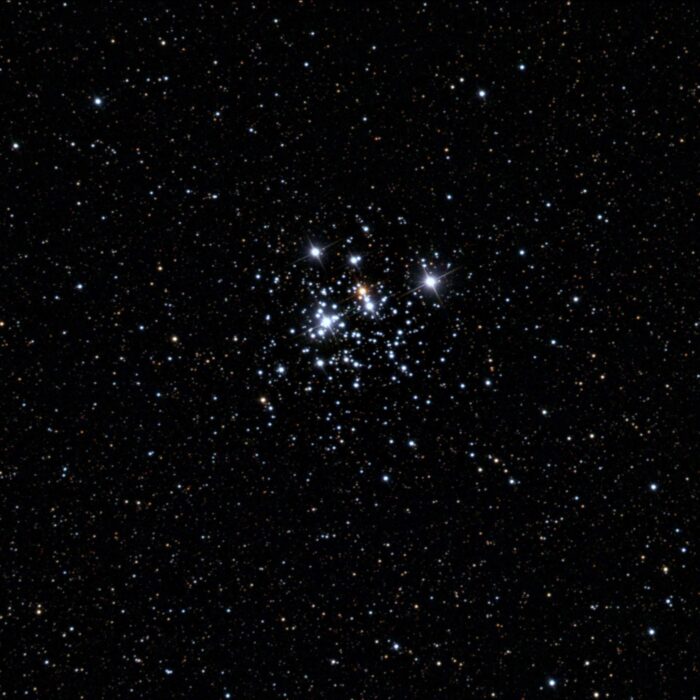


Starhopper, CC BY-SA 4.0, via Wikimedia Commons



Right at the dark cloud is Crux.
At the lower right the emission nebulae IC 2948 and IC 2872 are visible and above them the bright point is the star cluster NGC 3766.
Directly left of the left star is the star cluster NGC 4852 and below this the bright point is the star cluster NGC 4755 (C94).
In the middle of the coal sack is the star cluster NGC 4609 (C98).
Above the lowest star is the star cluster NGC 4349.
Between the lowest star and the emission nebulae is the star cluster NGC 4052 and above it is the star cluster NGC 4103.

Copyright by WikiSky.org, WikiSky's snapshot tool

To the right of this is NGC 4874.
To the left diagonally below at the edge is NGC 4921.

To the right is NGC 4874.
Left diagonally below at the edge is NGC 4921.


To the right of this is NGC 4874.
To the left diagonally below at the edge is NGC 4921.

On the left the large galaxy is C83 (NGC 4945).
On the right edge of the image is NGC 4976.

On the left the large galaxy is C83 (NGC 4945).
On the right edge of the image is NGC 4976.

On the left is the galaxy NGC 5033.
On the right is NGC 5005 (C29).
At the very bottom at the edge the galaxy NGC 5002 is just visible.
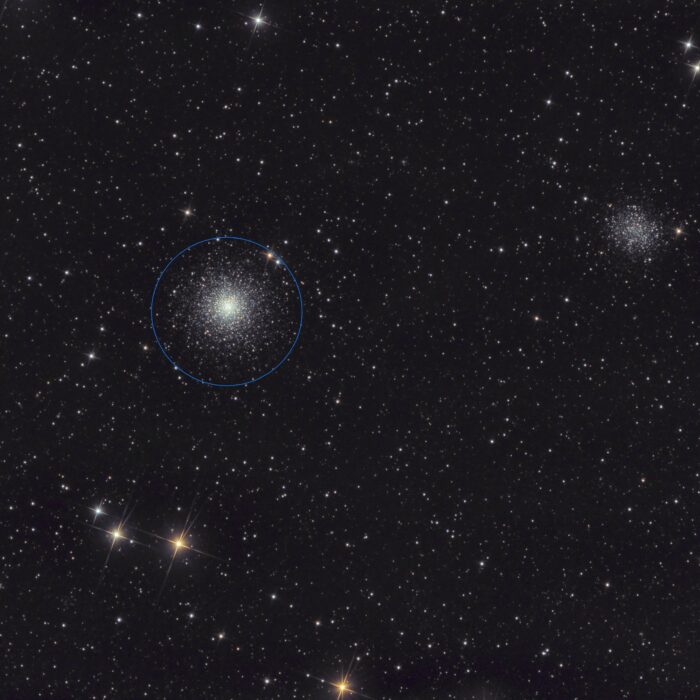
On the right of the star cluster is NGC 5053.

On the left is the galaxy NGC 5033.
On the right is NGC 5005 (C29).
At the very bottom of the edge, the galaxy NGC 5002 can just be seen.

The nebula area in the bottom of the image is Ced 122.
The bright nebula at the right corner of the dark nebula is RCW 75.
In the upper left corner is RCW 78 with the star cluster IC 4291 to its left.
In the center of the image is the large open cluster NGC 5155 with the star cluster NGC 5120 to its right.
At the right edge of the image is the open star cluster NGC 5045.



Copyright by WikiSky.org, WikiSky's snapshot tool


Adam Block/Mount Lemmon SkyCenter/University of Arizona, CC BY-SA 4.0, via Wikimedia Commons

The nebula area in the lower part of the image is Ced 122.
The bright nebula at the right corner of the dark nebula is RCW 75.
In the upper left corner is RCW 78 with the star cluster IC 4291 to its left.
In the center of the image is the large open cluster NGC 5155 with the star cluster NGC 5120 to its right.
At the right edge of the image is the open cluster NGC 5045.

Dylan O' Donnell, deography.com, CC0, via Wikimedia Commons

Jose Mtanous, CC BY-SA 3.0, via Wikimedia Commons

The nebula area in the lower part of the image is Ced 122.
The bright nebula at the right corner of the dark nebula is RCW 75.
In the upper left corner is RCW 78 with the star cluster IC 4291 to its left.
In the center of the image is the large open cluster NGC 5155 with the star cluster NGC 5120 to its right.
At the right edge of the image is the open cluster NGC 5045.

ESO, CC BY 3.0, via Wikimedia Commons, Original-Link

Giuseppe Donatiello from Oria (Brindisi), Italy, CC0, via Wikimedia Commons
The large knot at the end of one spiral arm is the irregular galaxy NGC 5195.

At the very top is NGC 5218, which is connected to the galaxy NGC 5216 below by a faint bridge. Together they form the galaxy pair Arp 104 (Keenan's system).
Below is the galaxy NGC 5205.

At the very top is NGC 5218, which is connected to the galaxy NGC 5216 below by a faint bridge. Together they form the galaxy pair Arp 104 (Keenan's system).
Below is the galaxy NGC 5205.

At the very top is NGC 5218, which is connected to the galaxy NGC 5216 below by a faint bridge. Together they form the galaxy pair Arp 104 (Keenan's system).
Below is the galaxy NGC 5205.

Copyright by Legacy Surveys / D. Lang (Perimeter Institute), CC BY 4.0
The upper large galaxy is NGC 5221.
Below it the galaxy is NGC 5222, next to it on the left you can see the small galaxies PGC 93122 (upper blue area) and PGC 1438924 (lower blue area).
On the lower left side of the galaxy is NGC 5230.
The small galaxy right of the image is PGC 1441117.
In the center at the upper edge of the image NGC 5226 is still visible.

Copyright by Legacy Surveys / D. Lang (Perimeter Institute), CC BY 4.0
The upper large galaxy is NGC 5221.
Below it the galaxy is NGC 5222, next to it on the left you can see the small galaxies PGC 93122 (upper blue area) and PGC 1438924 (lower blue area).
On the lower left side of the galaxy is NGC 5230.
The small galaxy right of the image is PGC 1441117.
In the center at the upper edge of the image NGC 5226 is still visible.

Copyright by Legacy Surveys / D. Lang (Perimeter Institute), CC BY 4.0
The upper large galaxy is NGC 5221.
Below it the galaxy is NGC 5222, next to it on the left you can see the small galaxies PGC 93122 (upper blue area) and PGC 1438924 (lower blue area).
On the lower left side of the galaxy is NGC 5230.
The small galaxy right of the image is PGC 1441117.
In the center at the upper edge of the image NGC 5226 is still visible.


Copyright by WikiSky.org, WikiSky's snapshot tool


Judy Schmidt from USA, CC BY 2.0, via Wikimedia Commons

In the center is NGC 5281.
To the left of it is NGC 5269.
The nebula at the bottom is Gum 48d.


In the center is NGC 5281.
To the left of it is NGC 5269.
The nebula at the bottom is Gum 48d.

The bright star next to it is HD 119834.

CTIO/NOIRLab/NSF/AURA Acknowledgments: Travis Rector (University of Alaska Anchorage), Mahdi Zamani & Davide de Martin, CC BY 4.0
In the center of the image is NGC 5291, interacting with the directly adjacent galaxy PGC 48894 (Shell Galaxy, The Seashell). It lies at the edge of Abell 3574.
The galaxy diagonally right above is PGC 48877.
The galaxy obliquely below it on the left is PGC 48911.

At the right edge of the image is the galaxy NGC 5291 with the interacting galaxy PGC 48894.
In the upper left corner is IC 4329, and in the lower left corner is NGC 5302 with the galaxy NGC 5298 obliquely above it.

At the right edge of the image is the galaxy NGC 5291 with the interacting galaxy PGC 48894.
In the upper left corner is IC 4329, and in the lower left corner is NGC 5302 with the galaxy NGC 5298 obliquely above it.

NASA Goddard Photo and Video, CC BY 2.0, via Wikimedia Commons

The galaxy at the right edge is PGC 2802348.

Judy Schmidt, CC BY 2.0, via Wikimedia Commons

Right at the dark cloud is Crux.
At the lower right the emission nebulae IC 2948 and IC 2872 can be seen and above them the bright point is the Star cluster NGC 3766.
Directly left of the left star is the star cluster NGC 4852 and below this the bright point is the star cluster NGC 4755 (C94).
In the middle of the coal sack is the star cluster NGC 4609 (C98).
Above the lowest star is the star cluster NGC 4349.
Between the lowest star and the emission nebulae is the star cluster NGC 4052 and above it is the star cluster NGC 4103.

Copyright by WikiSky.org, WikiSky's snapshot tool

In the upper left is NGC 5356.
In the center is NGC 5338.

In the upper left is NGC 5356.
In the center is NGC 5338.

At the bottom is NGC 5363.
Above it is NGC 5364.
To the left of it, very small NGC 5360 can be seen.

At the bottom is NGC 5363.
Above it is NGC 5364.
To the left of it, very small NGC 5360 can be seen.

At the bottom is NGC 5363.
Above it is NGC 5364.
To the left of it, very small NGC 5360 can be seen.


The galaxy on the right is NGC 5371.
On the left side of the image is HCG 68, consisting of the three galaxies on the left (NGC 5353 - top, NGC 5354 - middle, NGC 5350 bottom), the small galaxy NGC 5355 (to the right of the three galaxies), and NGC 5358 (above right).

Judy Schmidt from Fresh Meadows, NY, USA, CC BY 2.0, via Wikimedia Commons

Adam Block/Mount Lemmon SkyCenter/University of Arizona, CC BY-SA 4.0, via Wikimedia Commons
The left galaxy is NGC 5426, the right one is NGC 5427.

Adam Block/Mount Lemmon SkyCenter/University of Arizona, CC BY-SA 4.0, via Wikimedia Commons
The left galaxy is NGC 5426, the right one is NGC 5427.

Keesscherer, CC BY-SA 4.0, via Wikimedia Commons
The galaxy on the lower right is the Fire Wheel Galaxy M101.
In the upper left corner is NGC 5474.
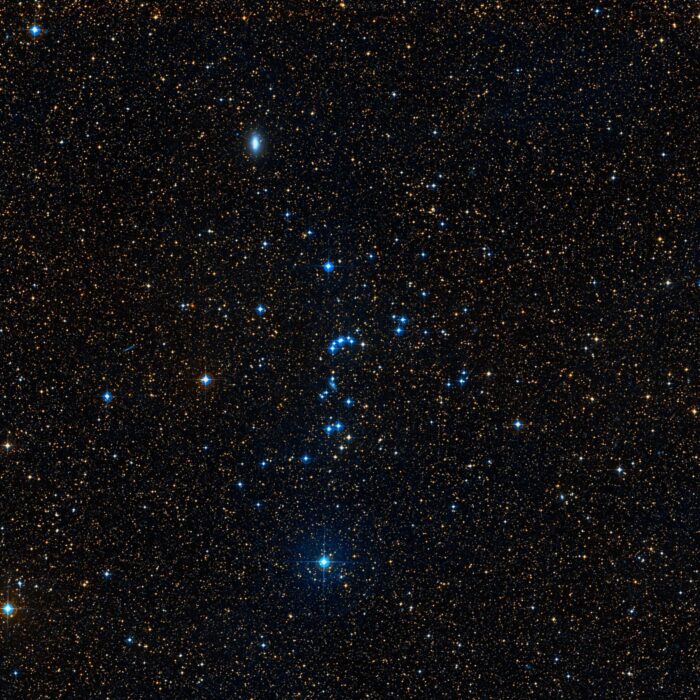
Copyright by WikiSky.org, WikiSky's snapshot tool
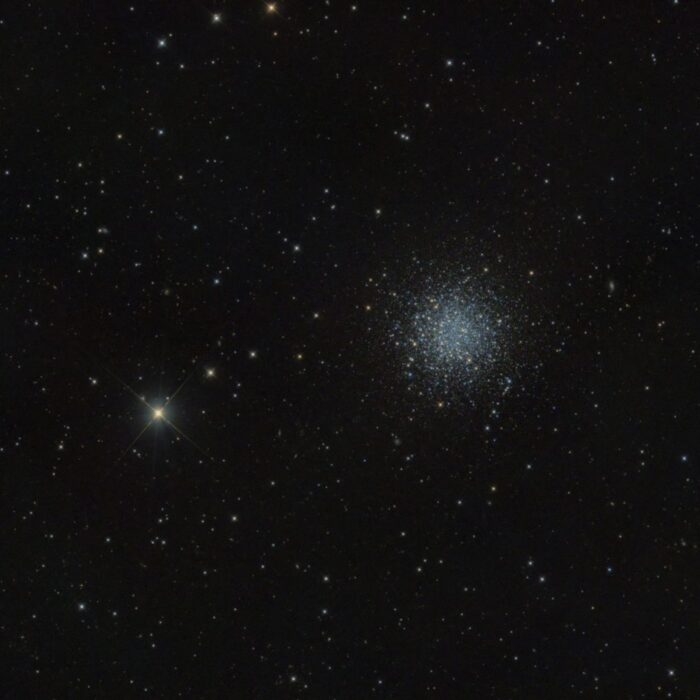


Keesscherer, CC BY-SA 4.0, via Wikimedia Commons
The galaxy on the lower right is the Fire Wheel Galaxy M101.
In the upper left corner is NGC 5474.

Copyright by WikiSky.org, WikiSky's snapshot tool

At the very top is the galaxy NGC 5569.
In the middle is NGC 5566.
To the right is NGC 5560.
Together these three galaxies form the galaxy triplet Arp 286.

At the very top is the galaxy NGC 5569.
In the middle is NGC 5566.
To the right is NGC 5560.
Together these three galaxies form the galaxy triplet Arp 286.

At the very top is the galaxy NGC 5569.
In the middle is NGC 5566.
To the right is NGC 5560.
Together these three galaxies form the galaxy triplet Arp 286.

Copyright by WikiSky.org, WikiSky's snapshot tool
Together with the underlying lenticular galaxy PGC 214249 it forms Arp 69.

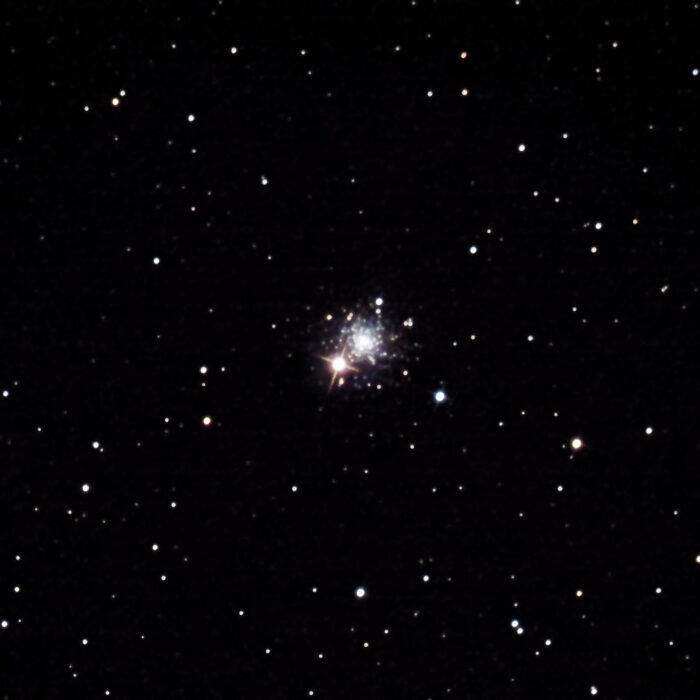

Judy Schmidt, CC BY 2.0, via Wikimedia Commons
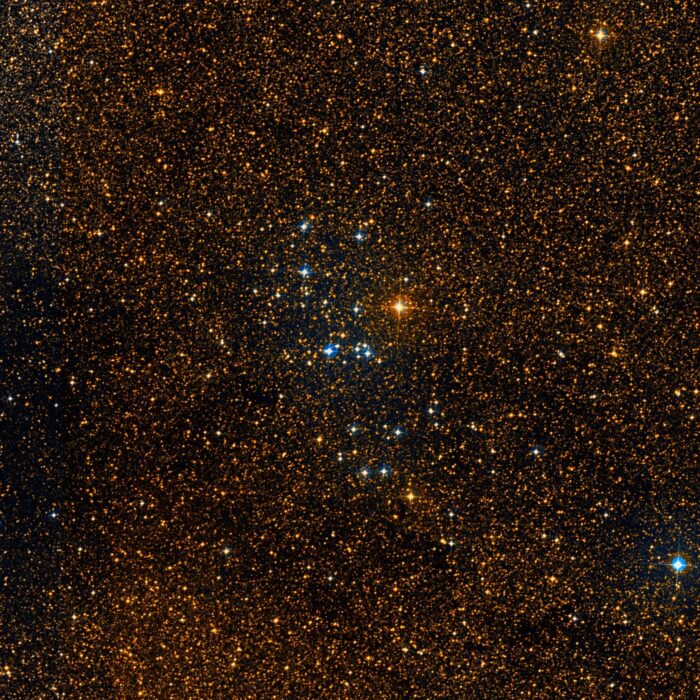
Copyright by WikiSky.org, WikiSky's snapshot tool

Copyright by WikiSky.org, WikiSky's snapshot tool

Copyright by WikiSky.org, WikiSky's snapshot tool
The three galaxies are named NGC 5679A, NGC 5679B, NGC 5679C from right to left.

Judy Schmidt, CC BY 2.0, via Wikimedia Commons

Adam Block/Mount Lemmon SkyCenter/University of Arizona, CC BY-SA 3.0 US, via Wikimedia Commons

In the center is NGC 5713.
Diagonally below it on the left is NGC 5719.

Copyright by WikiSky.org, WikiSky's snapshot tool

In the center is NGC 5651.
Diagonally below it on the left is NGC 5719.

Jschulman555, CC BY-SA 3.0, via Wikimedia Commons
To the upper left is NGC 5752.
Just to the right of it is NGC 5754.
Vertically below it is NGC 5755.
Diagonally below on the left the small galaxy is NGC 5753.
Together, this quartet forms Arp 297.

Jschulman555, CC BY-SA 3.0, via Wikimedia Commons
To the upper left is NGC 5752.
Immediately to the right is NGC 5754.
Vertically below it is NGC 5755.
Diagonally to the left below that small galaxy is NGC 5753.
Together, this quartet forms Arp 297.


NASA, ESA, and E. Perlman (Florida Institute of Technology)
Acknowledgement: Judy Schmidt, CC BY 4.0

Copyright by WikiSky.org, WikiSky's snapshot tool
Below the center of the image is NGC 5820 (Arp 136).
Diagonally above it on the left is NGC 5821.

Copyright by WikiSky.org, WikiSky's snapshot tool
Below the center of the image is NGC 5820 (Arp 136).
Obliquely above it on the left is NGC 5821.

Copyright by WikiSky.org, WikiSky's snapshot tool
The large star cluster on the right is NGC 5822.
To the left is the star cluster NGC 5823.

Roberto Mura, CC BY-SA 3.0, via Wikimedia Commons

Copyright by WikiSky.org, WikiSky's snapshot tool
The large star cluster on the right is NGC 5822.
On the left is the star cluster NGC 5823.

Copyright by WikiSky.org, WikiSky's snapshot tool

Copyright by WikiSky.org, WikiSky's snapshot tool
Together with the irregular galaxy IC 4526 (right above) the two galaxies form Arp 42.
Together with the galaxies PGC 53702 (right above), PGC 53703 (diagonally right above), and PGC 53720 (diagonally left above), the five galaxies form HCG 73.

Copyright by WikiSky.org, WikiSky's snapshot tool

On the upper left is NGC 5850.
Below right is NGC 5846.
At the very bottom of the edge, NGC 5845 can still be seen.

On the upper left is NGC 5850.
Below right is NGC 5846.
At the very bottom of the edge, NGC 5845 can still be seen.

On the upper left is NGC 5850.
Below right is NGC 5846.
At the very bottom of the edge, NGC 5845 can still be seen.


Judy Schmidt, CC BY 2.0, via Wikimedia Commons

San Esteban, CC BY-SA 3.0, via Wikimedia Commons

Ole Nielsen, CC BY-SA 2.5, via Wikimedia Commons

In the upper right is NGC 5905.
The galaxy on the lower left is NGC 5908.

The faint glow on the right, exactly in the center of the disk's dark dust band, is designated NGC 5906.

In the upper right is NGC 5905.
The galaxy on the lower left is NGC 5908.

Copyright by WikiSky.org, WikiSky's snapshot tool
In the upper right is NGC 5927.
Bottom left is NGC 5946.

Copyright by WikiSky.org, WikiSky's snapshot tool
In the upper right is NGC 5927.
Bottom left is NGC 5946.

At the top is the galaxy NGC 5965.
Diagonally right below is NGC 5963.
In the lower left corner is NGC 5971.
To the right of that is NGC 5969.

At the top is the galaxy NGC 5965.
Diagonally right below is NGC 5963.
In the lower left corner is NGC 5971.
To the right of that is NGC 5969.

At the top is the galaxy NGC 5965.
Diagonally right below is NGC 5963.
In the lower left corner is NGC 5971.
To the right of that is NGC 5969.

At the top is the galaxy NGC 5965.
Diagonally right below is NGC 5963.
In the lower left corner is NGC 5971.
To the right of that is NGC 5969.

Judy Schmidt, CC BY 2.0, via Wikimedia Commons

Judy Schmidt, CC BY 2.0, via Wikimedia Commons

On the left is NGC 5985.
In the center is NGC 5982.
On the right is NGC 5981.
Together they form galaxy trio Holm 719.
To the right of it at the edge, a small elongated dot is the galaxy NGC 5976.

On the left is NGC 5985.
In the center is NGC 5982.
On the right is NGC 5981.
Together they form galaxy trio Holm 719.
To the right of it at the edge, a small elongated dot is the galaxy NGC 5976.

On the left is NGC 5985.
In the center is NGC 5982.
On the right is NGC 5981.
Together they form galaxy trio Holm 719.
To the right of it at the edge, a small elongated dot is the galaxy NGC 5976.

Copyright by WikiSky.org, WikiSky's snapshot tool
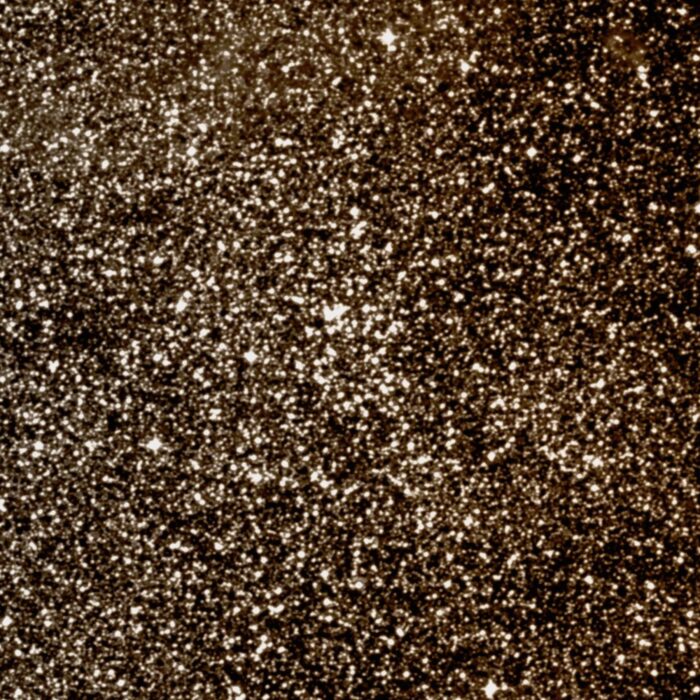
Copyright by WikiSky.org, WikiSky's snapshot tool

Judy Schmidt from USA, CC BY 2.0, via Wikimedia Commons
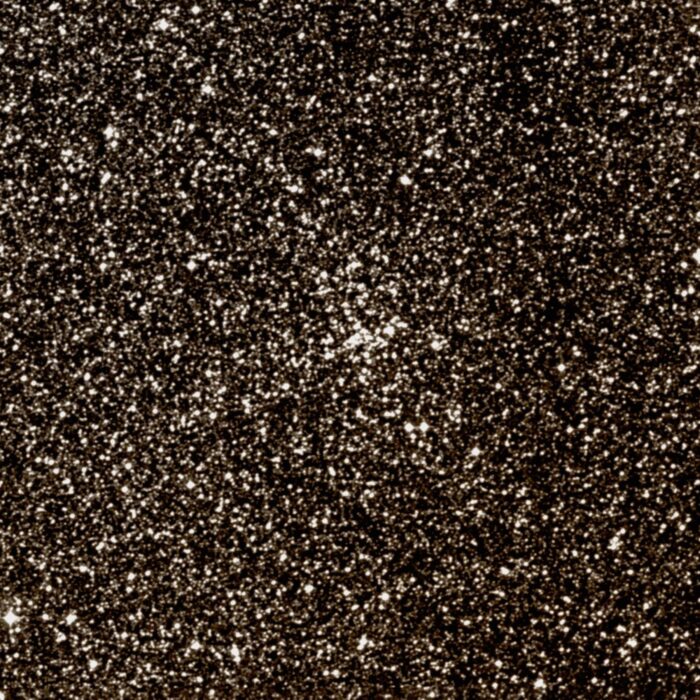
Copyright by WikiSky.org, WikiSky's snapshot tool

Roberto Mura, CC BY-SA 4.0, via Wikimedia Commons


Copyright by WikiSky.org, WikiSky's snapshot tool

Copyright by WikiSky.org, WikiSky's snapshot tool
On the left is Arp 272 (consisting of NGC 6050 (left) and IC 1179 (right)).
Here there is a discrepancy in the Arp catalog. On the photo plate the galaxies NGC 6050 and IC 1179 are shown but in his table he puts NGC 6054 as target.
The online catalogs SIMBAD and Vizier have taken the table value, Wikipedia the galaxy pair.
At the left edge NGC 6054 can be seen.
On the right is the galaxy NGC 6045, which together with PGC 84720 (NGC 6045B - on the left edge of the galaxy) forms Arp 71.
All three are part of the Hercules Cluster Abell 2151.

Copyright by WikiSky.org, WikiSky's snapshot tool
It is two merging galaxies (NGC 6052-1/2). In the infrared, the object reaches a luminosity of 11^11 times that of the Sun.
(https://de.wikipedia.org/wiki/NGC_6052)


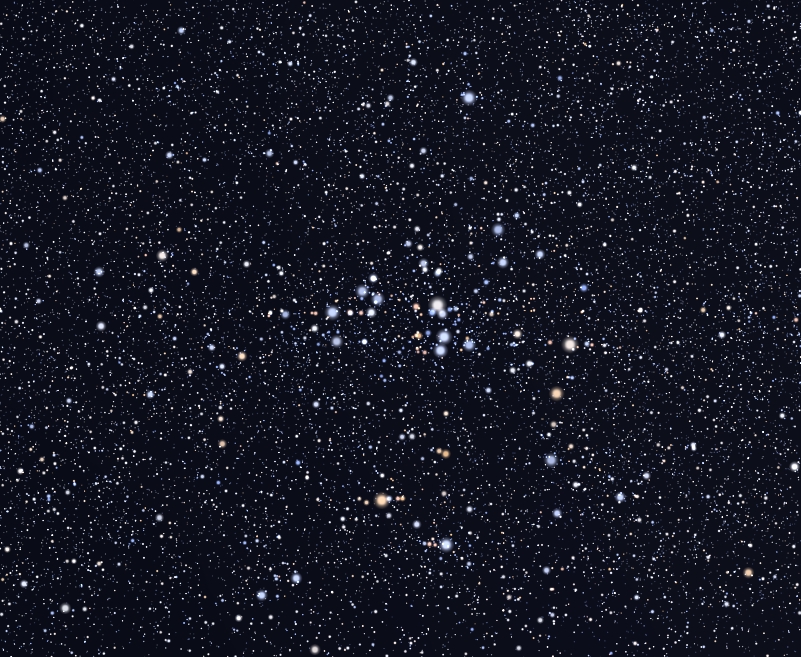
Roberto Mura, CC BY-SA 3.0, via Wikimedia Commons


Copyright by WikiSky.org, WikiSky's snapshot tool

Adam Block/Mount Lemmon SkyCenter/University of Arizona, CC BY-SA 4.0, via Wikimedia Commons

Giuseppe Donatiello, CC0, via Wikimedia Commons
The red nebula at the top is Sh2-9 with the star Sigma Scorpii (Alniyat) in the center and the reflection nebula vdB 104.
The yellow star on the lower right is Alpha Scorpii (Antares) with the nebula vdB 107.
The large star cluster at upper right is M4 and just below it is the small star cluster NGC 6144.
The blue nebula at the bottom is IC 4605.
The large blue nebula on the left is IC 4604 (with the embedded star Rho Ophiuchi).
The dark nebula starting in the center and running to the lower left is LDN 1688, the dark nebula in the lower center is LDN 1689.

Copyright by WikiSky.org, WikiSky's snapshot tool
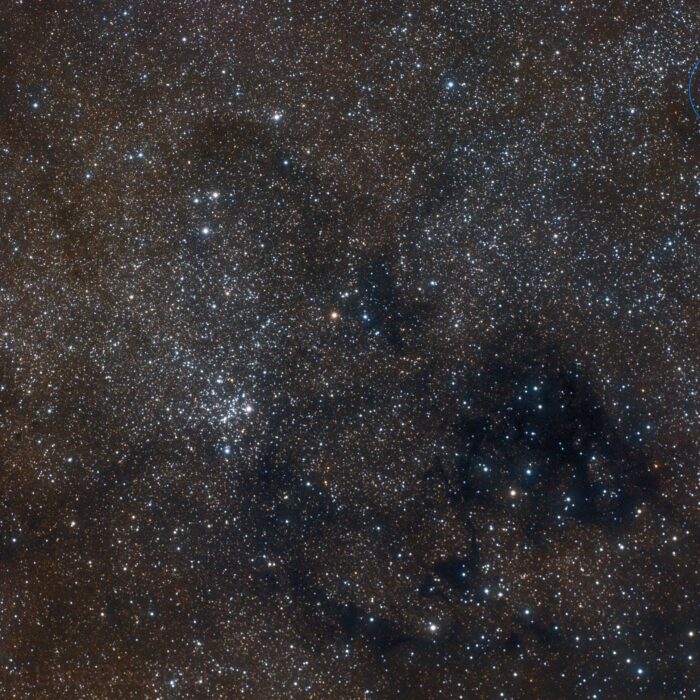
On the upper right is the star cluster NGC 6134.
Below center left is NGC 6167.

Copyright by WikiSky.org, WikiSky's snapshot tool

Giuseppe Donatiello, CC0, via Wikimedia Commons
The red nebula at the top is Sh2-9 with the star Sigma Scorpii (Alniyat) in the center and the reflection nebula vdB 104.
The yellow star at lower right is Alpha Scorpii (Antares) with nebula vdB 107.
The large star cluster at upper right is M4 and just below it is the small star cluster NGC 6144.
The blue nebula at the bottom is IC 4605.
The large blue nebula on the left is IC 4604 (with the embedded star Rho Ophiuchi).
The dark nebula starting in the center and running to the lower left is LDN 1688, and the dark nebula in the lower center is LDN 1689.

Judy Schmidt, CC BY 2.0, via Wikimedia Commons

The left lobe of the nebula is NGC 6164, the right is NGC 6165. Together they form RCW 107 (Gum 52).
The star in the center is HD 148937.

The left lobe of the nebula is NGC 6164, the right is NGC 6165. Together they form RCW 107 (Gum 52).
The star in the center is HD 148937.

On the upper right is the star cluster NGC 6134.
To the left below center is NGC 6167.

Starhopper, CC BY-SA 4.0, via Wikimedia Commons

Dylan O'Donnell, deography.com, CC0, via Wikimedia Commons
The nebula is NGC 6188.
The bright star cluster in the center is NGC 6193.
At the very bottom of the image you can still see the foothills of NGC 6164 / 6165.
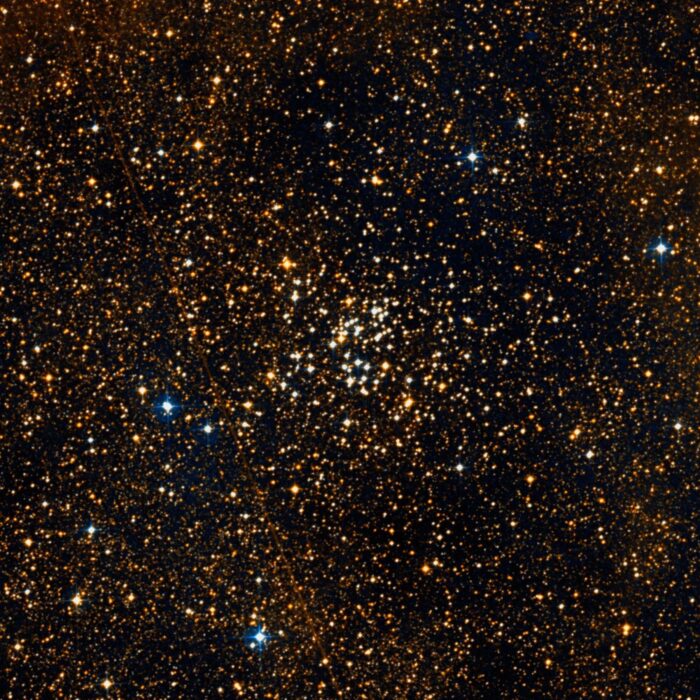
Copyright by WikiSky.org, WikiSky's snapshot tool

Dylan O'Donnell, deography.com, CC0, via Wikimedia Commons
The nebula is NGC 6188.
The bright star cluster in the center is NGC 6193.
At the very bottom of the image you can still see the foothills of NGC 6164.

Starhopper, CC BY-SA 4.0, via Wikimedia Commons


Copyright by WikiSky.org, WikiSky's snapshot tool


Starhopper, CC BY-SA 4.0, via Wikimedia Commons

In the center is the Prawn Nebula IC 4628.
On the right is the star cluster NGC 6231 (C76).
Between the two objects above is the blue giant star HD 151804 (NGC 6227).
To the left of the nebula is the star cluster NGC 6242.
At the lower left is the star cluster NGC 6268.


In the center is the Prawn Nebula IC 4628.
On the right is the star cluster NGC 6231 (C76).
Between the two objects above is the blue giant star HD 151804 (NGC 6227).
To the left of the nebula is the star cluster NGC 6242.
At the lower left is the star cluster NGC 6268.

Copyright by WikiSky.org, WikiSky's snapshot tool

Adam Block/Mount Lemmon SkyCenter/University of Arizona, CC BY-SA 4.0, via Wikimedia Commons

In the center is the Prawn Nebula IC 4628.
On the right is the star cluster NGC 6231 (C76).
Between the two objects above is the blue giant star HD 151804 (NGC 6227).
To the left of the nebula is the star cluster NGC 6242.
At the lower left is the star cluster NGC 6268.
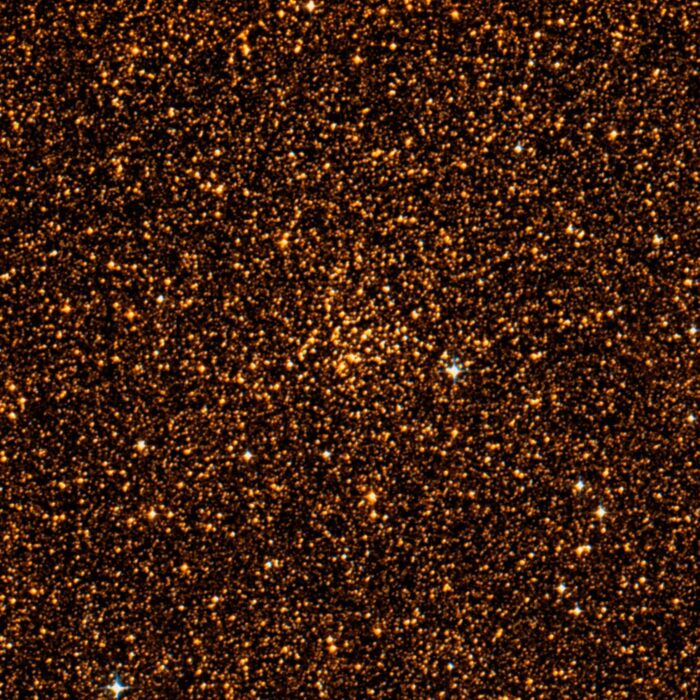
Copyright by WikiSky.org, WikiSky's snapshot tool
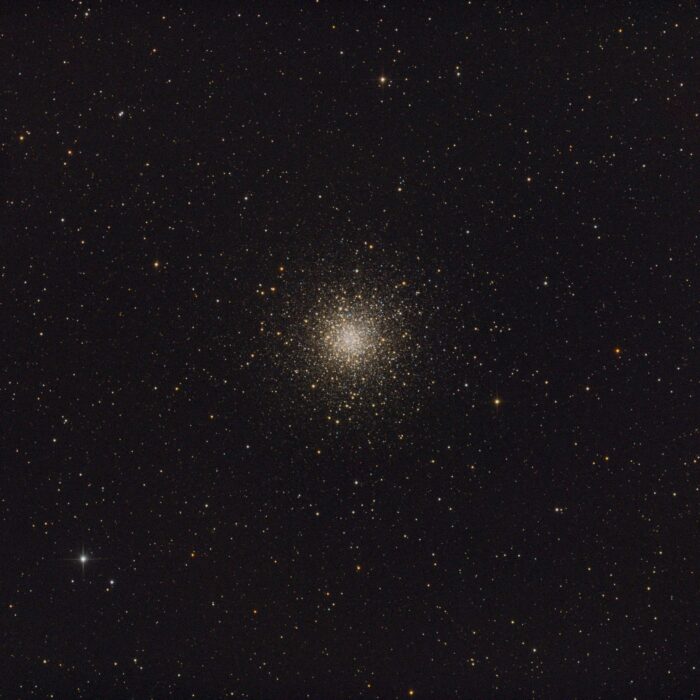
Starhopper, CC BY-SA 4.0, via Wikimedia Commons

Copyright by WikiSky.org, WikiSky's snapshot tool
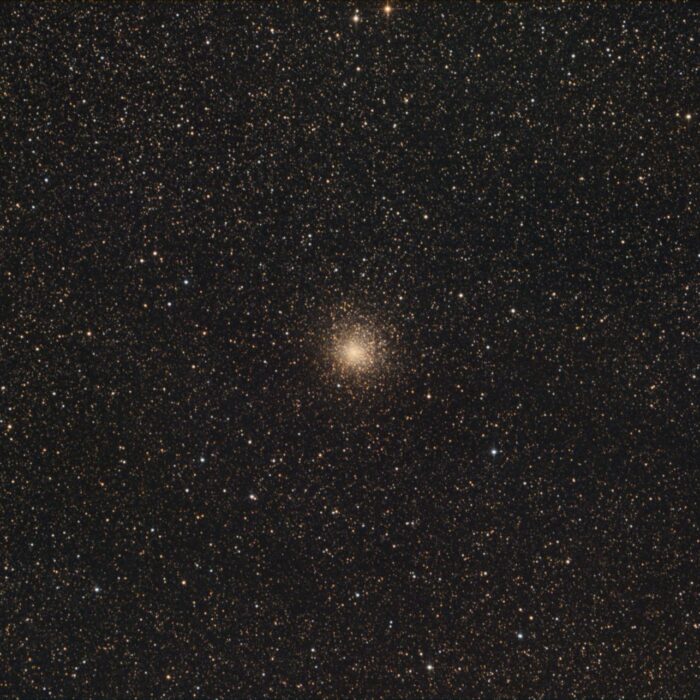

In the center is the Prawn Nebula IC 4628.
On the right is the star cluster NGC 6231 (C76).
Between the two objects above is the blue giant star HD 151804 (NGC 6227).
To the left of the nebula is the star cluster NGC 6242.
At the lower left is the star cluster NGC 6268.


Copyright by WikiSky.org, WikiSky's snapshot tool (nachbearbeitet mit PixInsight und Gimp)
The complete nebula area is RCW 119 (Gum 57b).
The nebula to the right of the star cluster NGC 6281 is Sh2-2.
The upper nebular section of Sh2-2 directly adjacent to the star cluster is Gum 57a.


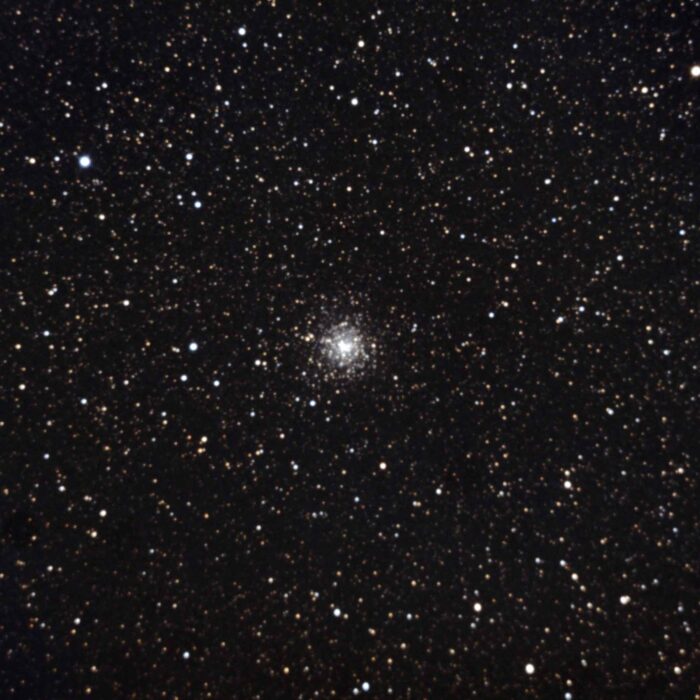


This Sharpless object has been removed from the BFS catalog (updated Sh2 catalog) for HII nebulae.

Copyright by WikiSky.org, WikiSky's snapshot tool

Judy Schmidt, CC BY 2.0, via Wikimedia Commons


Copyright by WikiSky.org, WikiSky's snapshot tool
On the left is the emission nebula Sh2-4.
On the right is the star cluster NGC 6318.

Judy Schmidt, CC BY 2.0, via Wikimedia Commons
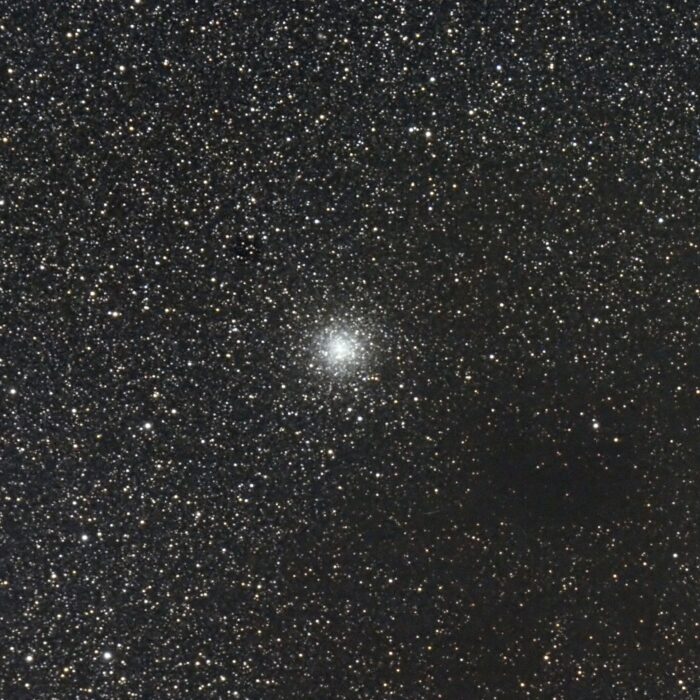

Dylan O'Donnell, deography.com, CC0, via Wikimedia Commons
In the center of the image is NGC 6334 including Gum 61 (upper left), Gum 62 (upper), Gum 63 (complete lower part), Gum 64a (small nebula in the center), Gum 64b (right), Gum 64c (nebular section under Gum 64b).
To the left is RCW 126.
Above to the right is the faint nebula RCW 128.

Copyright by WikiSky.org, WikiSky's snapshot tool (nachbearbeitet mit PixInsight und Gimp)

Adam Block/Mount Lemmon SkyCenter/University of Arizona, CC BY-SA 4.0, via Wikimedia Commons
The upper galaxy is IC 1251.
To the left is IC 1254.
At the bottom is the galaxy NGC 6340.

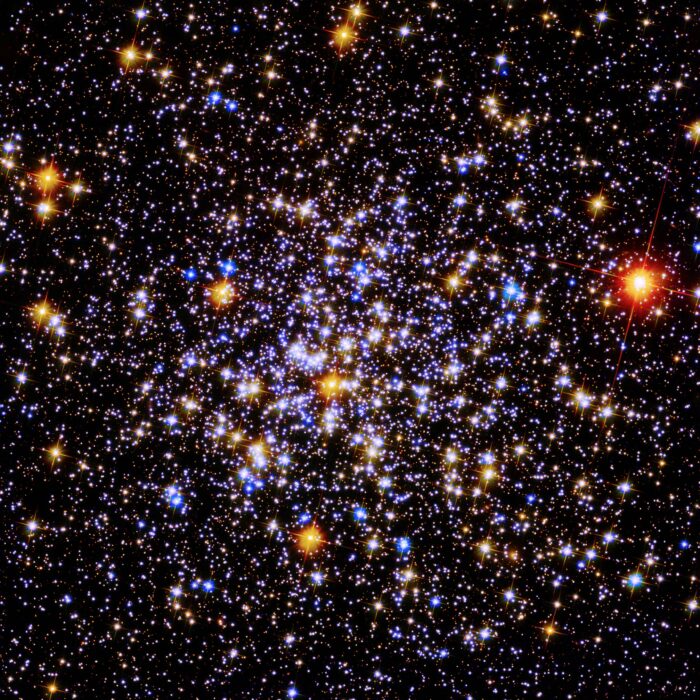
NASA Hubble Space Telescope, CC BY 2.0, via Wikimedia Commons

Copyright by WikiSky.org, WikiSky's snapshot tool

Dylan O'Donnell, deography.com, CC0, via Wikimedia Commons

Copyright by WikiSky.org, WikiSky's snapshot tool

Adam Block/Mount Lemmon SkyCenter/University of Arizona, CC BY-SA 4.0, via Wikimedia Commons
The galaxy pair consists of the galaxies NGC 6365A (round galaxy) and NGC 6365B (elongated galaxy).



ESO, F. Ferraro (University of Bologna), CC BY 4.0, via Wikimedia Commons, Original-Link
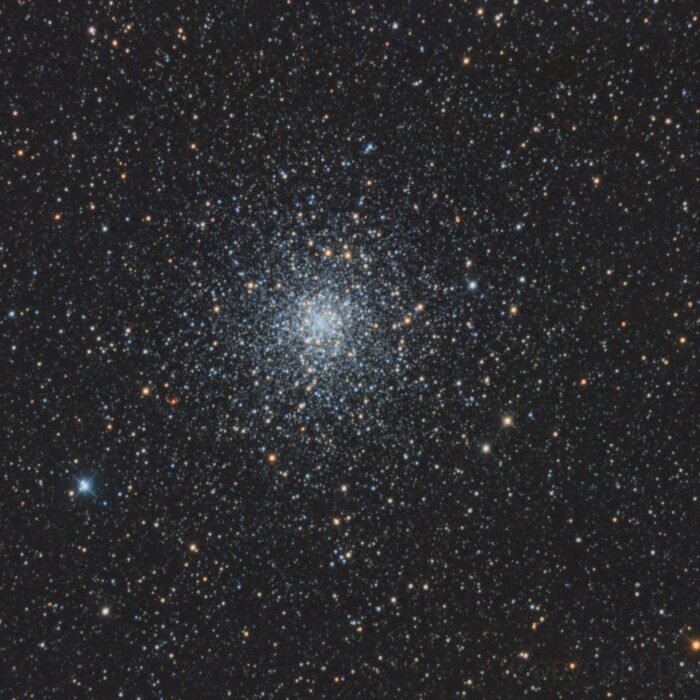
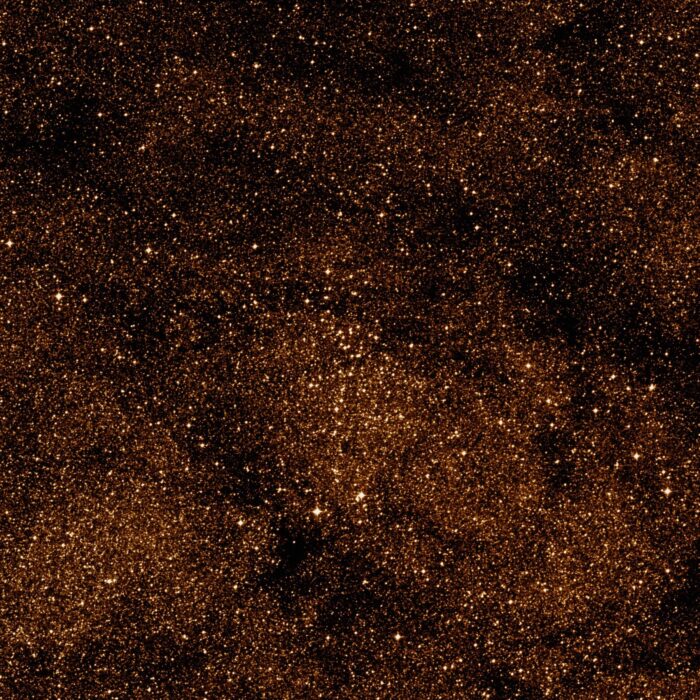
Copyright by WikiSky.org, WikiSky's snapshot tool

Starhopper, CC BY-SA 4.0, via Wikimedia Commons
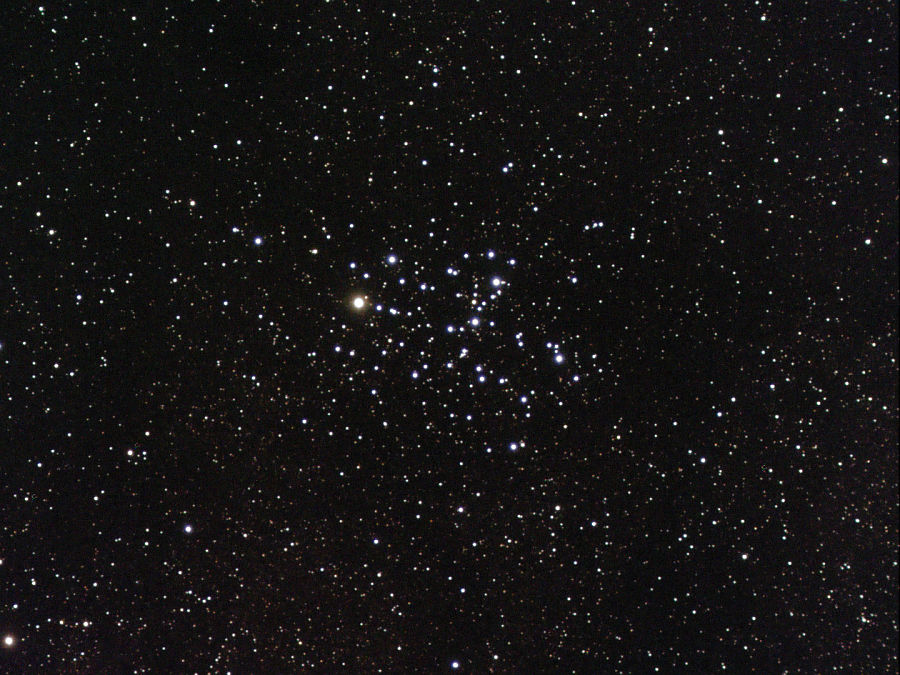
Ole Nielsen, CC BY-SA 2.5, via Wikimedia Commons


In the center lies the star cluster NGC 6451.
The dark red emission nebula is Sh2-15.
To the right is the star cluster NGC 6425.


The bright star is Gamma Scorpii (G Sco, Fuyue).


In the center is the star cluster NGC 6451.
The dark red emission nebula is Sh2-15.
To the right is the star cluster NGC 6425.


Starhopper, CC BY-SA 4.0, via Wikimedia Commons

Starhopper, CC BY-SA 4.0, via Wikimedia Commons

Judy Schmidt from Fresh Meadows, NY, USA, CC BY 2.0, via Wikimedia Commons
NGC 6496 is considered an extremely metal-rich star cluster.


At the very top center is the Star cluster M21.
Diagonally right below is the Trifid Nebula M20 and diagonally right below Sh2-28.
At lower center is the Lagoon Nebula M8 with the bright nebulae NGC 6526 (lower left) and the irregular area NGC 6533 (upper right) (separated by the slightly darker s-shaped area) and the Star cluster NGC 6530 (left of the bright area).
To the left is the large nebula Sh2-29 with the nebula NGC 6559 (lower left) and the oblique planetary nebula Minkowski 1-41 (red dot), the star cluster IC 4685 (center), the nebula IC 1275 (upper left center), the nebula IC 1274 (above).
A bit above the blue star is the nebula IC 4684 and diagonally right above is the star cluster NGC 6546.

The dark nebula next to the star cluster is Barnard 86.

Jschulman555, CC BY-SA 4.0, via Wikimedia Commons
Bottom left is the star cluster NGC 6528.

At the very top center is the Star cluster M21.
Diagonally right below is the Trifid Nebula M20 and diagonally right below Sh2-28.
At lower center is the Lagoon Nebula M8 with the bright nebulae NGC 6526 (lower left) and the irregular area NGC 6533 (upper right) (separated by the slightly darker s-shaped area) and the star cluster NGC 6530 (left of the bright area).
To the left is the large nebula Sh2-29 with the nebula NGC 6559 (lower left) and the oblique planetary nebula Minkowski 1-41 (red dot), the star cluster IC 4685 (center), the nebula IC 1275 (upper left center), the nebula IC 1274 (above).
A bit above the blue star is the nebula IC 4684 and diagonally right above is the star cluster NGC 6546.

Jschulman555, CC BY-SA 4.0, via Wikimedia Commons
In the upper right is the star cluster NGC 6522.

At the very top center is the star cluster M21.
Diagonally right below is the Trifid Nebula M20 and diagonally right below that is Sh2-28.
At the very bottom center is the Lagoon Nebula M8 with the bright nebulae NGC 6526 (lower left) and the irregular area NGC 6533 (upper right) (separated by the slightly darker s-shaped area) and the star cluster NGC 6530 (left of the bright area).
To the left is the large nebula Sh2-29 with the nebula NGC 6559 (lower left) and the oblique planetary nebula Minkowski 1-41 (red dot), the star cluster IC 4685 (center), the nebula IC 1275 (upper left center), the nebula IC 1274 (above).
A bit above the blue star is the nebula IC 4684 and diagonally right above is the star cluster NGC 6546.

At the very top center is the Star cluster M21.
Diagonally right below is the Trifid Nebula M20 and diagonally right below Sh2-28.
At lower center is the Lagoon Nebula M8 with the bright nebulae NGC 6526 (lower left) and the irregular area NGC 6533 (upper right) (separated by the slightly darker s-shaped area) and the Star cluster NGC 6530 (left of the bright area).
To the left is the large nebula Sh2-29 with the nebula NGC 6559 (lower left) and the oblique planetary nebula Minkowski 1-41 (red dot), the star cluster IC 4685 (center), the nebula IC 1275 (upper left center), the nebula IC 1274 (above).
A bit above the blue star is the nebula IC 4684 and diagonally right above is the star cluster NGC 6546.


ESO, CC BY 4.0, via Wikimedia Commons, Original-Link
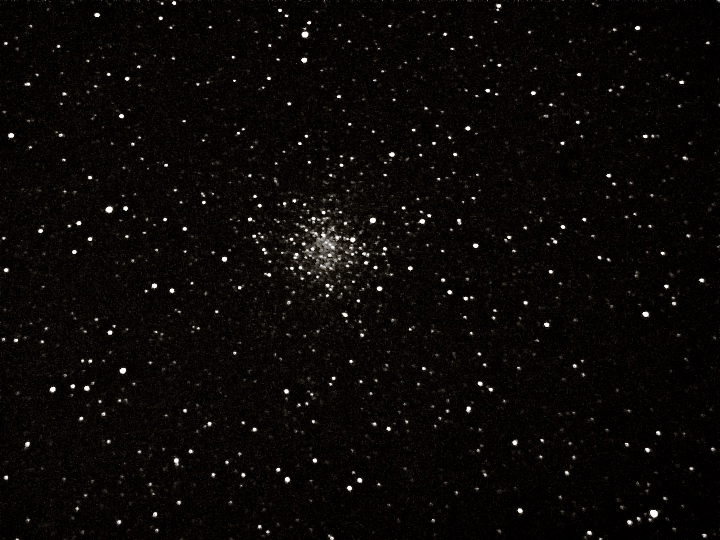


On the left the small galaxy is NGC 6552.
On the right the bright section in the Cat's Eye nebula (C6, NGC 6543) is IC 4677.


At the very top center is the star cluster M21.
Diagonally right below is the Trifid Nebula M20 and diagonally right below that is Sh2-28.
At the very bottom center is the Lagoon Nebula M8 with the bright nebulae NGC 6526 (lower left) and the irregular area NGC 6533 (upper right) (separated by the slightly darker s-shaped area) and the star cluster NGC 6530 (left of the bright area).
To the left is the large nebula Sh2-29 with the nebula NGC 6559 (lower left) and the oblique planetary nebula Minkowski 1-41 (red dot), the star cluster IC 4685 (center), the nebula IC 1275 (upper left center), the nebula IC 1274 (above).
A bit above the blue star is the nebula IC 4684 and diagonally right above is the star cluster NGC 6546.

On the left the small galaxy is NGC 6552.
On the right, the bright section in the Cat's Eye nebula (C6, NGC 6543) is IC 4677.
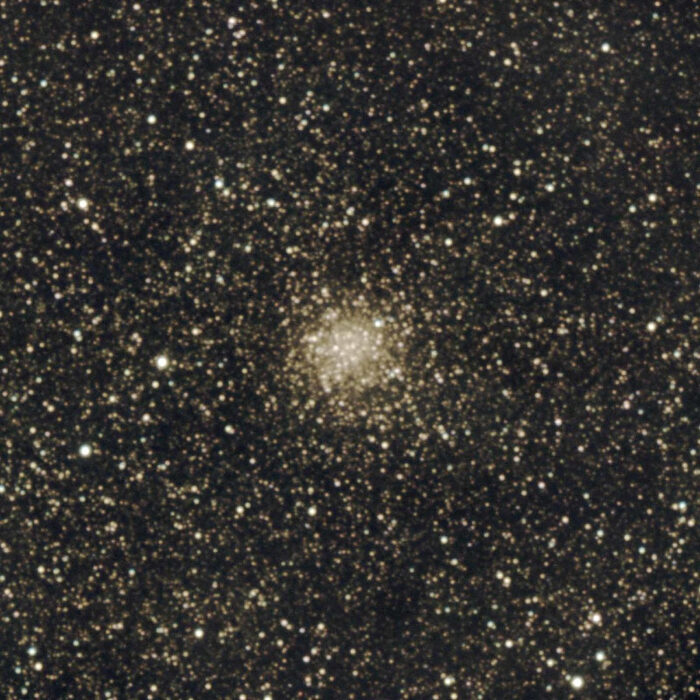
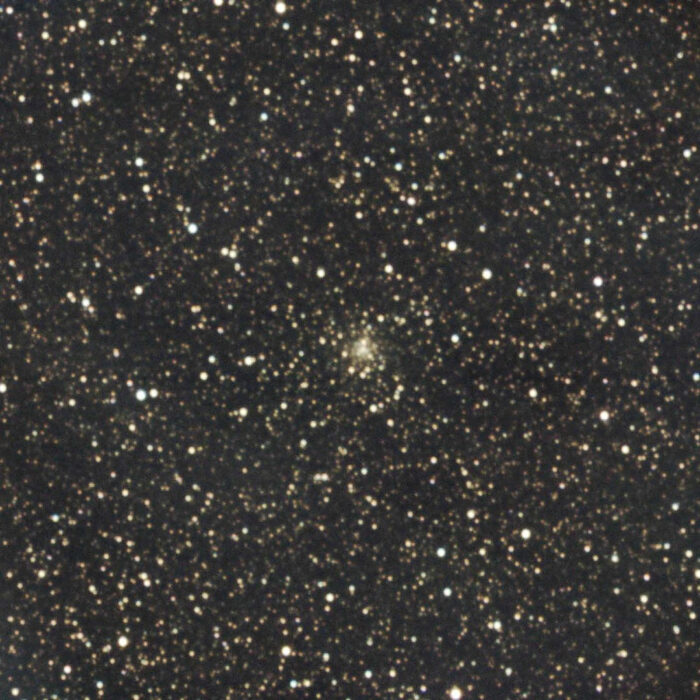

At the very top center is the star cluster M21.
Diagonally right below is the Trifid Nebula M20 and diagonally right below that is Sh2-28.
At the very bottom center is the Lagoon Nebula M8 with the bright nebulae NGC 6526 (lower left) and the irregular region NGC 6533 (upper right) (separated by the slightly darker s-shaped region) and the star cluster NGC 6530 (to the left of the bright region).
To the left is the large nebula Sh2-29 with the nebula NGC 6559 (lower left) and the oblique planetary nebula Minkowski 1-41 (red dot), the star cluster IC 4685 (center), the nebula IC 1275 (upper left center), the nebula IC 1274 (above).
A bit above the blue star is the nebula IC 4684 and diagonally right above is the star cluster NGC 6546.


Judy Schmidt, CC BY 2.0, via Wikimedia Commons

Copyright by WikiSky.org, WikiSky's snapshot tool
The planetary nebula is located in the center of the image.



Judy Schmidt, CC BY 2.0, via Wikimedia Commons
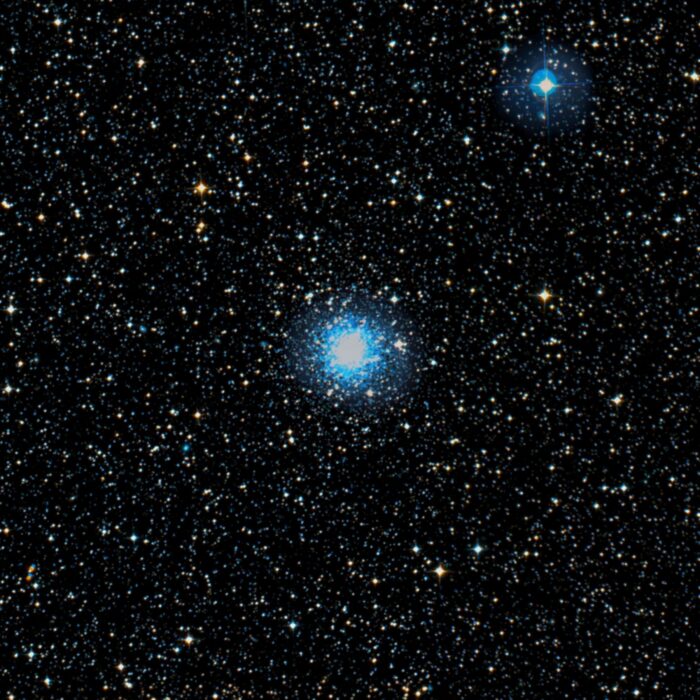
Copyright by WikiSky.org, WikiSky's snapshot tool (nachbearbeitet mit PixInsight und Gimp)

The large star cloud at the top is M24, which contains the star cluster NGC 6603 at the top and SH2-39 diagonally below it. The upper red nebula area is Sh2-41.
The dark nebula at the top is Barnard 92 and to the left you can see the lower end of Barnard 93.
The small red nebula is IC 1284 with the bright star HD 167815 in the center.
Directly above, the fainter red nebula, is IC 1283.
Just to the right are the two reflection nebulae NGC 6589 (the upper) and NGC 6590 (vdB 119) (the lower).
The nebula area to the lower right is Sh2-35.

The large star cloud at the top is M24, which contains the star cluster NGC 6603 at the top and SH2-39 diagonally below it. The upper red nebula area is Sh2-41.
The dark nebula at the top is Barnard 92 and to the left you can see the lower end of Barnard 93.
The small red nebula is IC 1284 with the bright star HD 167815 in the center.
Directly above, the fainter red nebula, is IC 1283.
Just to the right are the two reflection nebulae NGC 6589 (the upper) and NGC 6590 (vdB 119) (the lower).
The nebula area to the lower right is Sh2-35.
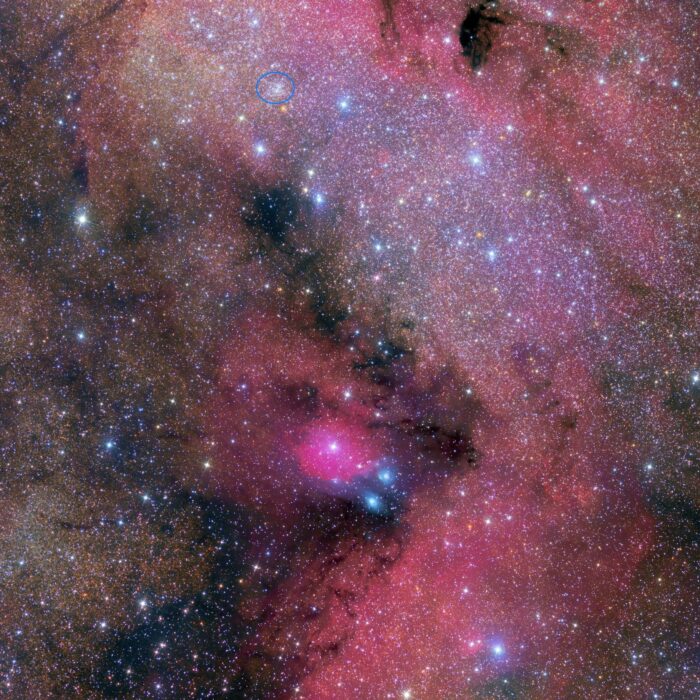
The large star cloud at the top is M24, which contains the star cluster NGC 6603 at the top and SH2-39 diagonally below it. The upper red nebula area is Sh2-41.
The dark nebula at the top is Barnard 92 and to the left you can see the lower end of Barnard 93.
The small red nebula is IC 1284 with the bright star HD 167815 in the center.
Directly above, the fainter red nebula, is IC 1283.
Just to the right are the two reflection nebulae NGC 6589 (the upper) and NGC 6590 (vdB 119) (the lower).
The nebula area to the lower right is Sh2-35.

The large dark red nebula area is Sh2-54.
The bright red node in the upper area is Gum 85.
In the lower part of this nebula area is the star cluster NGC 6604.
In the center of the image to the right of the bright star is the open cluster NGC 6625.

On the left the large Nebula is IC 4703 (Eagle Nebula: 70'x50' extent). It contains the open star cluster M16 (NGC 6611: 7' extent).
The right nebula is M17 with NGC 6618 (below (Gum 81a)) and the faint nebulae IC 4706 and IC 4707 (together Gum 81b) directly above it, and the small nebula Sh2-47 above it.
On the right edge, the star cluster M18 can be seen.
In the upper right corner is IC 4701.
Centered between M16 and M17 is RCW 161 and below it the HII area Gum 82.
Right below M16 is Sh2-48 and below M17 is RCW 159.
At the very bottom center of the edge is Sh2-50, and to its left is Sh2-53.

The star cluster in the center is M18.
The single star left above is vdB 121.
Right just before the edge is vdB 120.
Above the nebula belongs to IC 4701.

On the left the large Nebula is IC 4703 (Eagle Nebula: 70'x50' extent). It contains the open star cluster M16 (NGC 6611: 7' extent).
The right nebula is M17 with NGC 6618 (below (Gum 81a)) and the faint nebulae IC 4706 and IC 4707 (together Gum 81b) directly above it, and the small nebula Sh2-47 above it.
On the right edge, the star cluster M18 can be seen.
In the upper right corner is IC 4701.
Centered between M16 and M17 is RCW 161 and below it the HII area Gum 82.
Right below M16 is Sh2-48 and below M17 is RCW 159.
At the very bottom center of the edge is Sh2-50, and to its left is Sh2-53.


The large dark red nebula area is Sh2-54.
The bright red node in the upper area is Gum 85.
In the lower part of this nebula area is the star cluster NGC 6604.
In the center of the image to the right of the bright star is the open cluster NGC 6625.

Starhopper, CC BY-SA 4.0, via Wikimedia Commons

Judy Schmidt, CC BY 2.0, via Wikimedia Commonsns
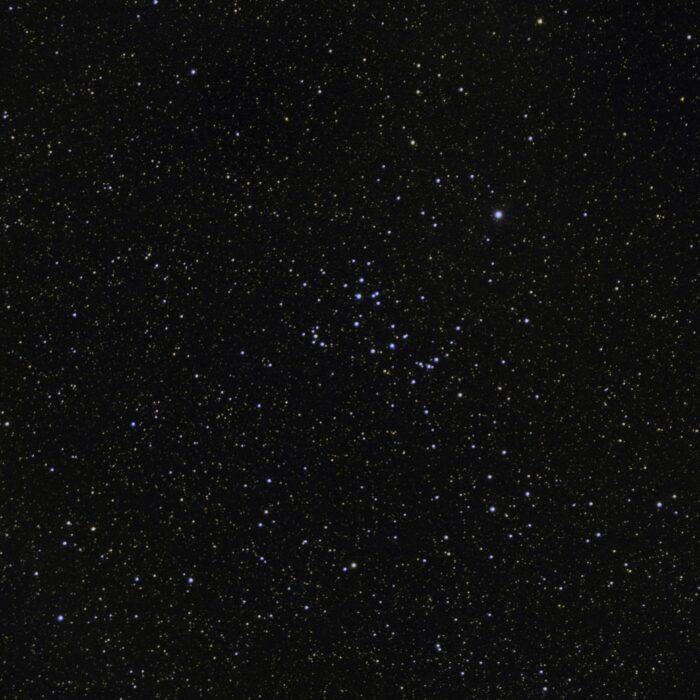
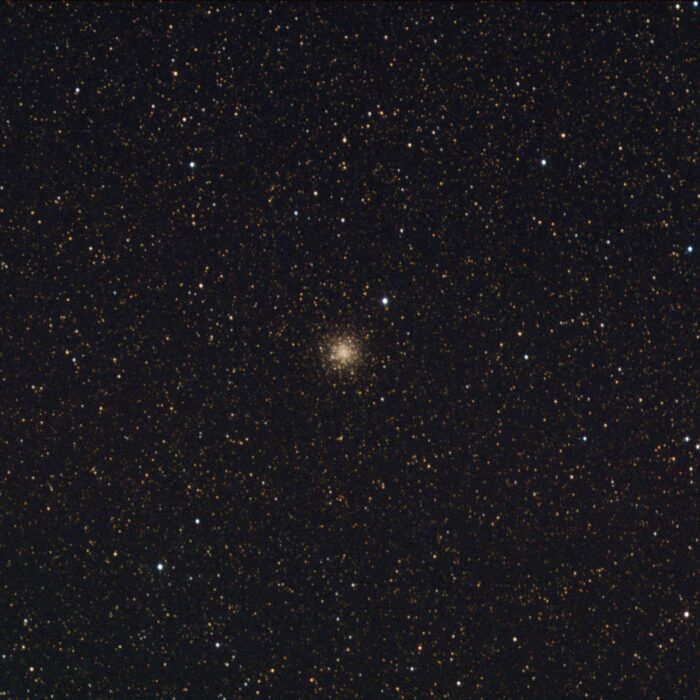
Starhopper, CC BY-SA 4.0, via Wikimedia Commons





NGC 6649 copyright by Astromaster
In the center of the image is the reflection nebula IC 1287 (vdB 124).
The star cluster diagonally left above is NGC 6649.
The red nebula at the top center is Sh2-56.
The red nebula in the lower center is Sh2-55.
To the right, the small red nebula is Abell 45.
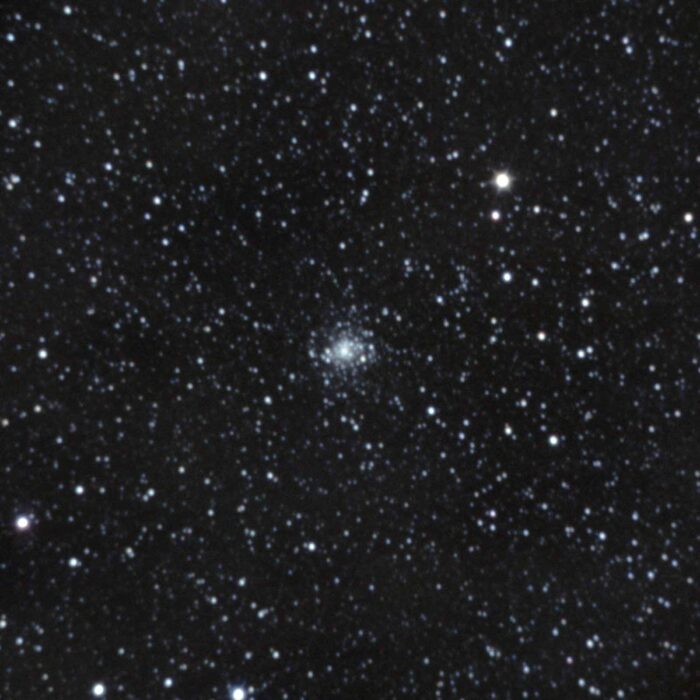


In the center is the emission nebula Sh2-59.
On the right edge is NGC 6664.




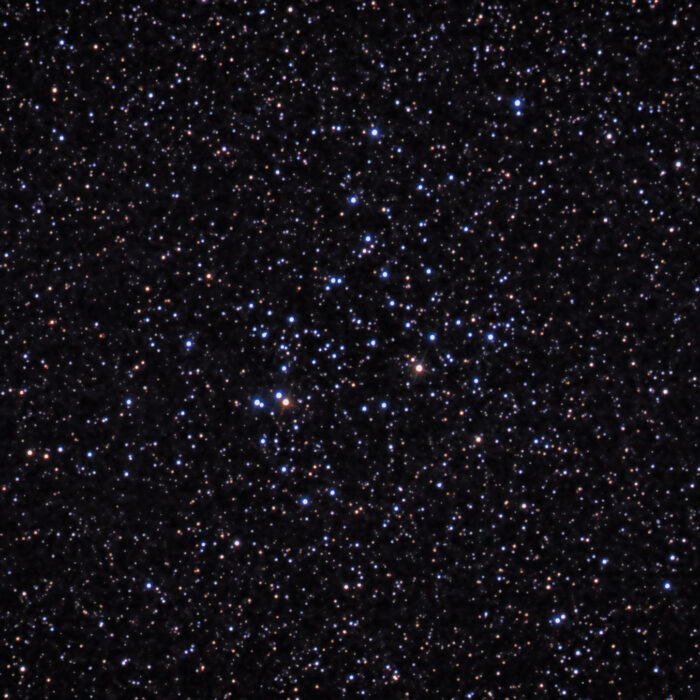

On the left is the planetary nebula IC 1295.
On the right is the globular cluster NGC 6712.

Starhopper, CC BY-SA 4.0, via Wikimedia Commons

M57 is visible in the center of the image.
Diagonally right below is the spiral galaxy IC 1296.
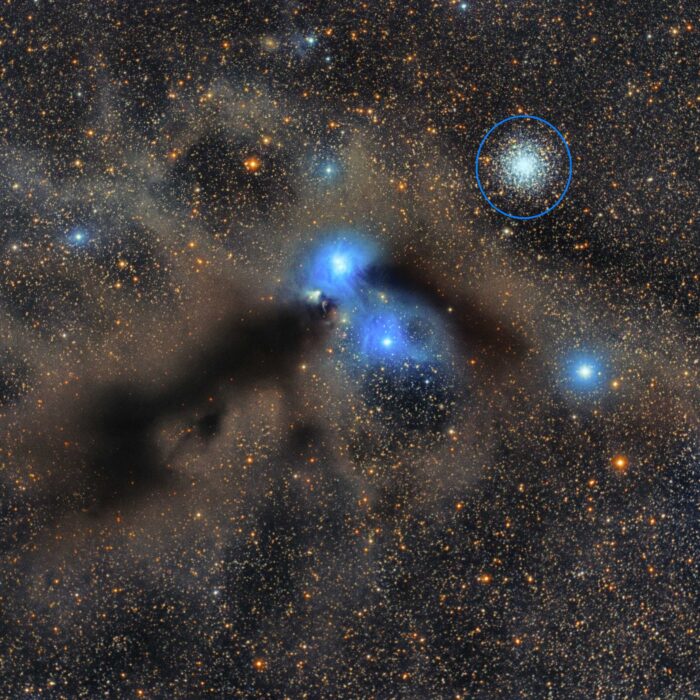
The star cluster on the upper right is NGC 6723 (Candelabra cluster).
In the center of the image to the left of the two large reflection nebulae is C68.
The upper blue reflection nebula is NGC 6726.
The lower blue reflection nebula is IC 4812.
The blue star to the right is Epsilon Coronae Australis and the blue star to the far left is Gamma Coronae Australis. They belong to the zodiacal sign southern crown.
The blue star far right is V686 Coronae Australis.

The star cluster on the upper right is NGC 6723 (Candelabra cluster).
In the center of the image to the left of the two large reflection nebulae is C68.
The upper blue reflection nebula is NGC 6726.
The lower blue reflection nebula is IC 4812.
The blue star to the right is Epsilon Coronae Australis and the blue star to the far left is Gamma Coronae Australis. They belong to the zodiacal sign southern crown.
The blue star far right is V686 Coronae Australis.

The star cluster on the upper right is NGC 6723 (Candelabra cluster).
In the center of the image to the left of the two large reflection nebulae is C68.
The upper blue reflection nebula is NGC 6726.
The lower blue reflection nebula is IC 4812.
The blue star to the right is Epsilon Coronae Australis and the blue star to the far left is Gamma Coronae Australis. They belong to the zodiacal sign southern crown.
The blue star far right is V686 Coronae Australis.

Judy Schmidt, CC BY 2.0, via Wikimedia Commons


NGC 6744 has an irregular companion galaxy designated NGC 6744A (upper left arm lying across the spiral).

Sh2-72 can be seen very faintly in the center of the image.
The small nebula at the right edge of the image is Sh2-71.
At the lower left edge of the image is the globular cluster NGC 6749.





Copyright by WikiSky.org, WikiSky's snapshot tool

The three galaxies in the center of the image are NGC 6769 (top), NGC 6770 (bottom), and NGC 6771 (right).
The galaxy diagonally right below is IC 4842.

The three galaxies in the center of the image are NGC 6769 (top), NGC 6770 (bottom), and NGC 6771 (right).
The galaxy diagonally right below is IC 4842.

The three galaxies in the center of the image are NGC 6769 (top), NGC 6770 (bottom), and NGC 6771 (right).
The galaxy diagonally right below is IC 4842.



Starhopper, CC BY-SA 4.0, via Wikimedia Commons


solomon from USA, CC BY 2.0, via Wikimedia Commons


Copyright by WikiSky.org, WikiSky's snapshot tool
The planetary nebula is located in the center of the image.


Copyright by WikiSky.org, WikiSky's snapshot tool
The planetary nebula is located in the center of the image.

Starhopper, CC BY-SA 4.0, via Wikimedia Commons
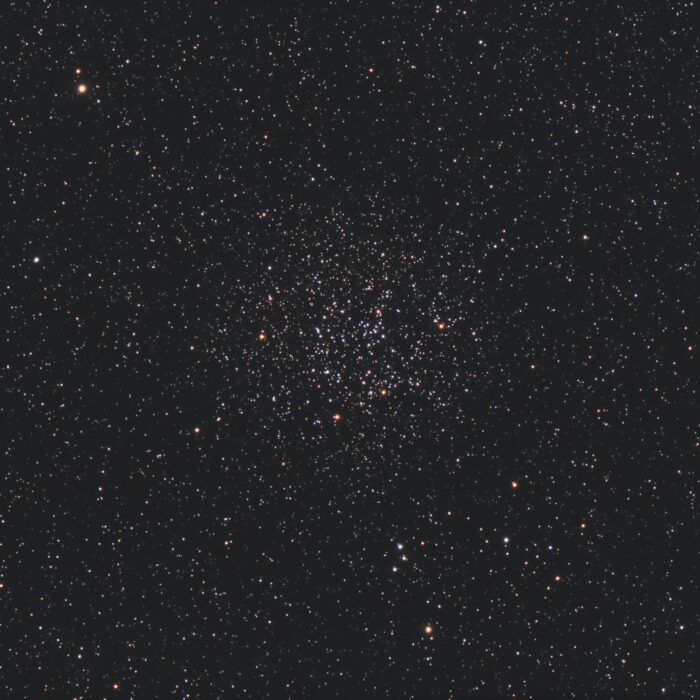




The large nebula is Sh2-86.
The star cluster in the center is NGC 6823.


The large nebula is Sh2-86.
The star cluster in the center is NGC 6823.



Copyright by WikiSky.org, WikiSky's snapshot tool
The planetary nebula is located in the center of the image.


Starhopper, CC BY-SA 4.0, via Wikimedia Commons

This Sharpless object has been removed from the BFS catalog (updated Sh2 catalog) for HII nebulae.

At the top of the nebula (near image center) is the not yet confirmed possible planetary nebula PaStDr 2 with a size of 2.3'.


Starhopper, CC BY-SA 4.0, via Wikimedia Commons

The small upper bright nebula is Sh2-99.
The small lower bright nebula is Sh2-100.
At the left edge of the image near the bright star, the supernova remnant SNR G70.5+1.9 can be seen.

Starhopper, CC BY-SA 4.0, via Wikimedia Commons



ESO/VLT, Judy Schmidt, CC BY 4.0, via Wikimedia Commons
The small galaxy above is IC 4970.

Copyright by WikiSky.org, WikiSky's snapshot tool
The planetary nebula is in the center of the image.

ESA/Hubble & NASA, CC BY 3.0, via Wikimedia Commons, Original-Link


In the upper right is NGC 6883.
The blue nebula is caused by the very hot star Wolf-Rayet 134 (WR 134), as its mass and temperature distribute matter in the surrounding area via stellar winds.

Judy Schmidt, CC BY 2.0, via Wikimedia Commons

Judy Schmidt, CC BY 2.0, via Wikimedia Commons

Obliquely in the upper left corner above the Crescent Nebula at the edge of the Big Red Nebula, the Soap Bubble Nebula PN G75.5+1.7, discovered in 2008, can be seen very faintly.
In the upper left corner the nebula Do 4 can be seen.

Judy Schmidt, CC BY 2.0, via Wikimedia Commons

Adam Block/Mount Lemmon SkyCenter/University of Arizona, CC BY-SA 4.0, via Wikimedia Commons


Gamma-Cygni (Sadr) is the bright star in the center, the star cluster to the right of Sadr is NGC 6910.
The nebula is divided into three parts: IC 1318A (bright nebula lower right), IC 1318B (right wing from butterfly), IC 1318C left wing from butterfly).
The dark cloud LDN 889 separating the Butterfly Nebula thus gives it its characteristic name.
To the left of the Butterfly Nebula, halfway to the edge of the image, is the star cluster M29.
At the bottom of the image to the right of center is the star cluster IC 1311, and in the lower left corner is IC 4996.

Starhopper, CC BY-SA 4.0, via Wikimedia Commons

At the top is the reflection nebula NGC 6914a (vdB 131).
In the center is NGC 6914b (vdb 132).
At the bottom is the reflection nebula NGC 6914c.


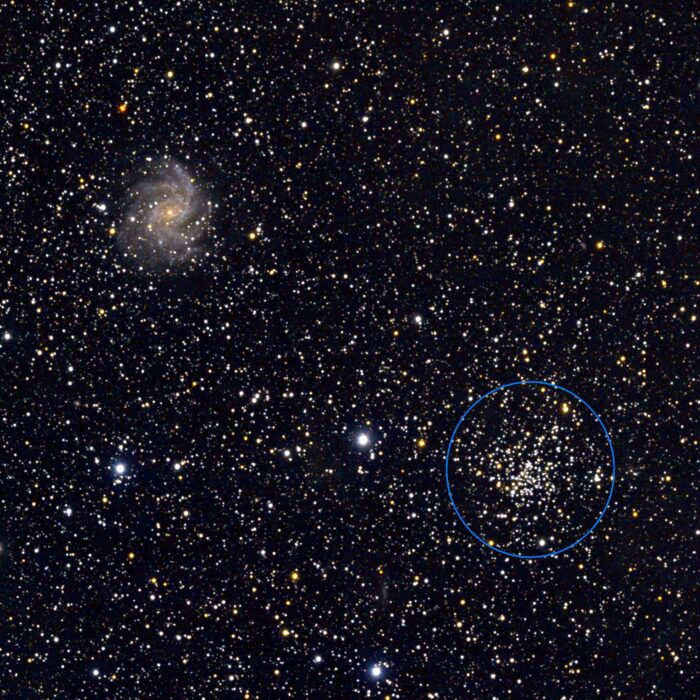
Yu-Hang Kuo, CC BY-SA 2.0, via Wikimedia Commons
The galaxy in the upper left is NGC 6946 (C12).
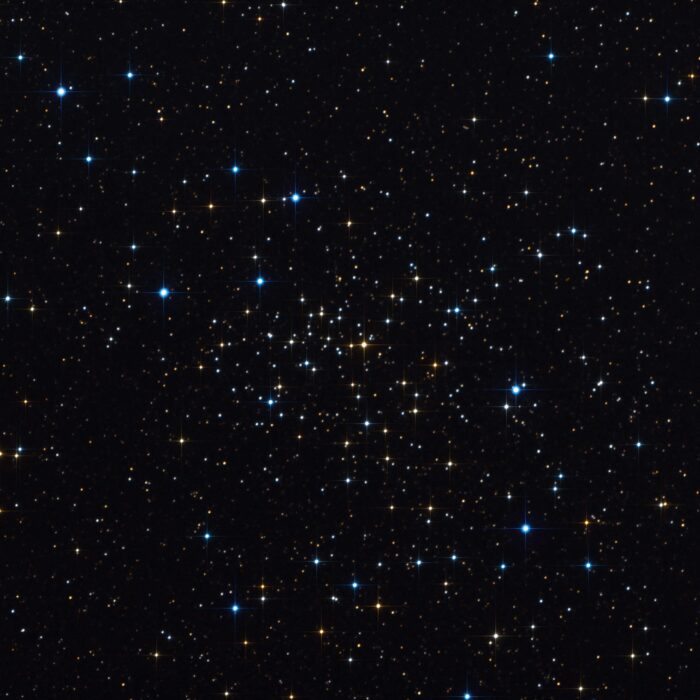

Yu-Hang Kuo, CC BY-SA 2.0, via Wikimedia Commons
The star cluster on the lower right is NGC 6939.


The bright star is 52 Cygni.


On the left the large reflection nebula is IC 5076 (vdB 137).
Below it is the small open cluster NGC 6991. There are different coordinates for this star cluster because William and John Herschel included them differently in the catalogs. (http://www.docdb.net/show_object.php?id=NGC_6991). The star cluster first cataloged by William Herschel is shown here.
At the top right is vdB 138.

The left section is NGC 6992 and just before the flare is NGC 6995. Together they are called the Network Nebula.
The flare is IC 1340.


The bright nebula at the top is the Pelican Nebula IC 5070.
To the right is the emission nebula IC 5068.
Bottom left the large nebula is the North American Nebula NGC 7000.
The three nebulae form the nebular region Sh2-117.
The dark nebula between IC 5070 and NGC 7000 is LDN 935.
The dark nebula on the far right is LDN 914.


Hewholooks, CC BY-SA 3.0, via Wikimedia Commons


KeithSteffens, CC BY-SA 4.0, via Wikimedia Commons


Adam Block/Mount Lemmon SkyCenter/University of Arizona, CC BY-SA 4.0, via Wikimedia Commons



Starhopper, CC BY-SA 4.0, via Wikimedia Commons
In the star cluster M15 the planetary nebula Pease 1 is still hiding very small.

Starhopper, CC BY-SA 4.0, via Wikimedia Commons
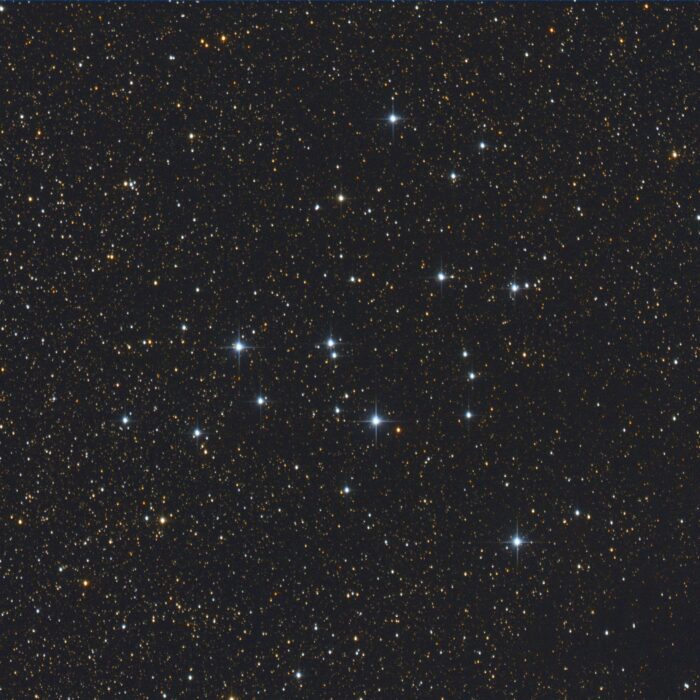
Starhopper, CC BY-SA 4.0, via Wikimedia Commons

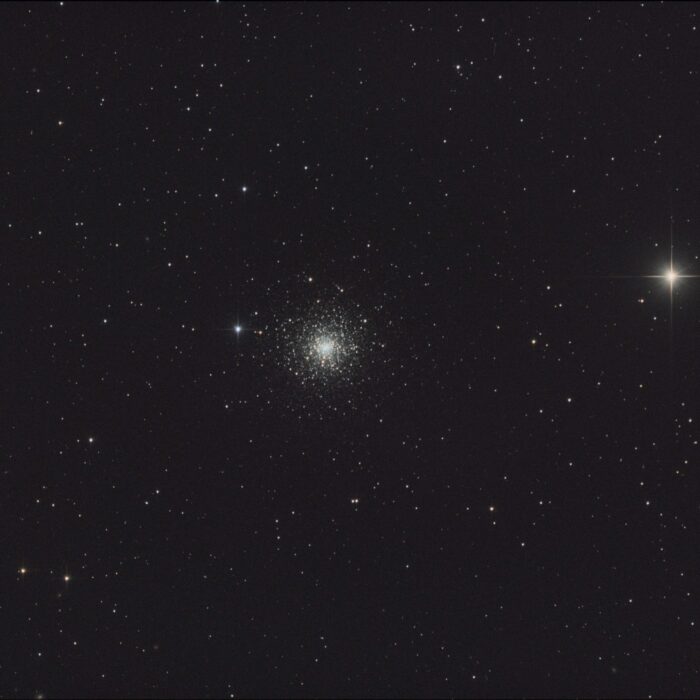
Starhopper, CC BY-SA 4.0, via Wikimedia Commons

vdB 144 is located in the center of the image.
Diagonally to the right below, to the left of the bright yellow star, is the star cluster NGC 7127.

The complete nebula is IC 5134, the centered star cluster is NGC 7129.
On the left the two blue stars are IC 5132 (top) and IC 5133 (bottom).

Fryns, Public domain, via Wikimedia Commons

Below is the reflection nebula with star cluster NGC 7129.


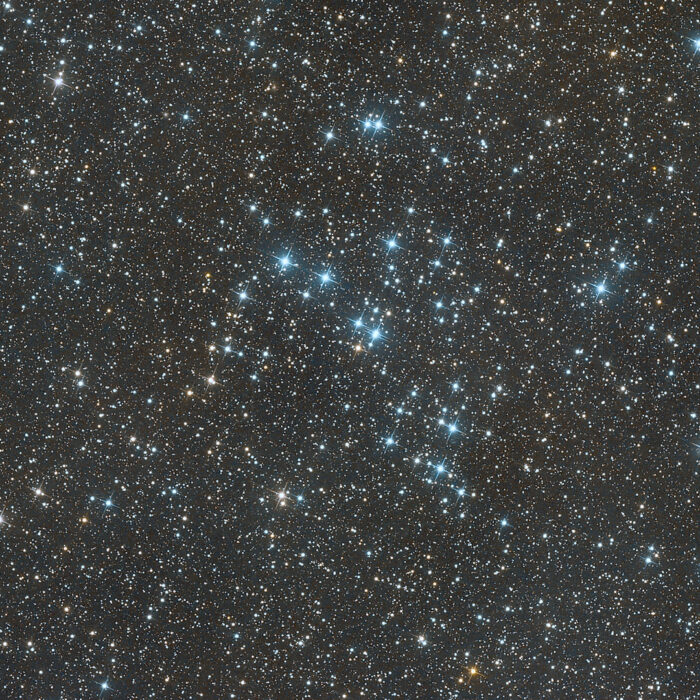

Copyright by WikiSky.org, WikiSky's snapshot tool
The star cluster in the center is NGC 7245.
To the left above the small star cluster is King 9.

ESO, CC BY 4.0, via Wikimedia Commons, Original-Link

The pair of galaxies consists of NGC 7253A (top) and NGC 7253B (bottom).
Still visible in the lower right corner is PGC 69543.

Stephen Rahn from Macon, GA, USA, CC0, via Wikimedia Commons

Copyright by WikiSky.org, WikiSky's snapshot tool

Jschulman555, CC BY-SA 3.0, via Wikimedia Commons
Stephan's quintet consists of the galaxies:
NGC 7317, NGC 7318A, NGC 7318B, NGC 7319 and NGC 7320C.
The galaxies are the yellow areas from right to left in this order.
The somewhat bluish galaxy NGC 7320 is closer to Earth and lies in the foreground of the quintet. It does not belong to the quintet. Since this was determined later, it was replaced in the quintet by NGC 7320C (far left) to make it five galaxies again.

This group of 5 galaxies is called Deer Lick Group.
Diagonally to the lower left comes NGC 7335.
To the left the small galaxy is NGC 7336.
Vertically below NGC 7331 is the small galaxy NGC 7337.
Centered at the lower left edge is NGC 7340.


Adam Block/Mount Lemmon SkyCenter/University of Arizona, CC BY-SA 4.0, via Wikimedia Commons

Hewholooks, CC BY-SA 3.0, via Wikimedia Commons
The star cluster is designated as NGC 7380.
The complete nebula area is Sh2-142 and is named the Wizard Nebula.
To the left below the Magician Nebula, Sh2-143 can be seen.


Copyright by WikiSky.org, WikiSky's snapshot tool

Copyright by WikiSky.org, WikiSky's snapshot tool

In the center of the image is the small galaxy IC 5264.
To the right of it is IC 1459.
On the left edge of the image is NGC 7418.

The large nebula area is Sh2-154.
The star cluster below is NGC 7419.



Jschulman555, CC BY 3.0, via Wikimedia Commons
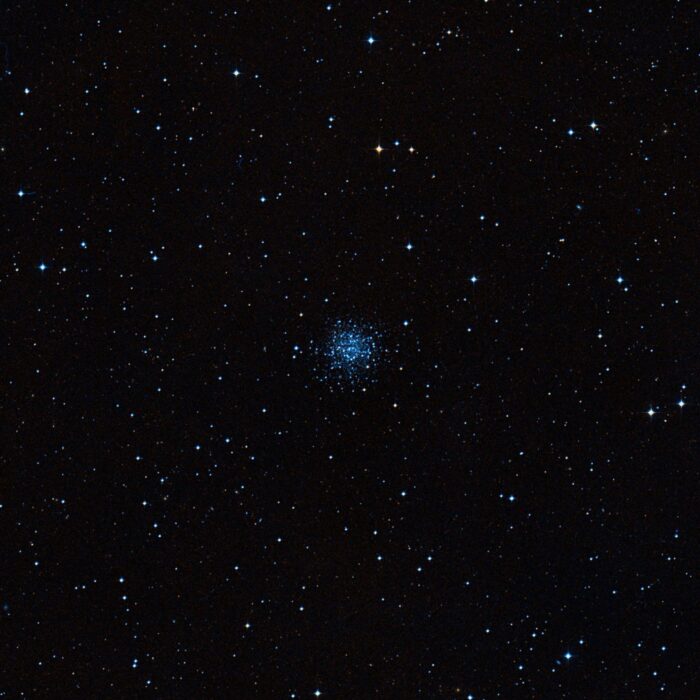
Copyright by WikiSky.org, WikiSky's snapshot tool

Jschulman555, CC BY-SA 3.0, via Wikimedia Commons
In the foreground is the molecular cloud MBM 54.

The smaller star cluster centered is King 19.
The red dot at the bottom of the right side is IC 1470. Surrounding it are the nebulae BFS 15 (below), BFS 16 (diagonally right above), BFS 17 (immediately to the left), BFS 18 (to the left of BFS 17), and BFS 19 (above).
To the left of the star cluster is NGC 7510.

In the upper right is M52 and just to the upper left of it are the foothills of the star cluster Czernik 43.
Diagonally below on the left is the Bubble Nebula NGC 7635 (Sh2-162).
The large nebula on the left is Sh2-157 with the underlying star cluster NGC 7510 looking out at the edge of the image and to the right almost in the center is the faint nebula Sh2-159. The bright spot in the center of the red nebula of Sh2-157 is Sh2-157A.
The small bright red nebula on the right is NGC 7538 (Sh2-158) with the adjacent large nebula area Sh2-161.

Copyright by WikiSky.org, WikiSky's snapshot tool
Below the center of the image is NGC 7550 and centered above is the galaxy NGC 7549. The two galaxies form Arp 99.
To the left of NGC 7549 is NGC 7553.
To the right is NGC 7547.
At the bottom left is NGC 7558.
All five galaxies form the galaxy group HCG 93.

Copyright by WikiSky.org, WikiSky's snapshot tool
Below the center of the image is NGC 7550 and centered above is the galaxy NGC 7549. The two galaxies form Arp 99.
To the left of NGC 7549 is NGC 7553.
To the right is NGC 7547.
At the bottom left is NGC 7558.
All five galaxies form the galaxy group HCG 93.

Copyright by WikiSky.org, WikiSky's snapshot tool
Below the center of the image is NGC 7550 and centered above is the galaxy NGC 7549. The two galaxies form Arp 99.
To the left of NGC 7549 is NGC 7553.
To the right is NGC 7547.
At the bottom left is NGC 7558.
All five galaxies form the galaxy group HCG 93.

The four galaxies form the Grus quartet. It consists of NGC 7552 (right edge of image), NGC 7582 (center of image), NGC 7590 (small galaxy at the bottom) and NGC 7599 (far left).

Copyright by WikiSky.org, WikiSky's snapshot tool
Below the center of the image is NGC 7550 and centered above is the galaxy NGC 7549. The two galaxies form Arp 99.
To the left of NGC 7549 is NGC 7553.
To the right is NGC 7547.
At the bottom left is NGC 7558.
All five galaxies form the galaxy group HCG 93.

Copyright by WikiSky.org, WikiSky's snapshot tool
Below the center of the image is NGC 7550 and centered above is the galaxy NGC 7549. The two galaxies form Arp 99.
To the left of NGC 7549 is NGC 7553.
To the right is NGC 7547.
At the bottom left is NGC 7558.
All five galaxies form the galaxy group HCG 93.

The four galaxies form the Grus quartet. It consists of NGC 7552 (right edge of image), NGC 7582 (center of image), NGC 7590 (small galaxy at the bottom) and NGC 7599 (far left).

Copyright by WikiSky.org, WikiSky's snapshot tool
The small galaxy at the right edge is NGC 7576.

The four galaxies form the Grus quartet. It consists of NGC 7552 (right edge of image), NGC 7582 (center of image), NGC 7590 (small galaxy at the bottom) and NGC 7599 (far left).

The four galaxies form the Grus quartet. It consists of NGC 7552 (right edge of image), NGC 7582 (center of image), NGC 7590 (small galaxy at the bottom) and NGC 7599 (far left).

Copyright by WikiSky.org, WikiSky's snapshot tool
The large galaxy is NGC 7603, the small galaxy at the left spiral arm is NGC 7603B (PGC 71041).
It is not entirely clear whether the two galaxies interact.
According to the data of the NED database the two galaxies are located at different distances from Earth (NGC 7603 about 400 Mio. Ly. (121 Mpc), NGC 7603 about 780 million yr. (240 Mpc)
http://ned.ipac.caltech.edu/byname?objname=NGC+7603&hconst=67.8&omegam=0.308&omegav=0.692&wmap=4&corr_z=1
http://ned.ipac.caltech.edu/byname?objname=NGC+7603B&hconst=67.8&omegam=0.308&omegav=0.692&wmap=4&corr_z=1

Copyright by WikiSky.org, WikiSky's snapshot tool

On the far left is M52.
Right below is the star cluster Czernik 43.
In the upper right is the Bubble Nebula NGC 7635.


On the far left is M52.
Right below is the star cluster Czernik 43.
In the upper right is the Bubble Nebula NGC 7635.



Copyright by WikiSky.org, WikiSky's snapshot tool
On the right is the galaxy NGC 7679.
On the left is NGC 7682.
Together they form the pair of galaxies Arp 216.


Copyright by WikiSky.org, WikiSky's snapshot tool
On the right is the galaxy NGC 7679.
On the left is NGC 7682.
Together they form the pair of galaxies Arp 216.

Judy Schmidt, CC BY 2.0, via Wikimedia Commons

ESO/VST ATLAS team. Acknowledgement: Durham University/CASU/WFAU, CC BY 4.0, via Wikimedia Commons, Original-Link

Copyright by WikiSky.org, WikiSky's snapshot tool

The bright nebula in the center is NGC 7822 (Sh2-171).
The star cluster at the left edge of Sh2-171 is Berkeley 59.
At the upper left edge of the large nebula is the star cluster NGC 7762 .
On the far right is the nebula Sh2-170 in the center of which is the star cluster Stock 18.
Below at one third of the right edge is vdB 2.
Between vdB 2 and Sh2-170 is the planetary nebula Sh1-118.
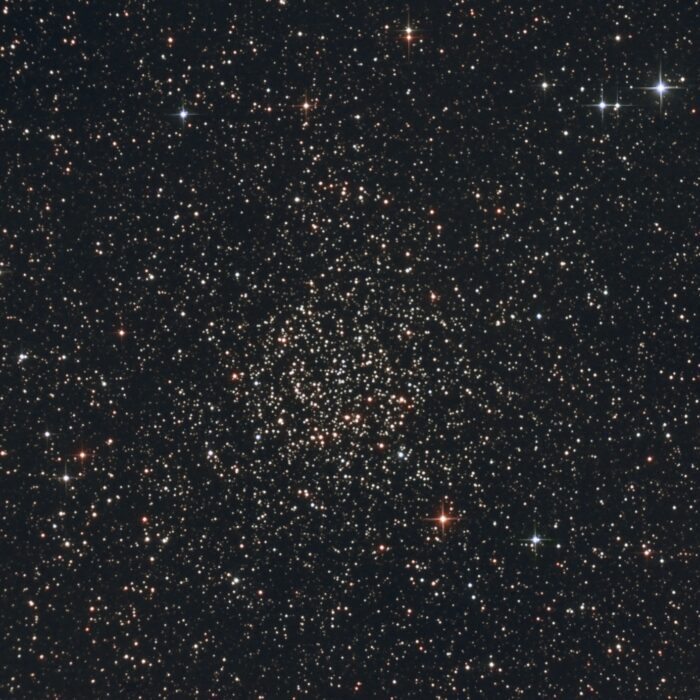


Adam Block/Mount Lemmon SkyCenter/University of Arizona, CC BY-SA 4.0, via Wikimedia Commons
The left galaxy is NGC 7805.
The right galaxy is NGC 7806.
Together they form the galaxy pair Arp 112.
The small galaxy on the right is PGC 111.

Adam Block/Mount Lemmon SkyCenter/University of Arizona, CC BY-SA 4.0, via Wikimedia Commons
The left galaxy is NGC 7805.
The right galaxy is NGC 7806.
Together they form the galaxy pair Arp 112.
The small galaxy on the right is PGC 111.

Hewholooks, CC BY-SA 3.0, via Wikimedia Commons

The bright nebula in the center is NGC 7822 (Sh2-171).
The star cluster at the left edge of Sh2-171 is Berkeley 59.
At the upper left edge of the large nebula is the star cluster NGC 7762 .
On the far right is the nebula Sh2-170 in the center of which is the star cluster Stock 18.
Below at one third of the right edge is vdB 2.
Between vdB 2 and Sh2-170 is the planetary nebula Sh1-118.

Copyright by Legacy Surveys / D. Lang (Perimeter Institute), CC BY 4.0
At upper left is NGC 7828 (Arp 144).
Below it on the right is Arp 51.